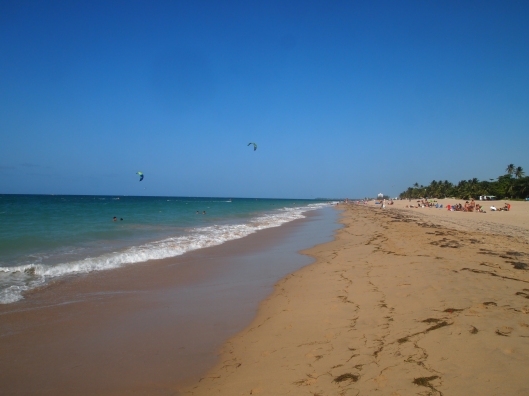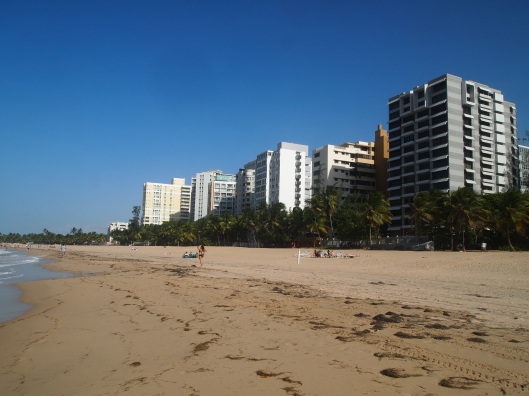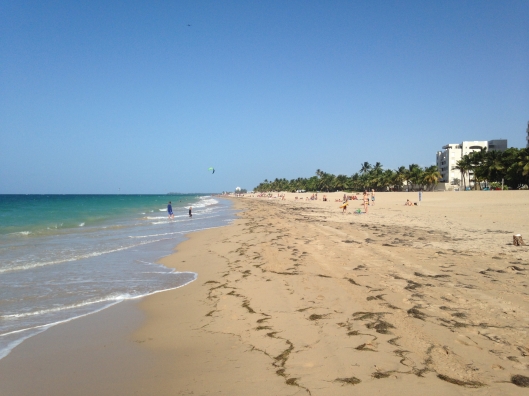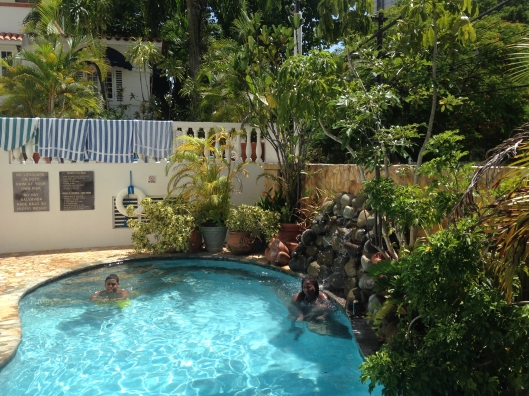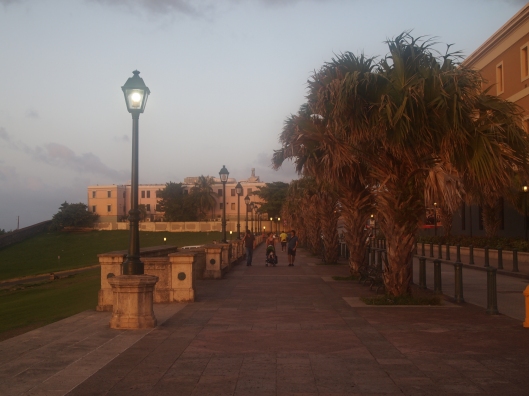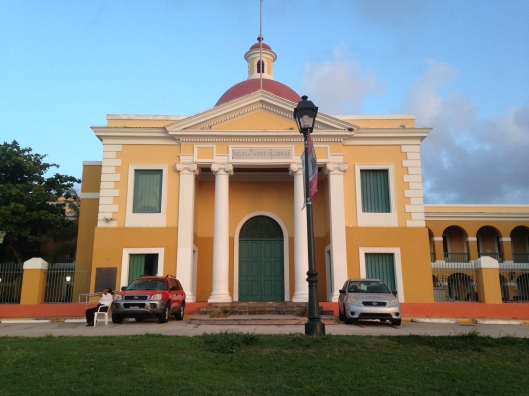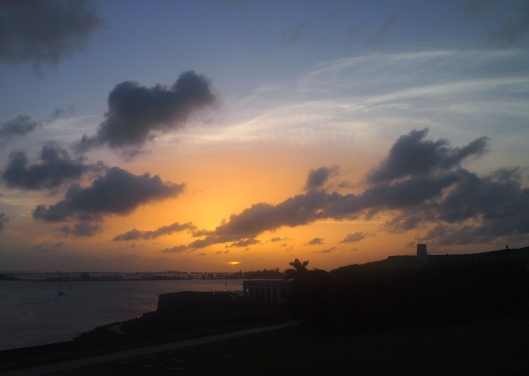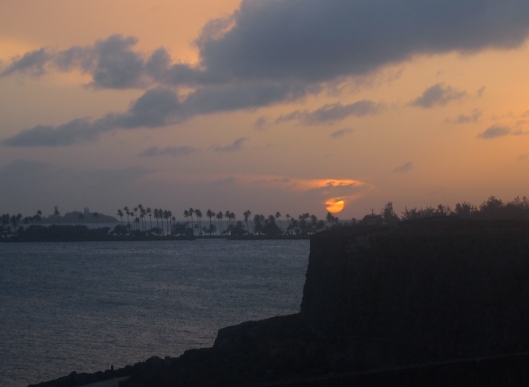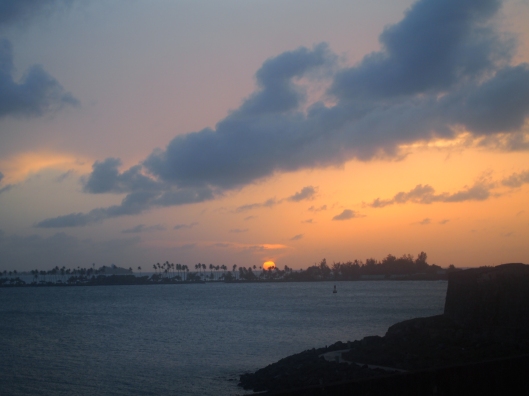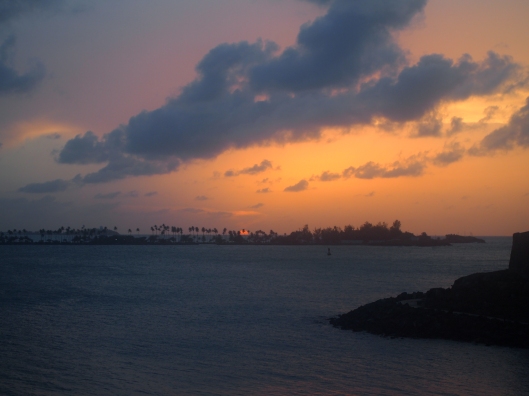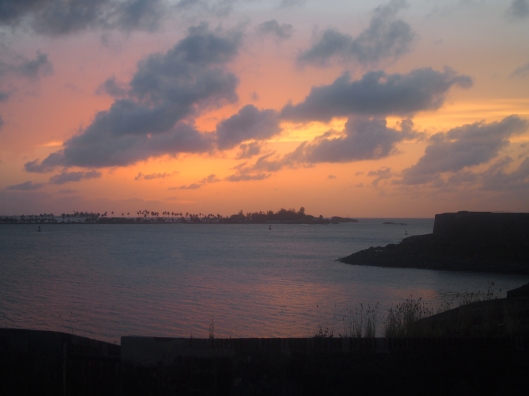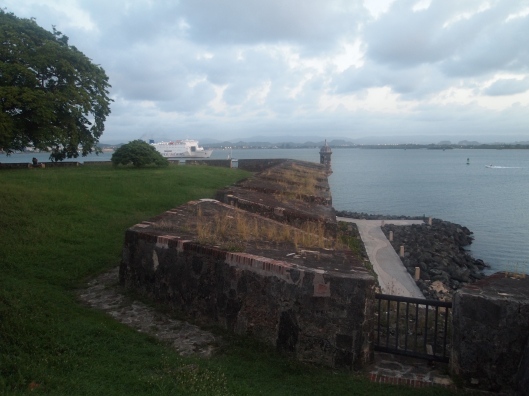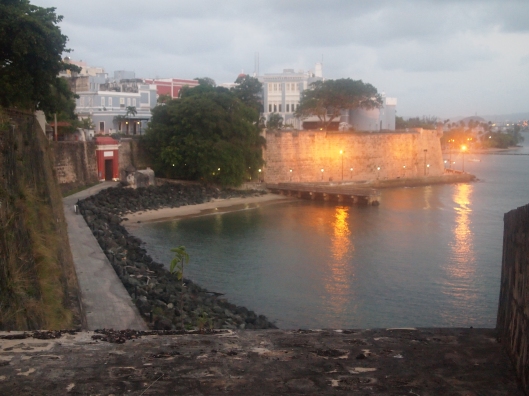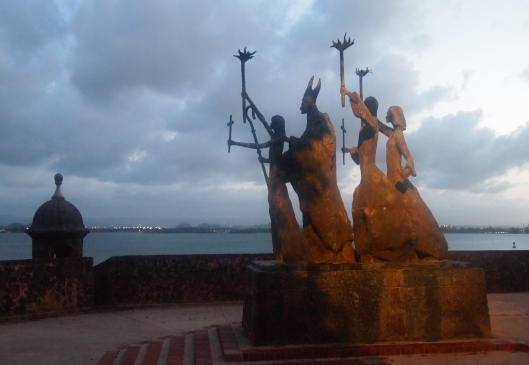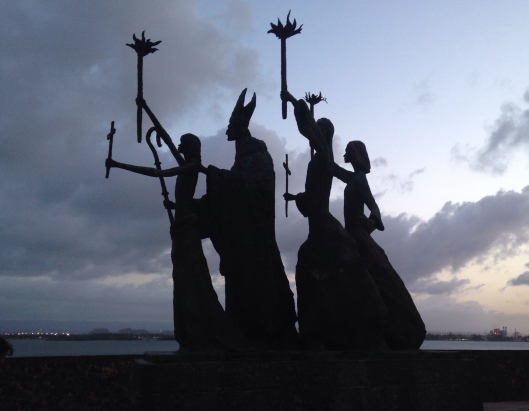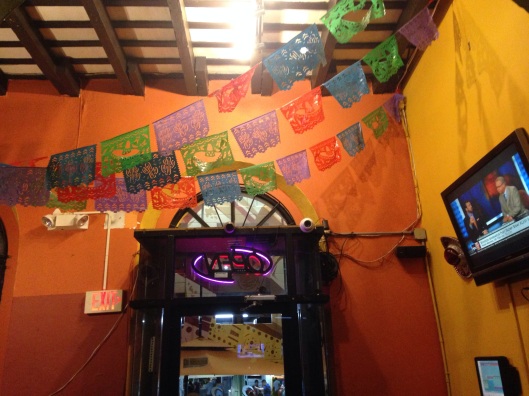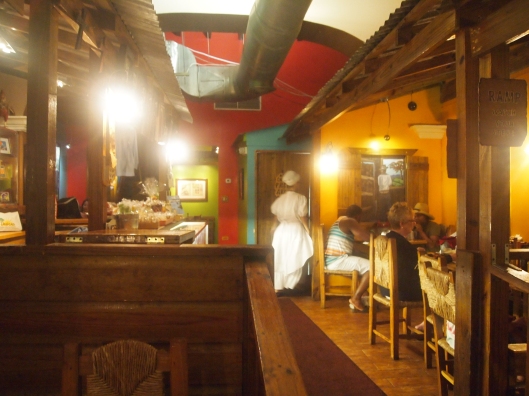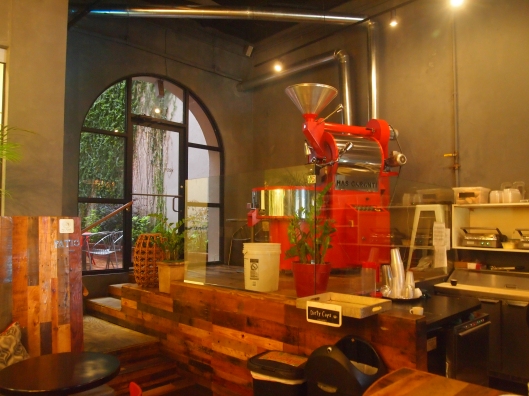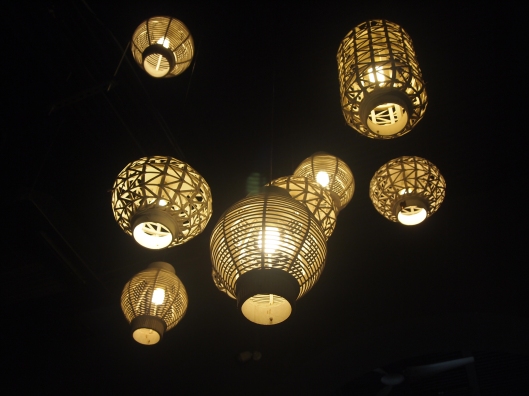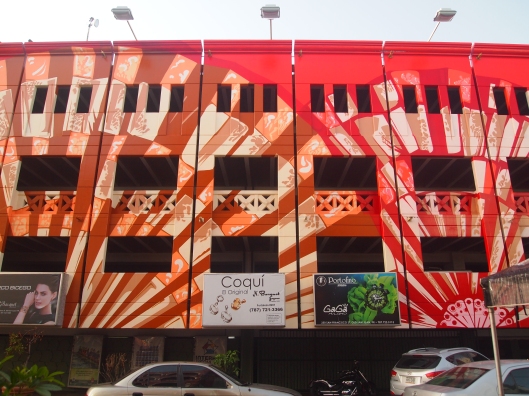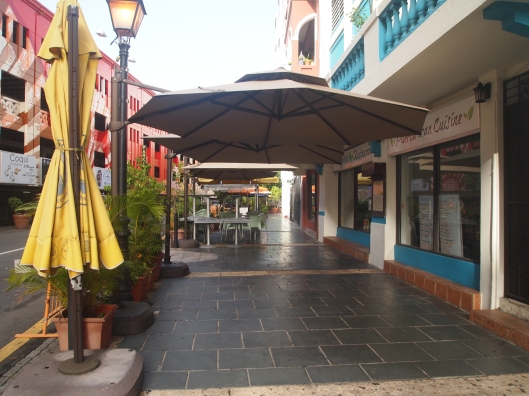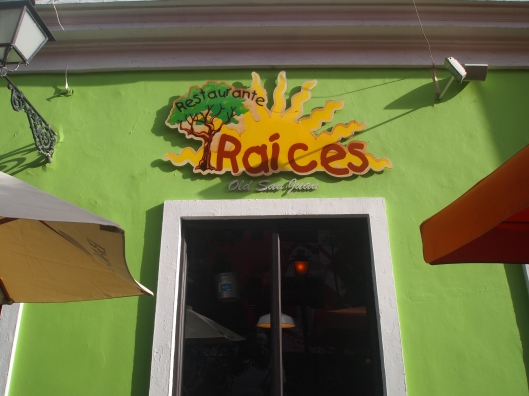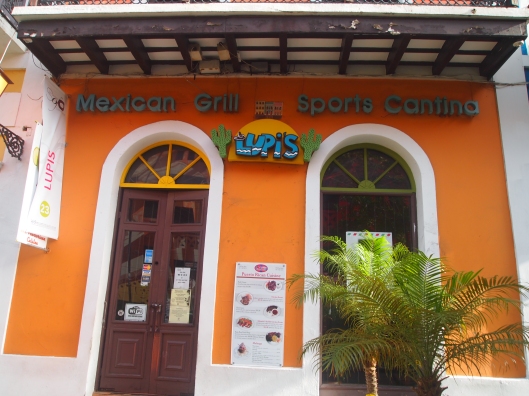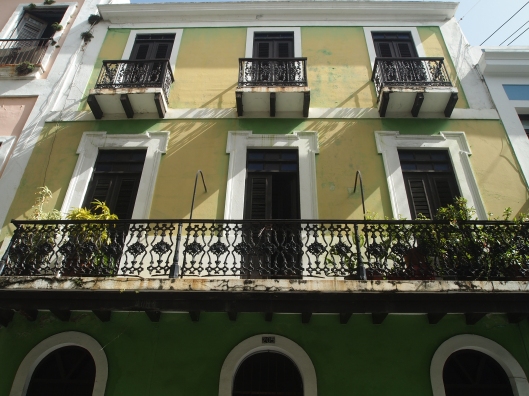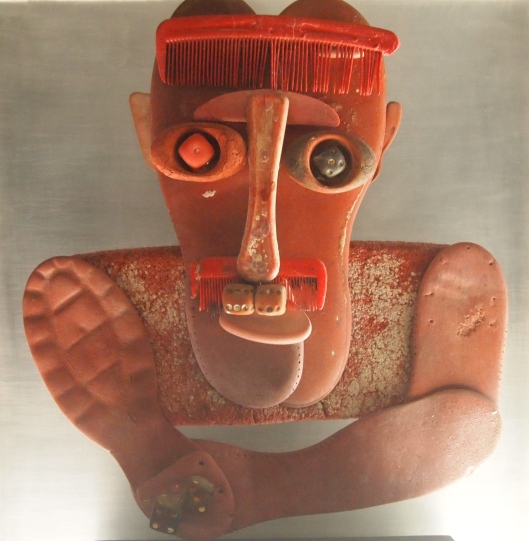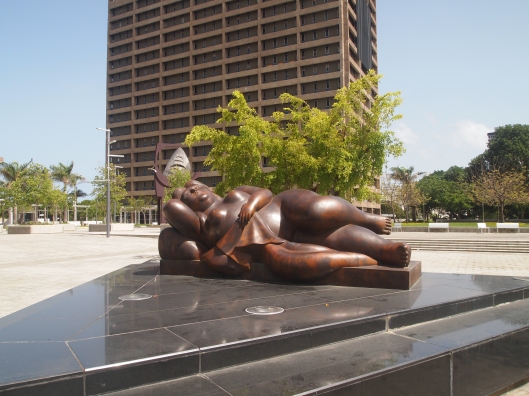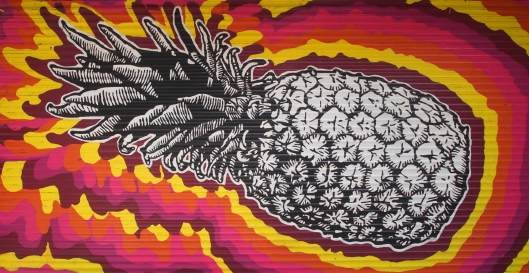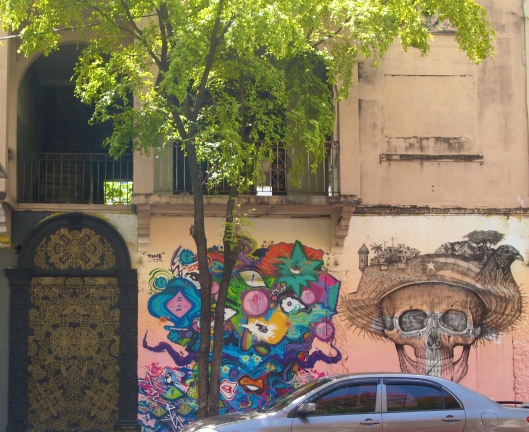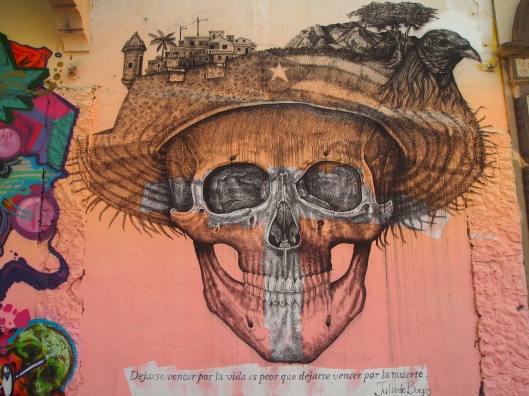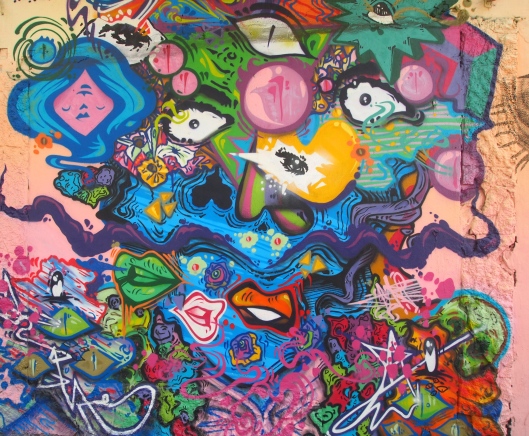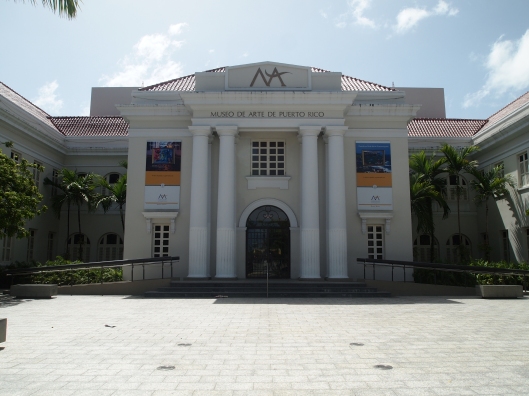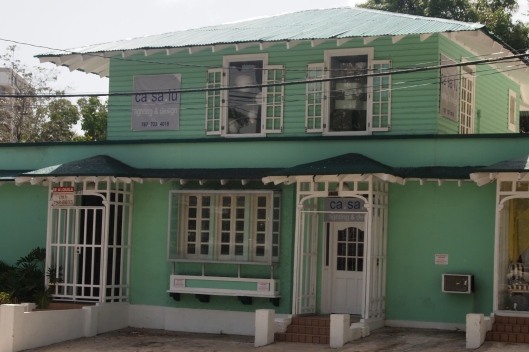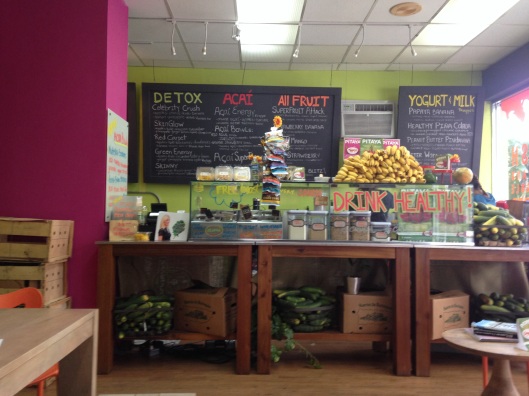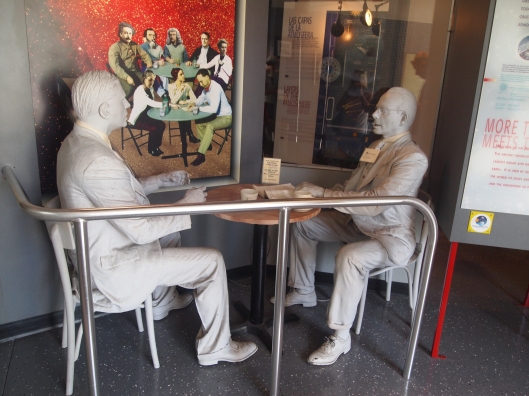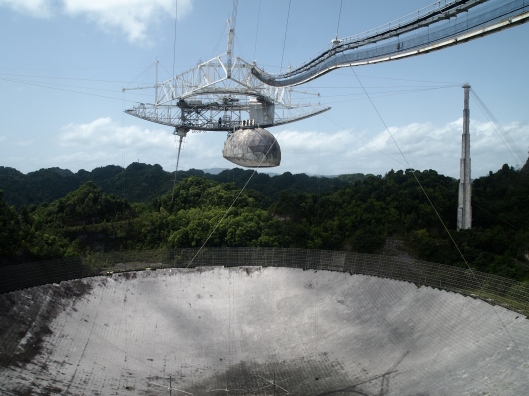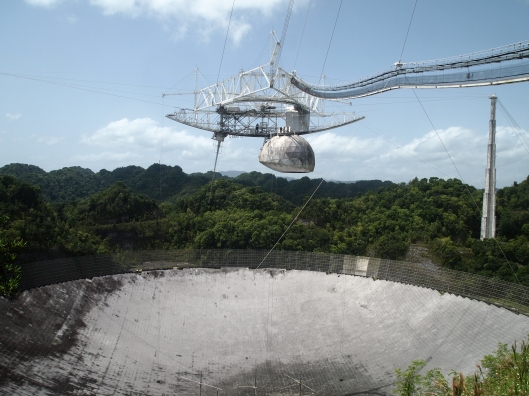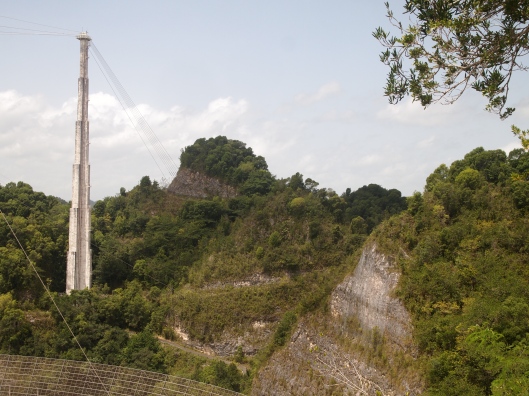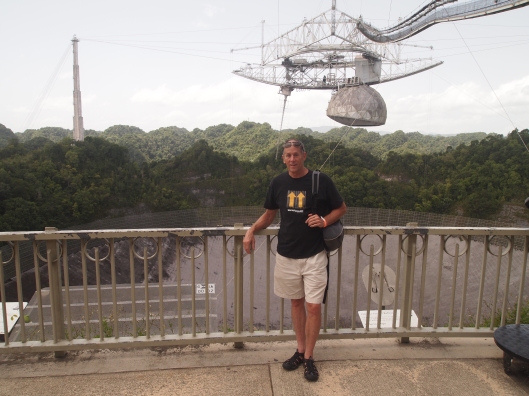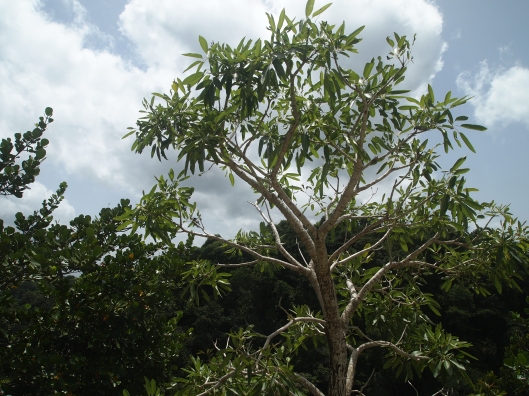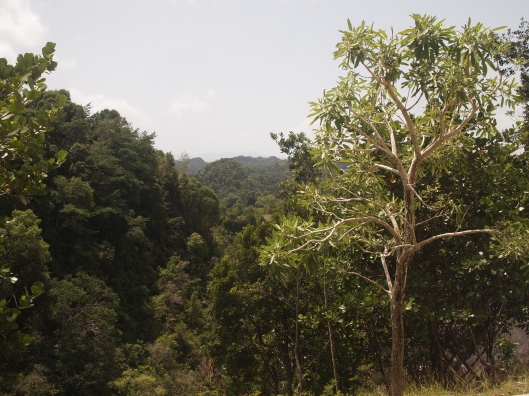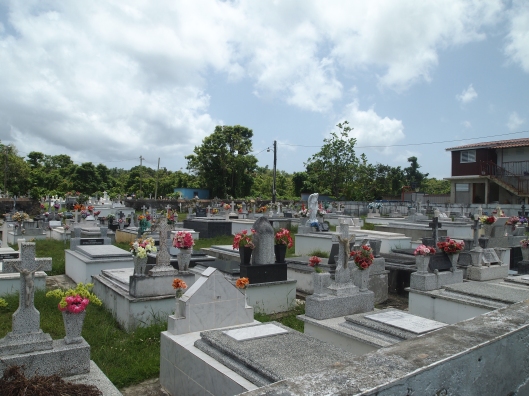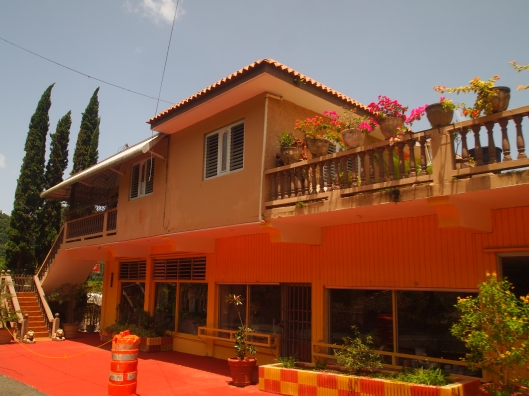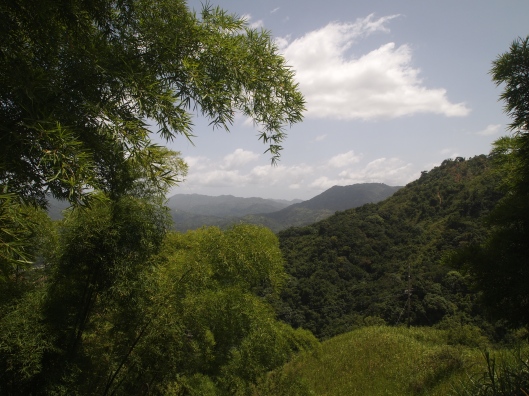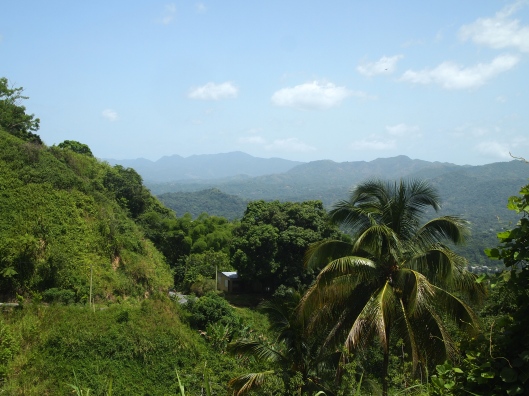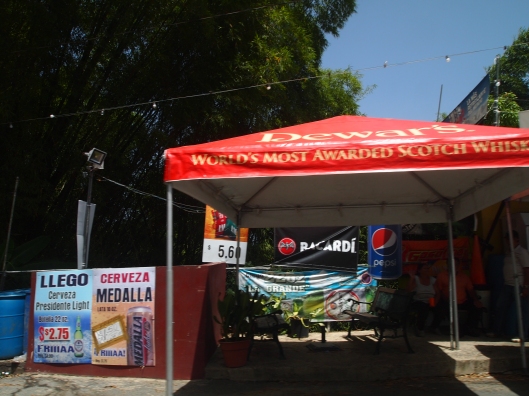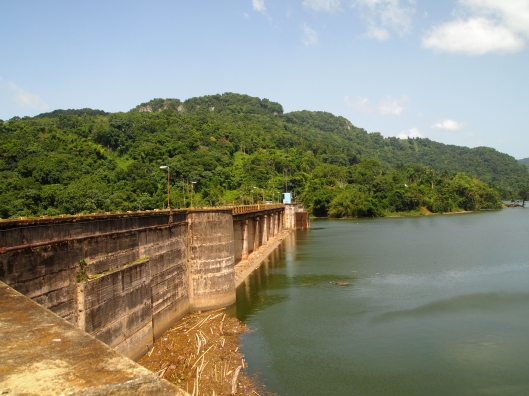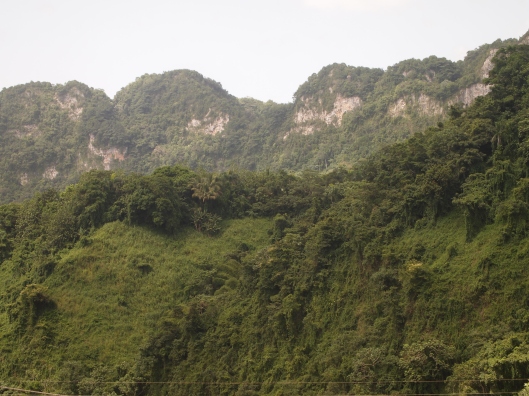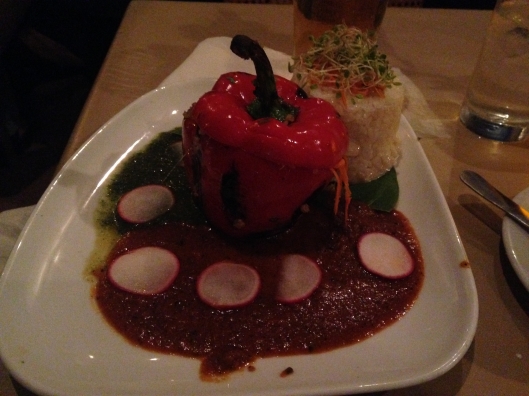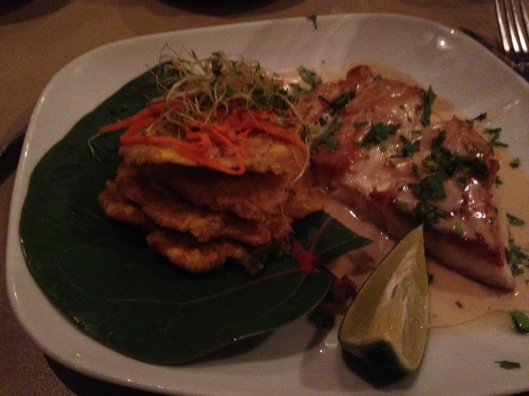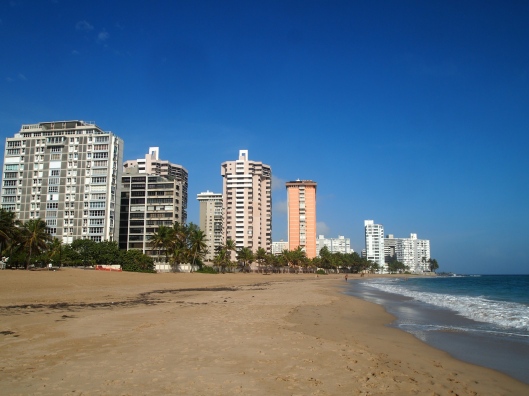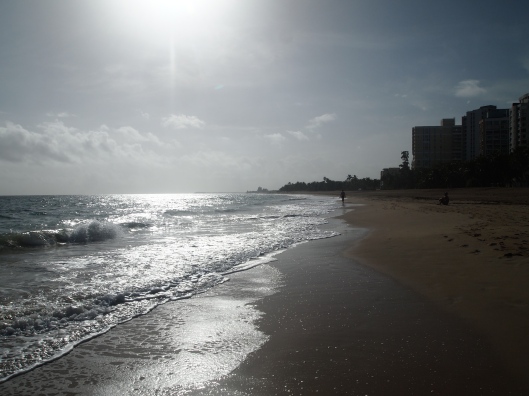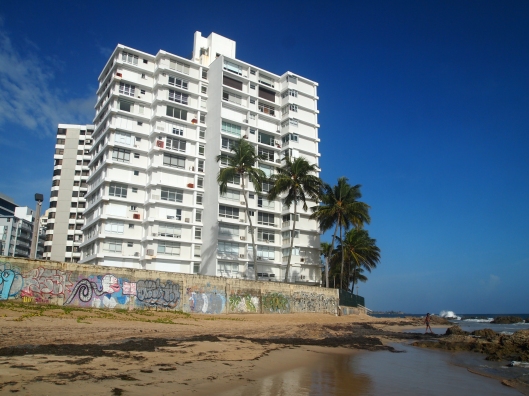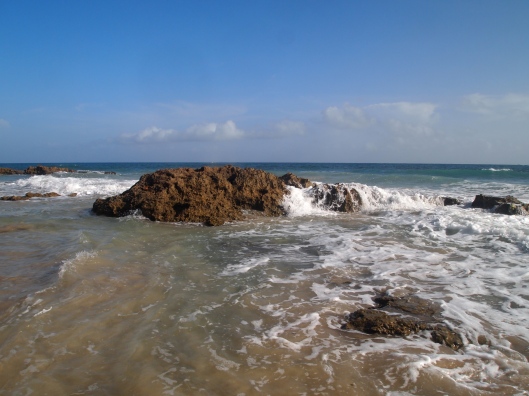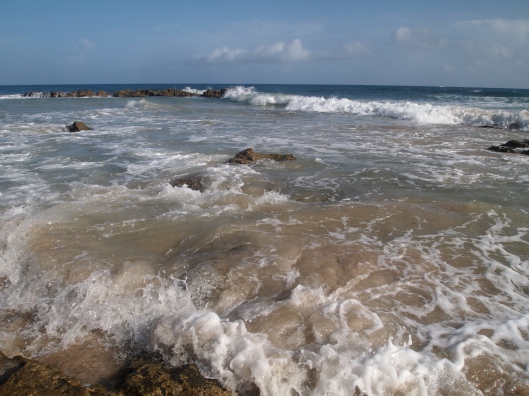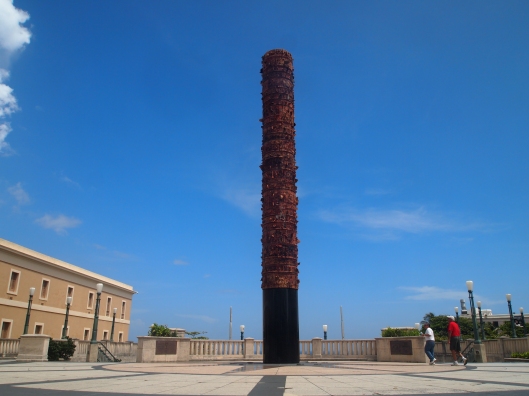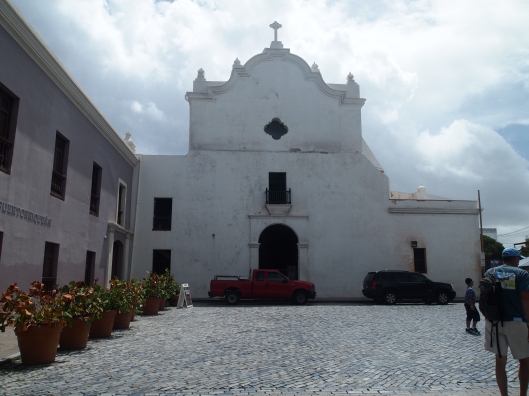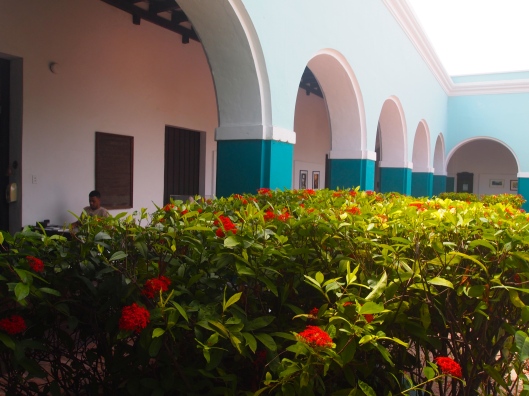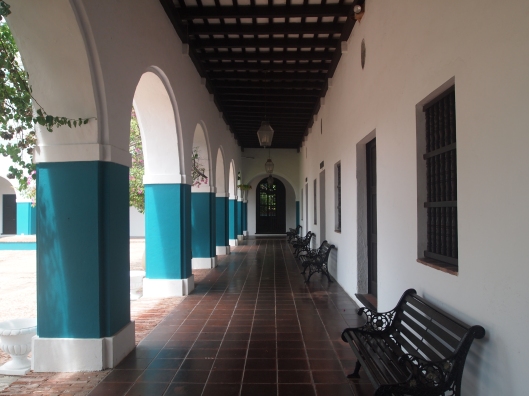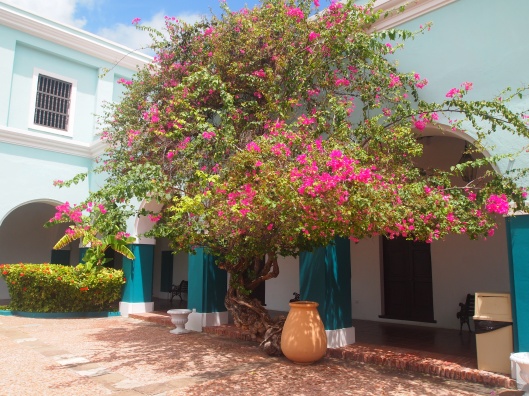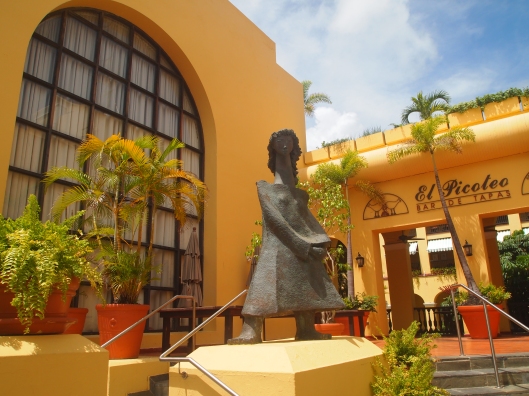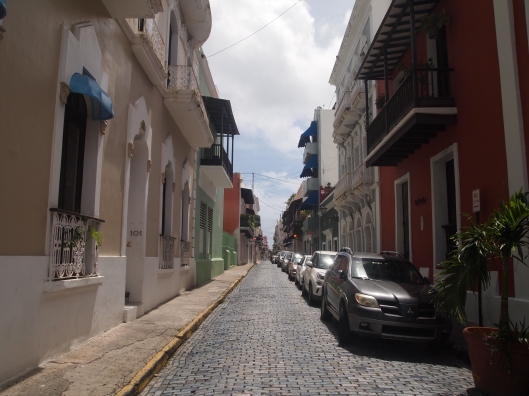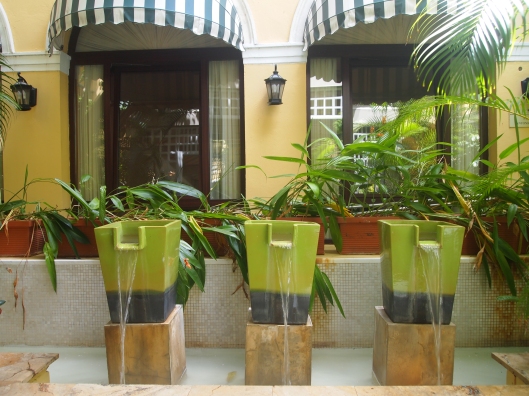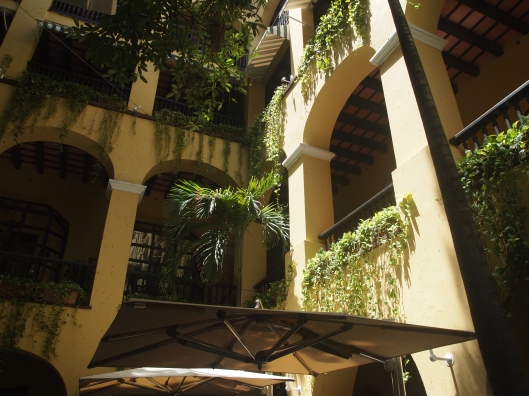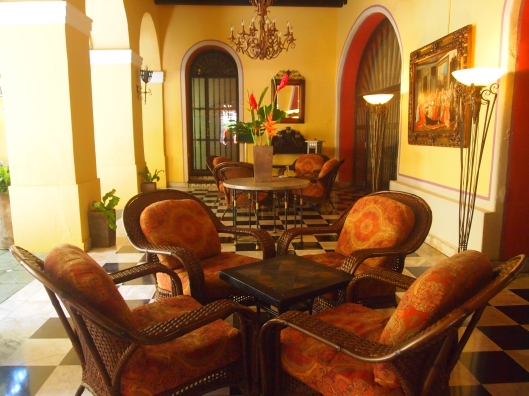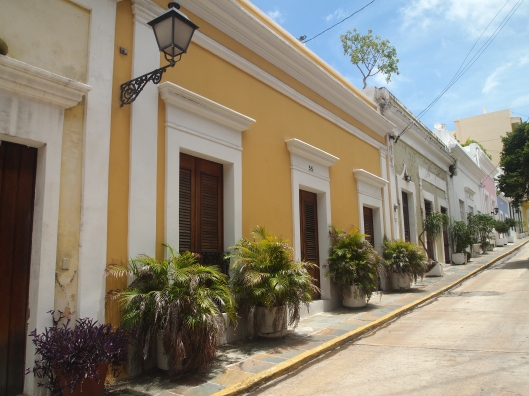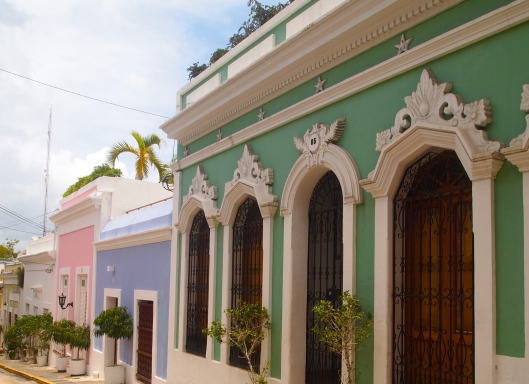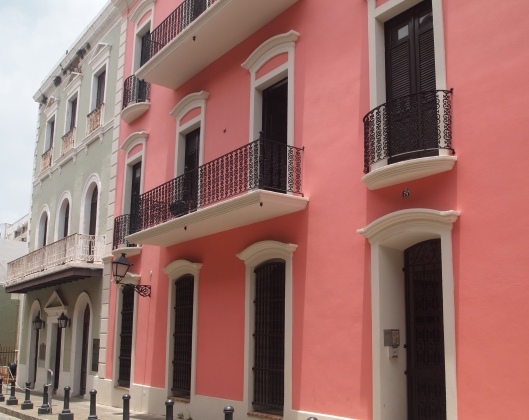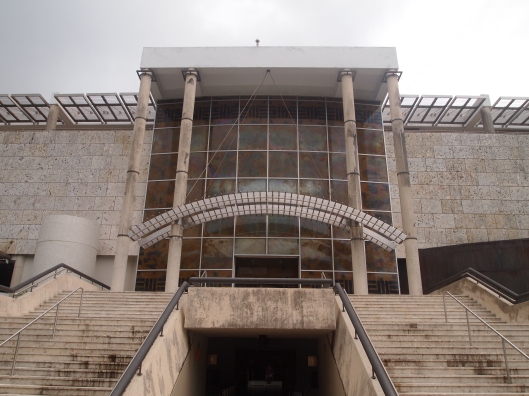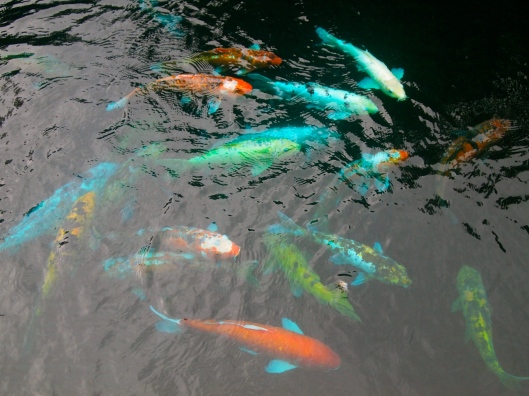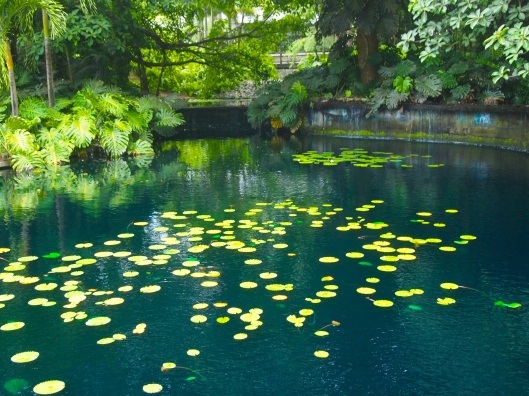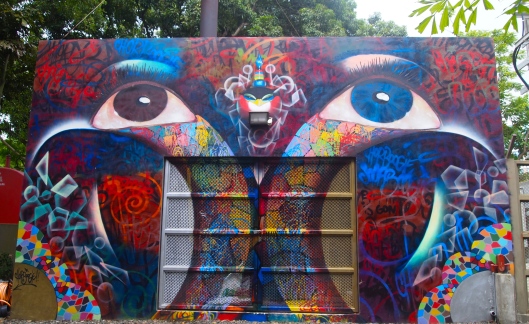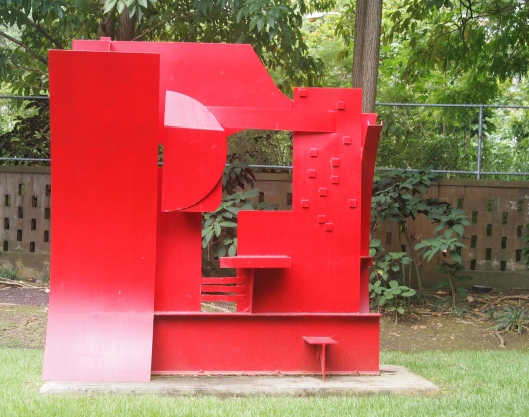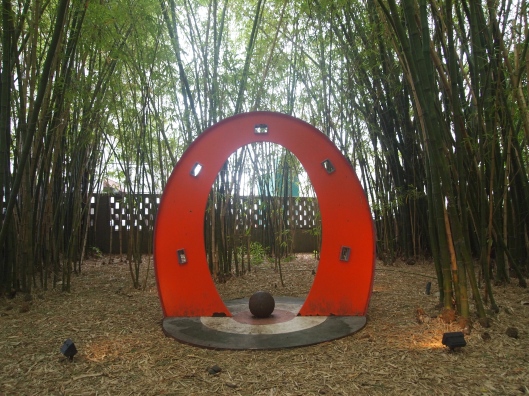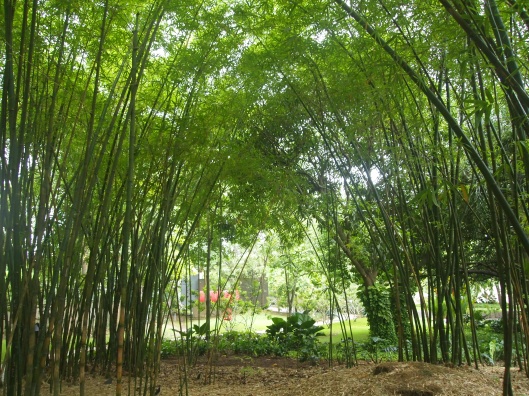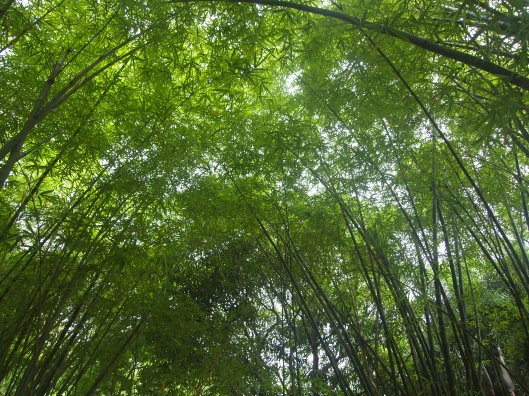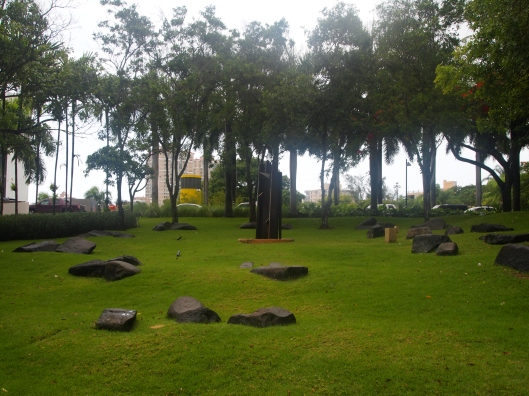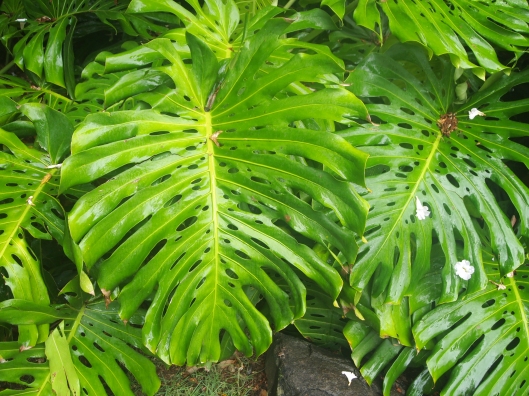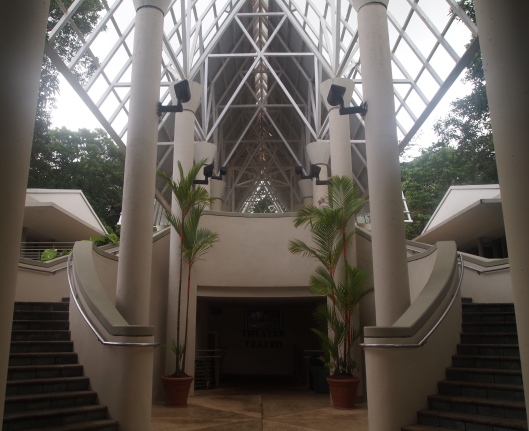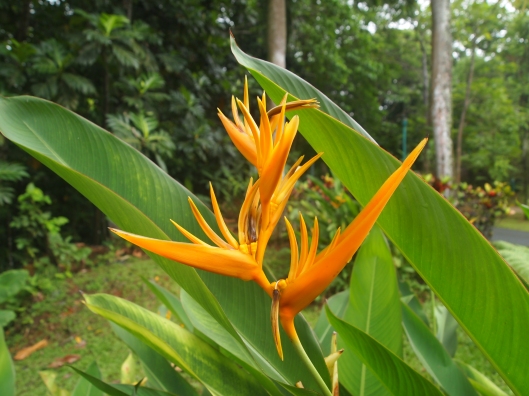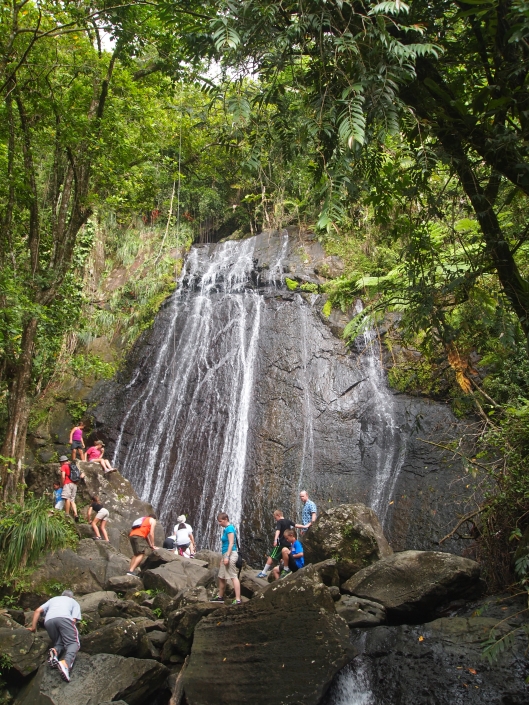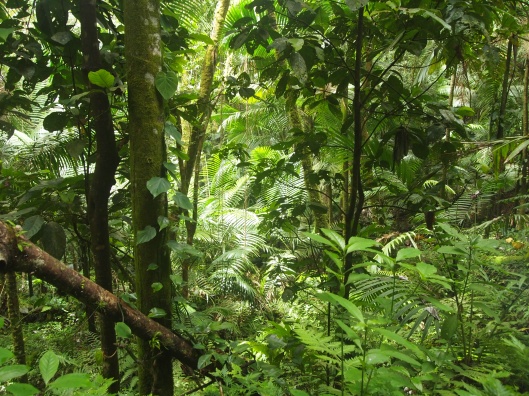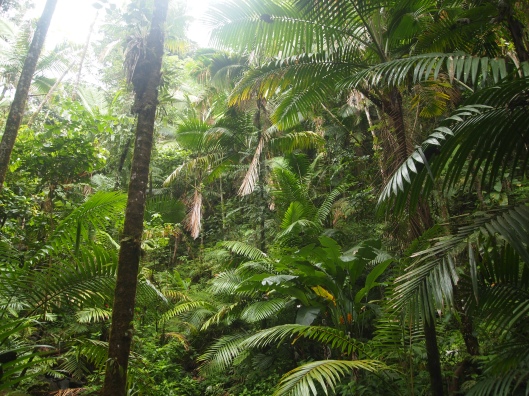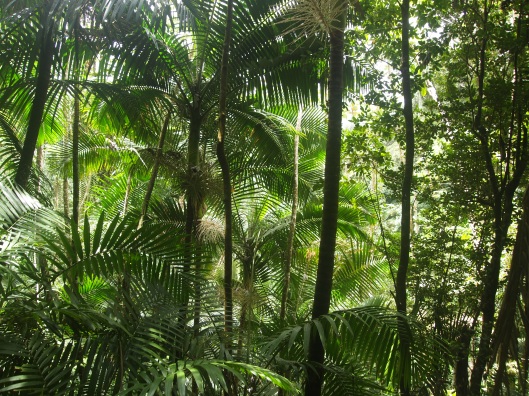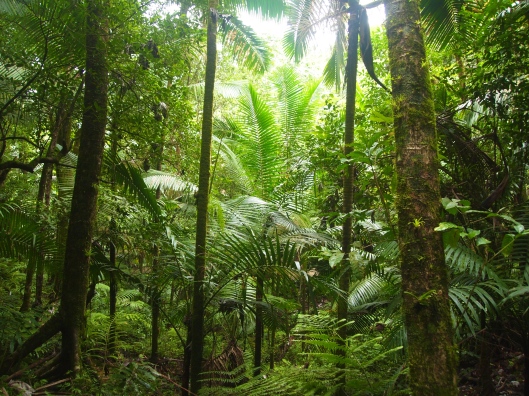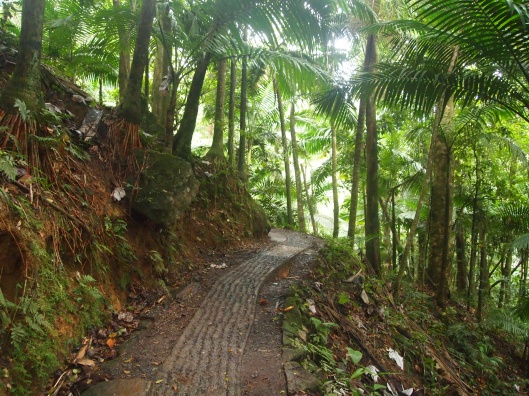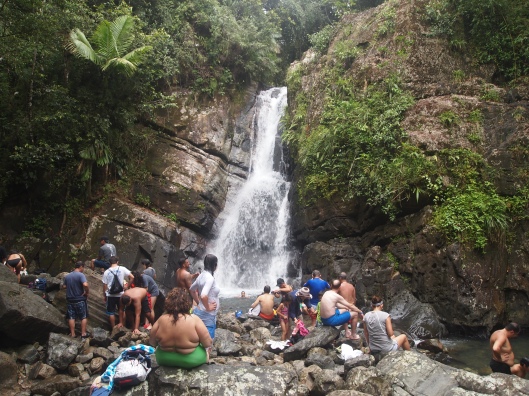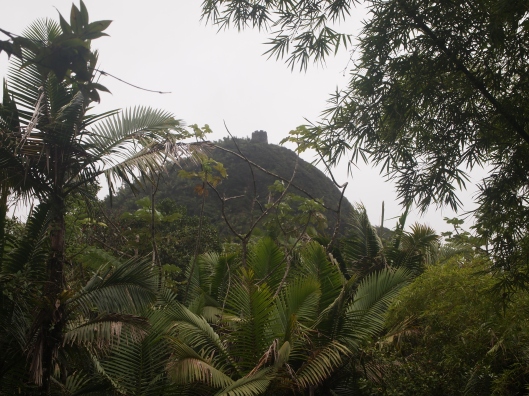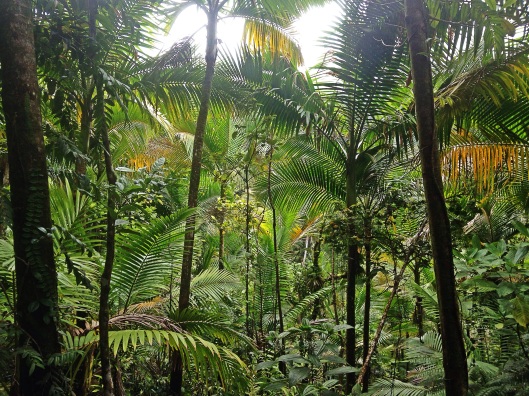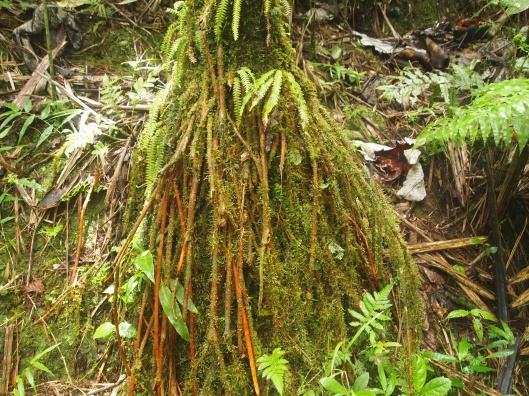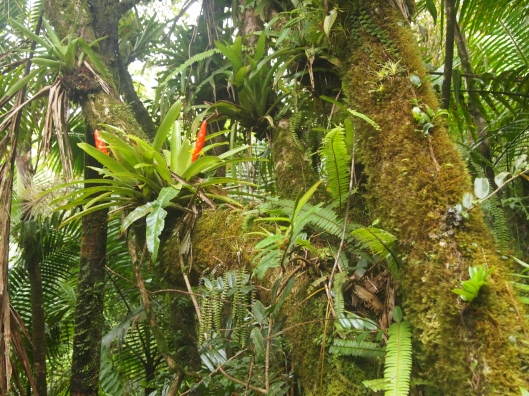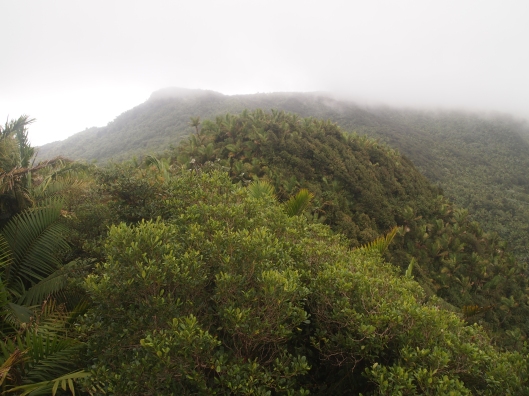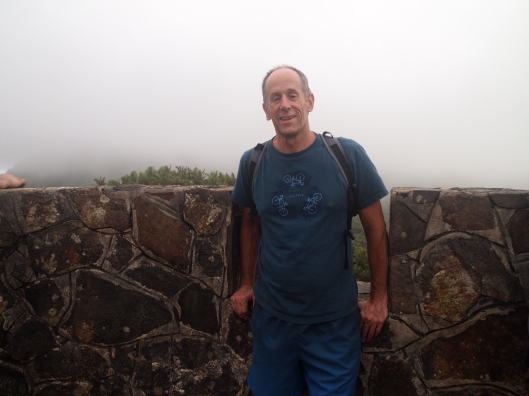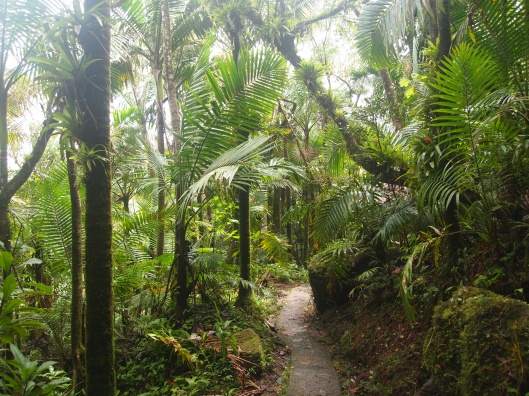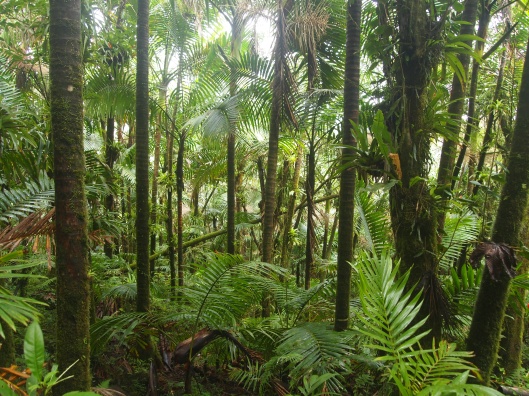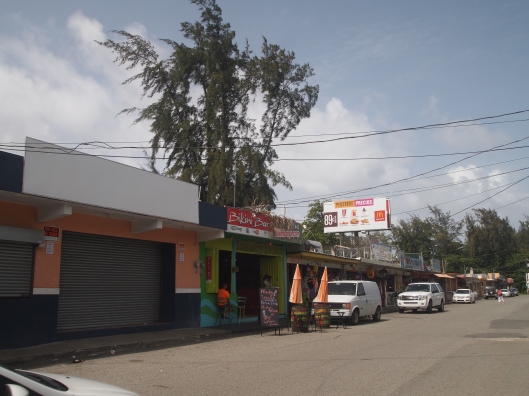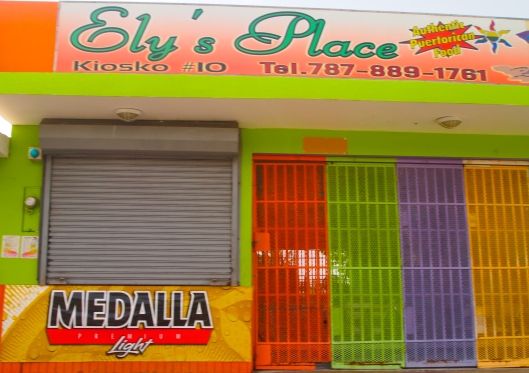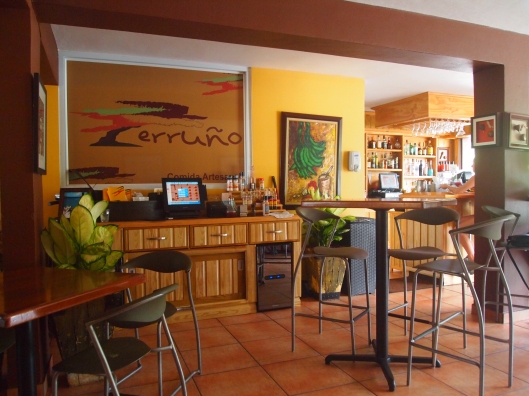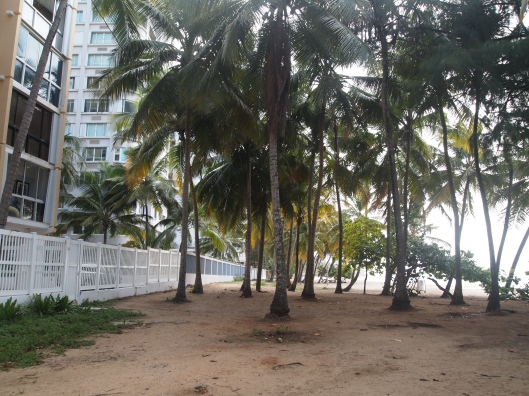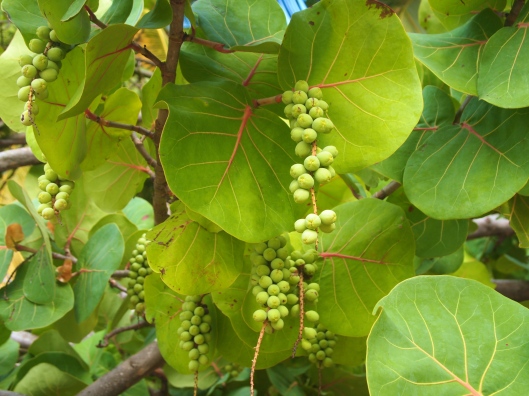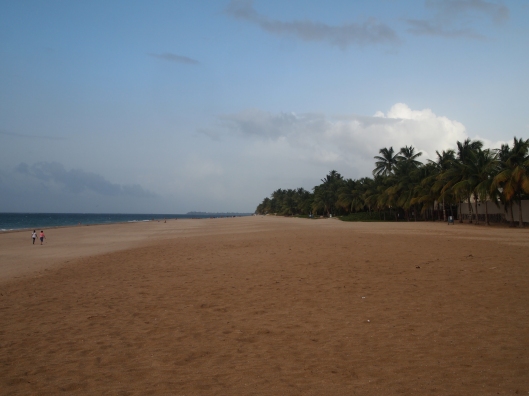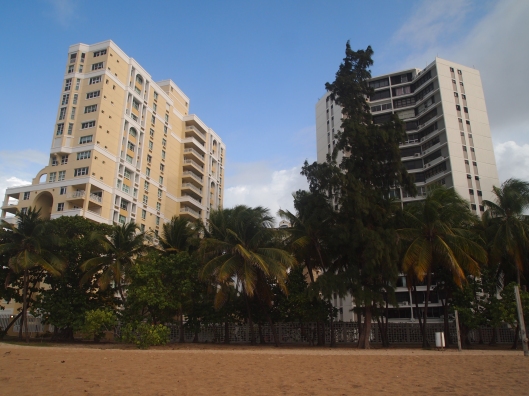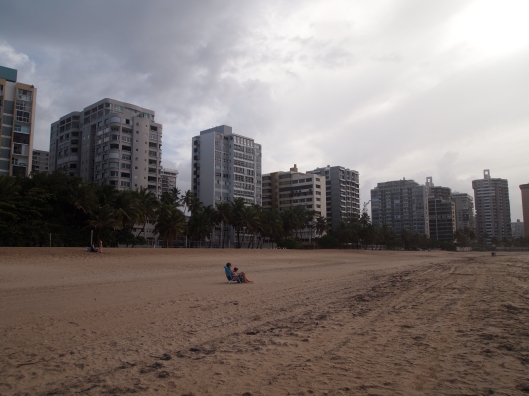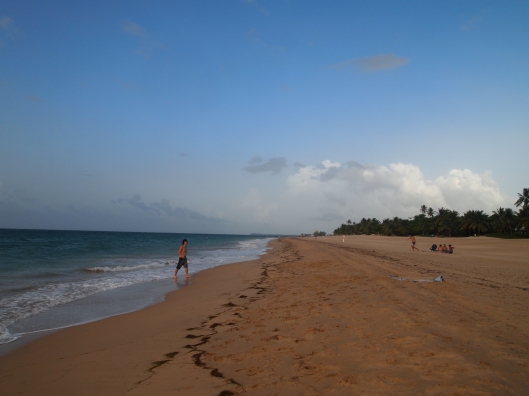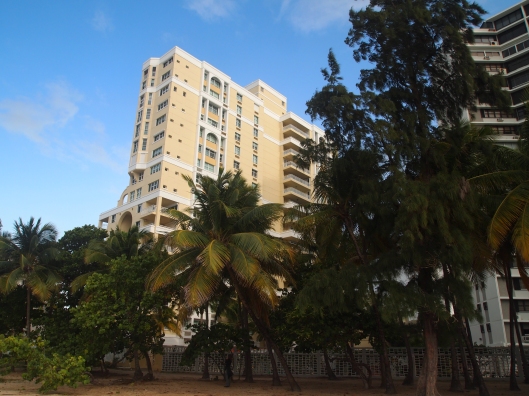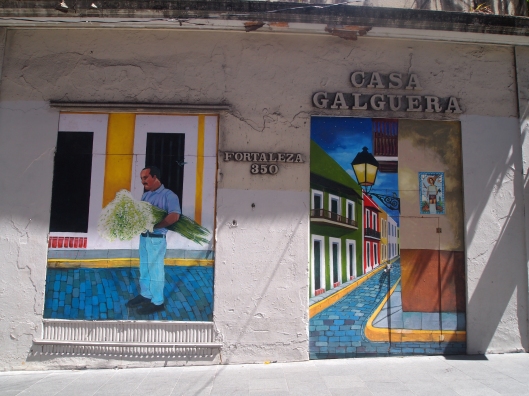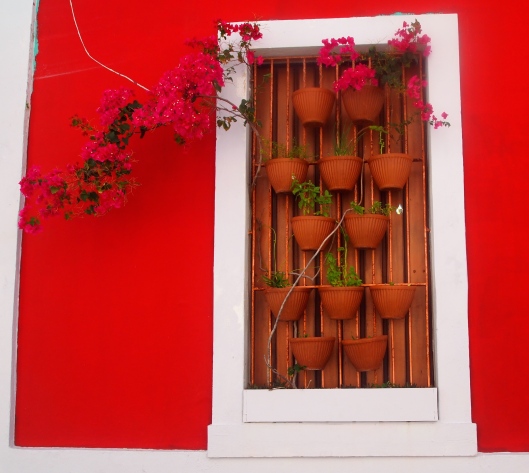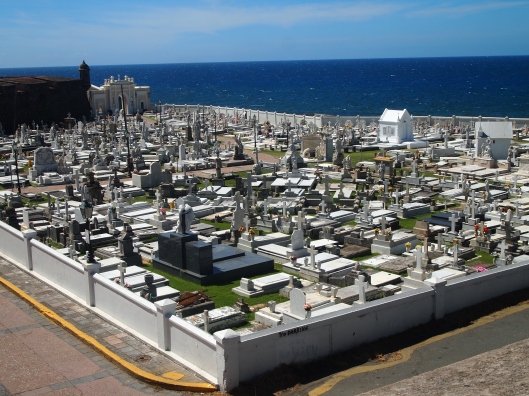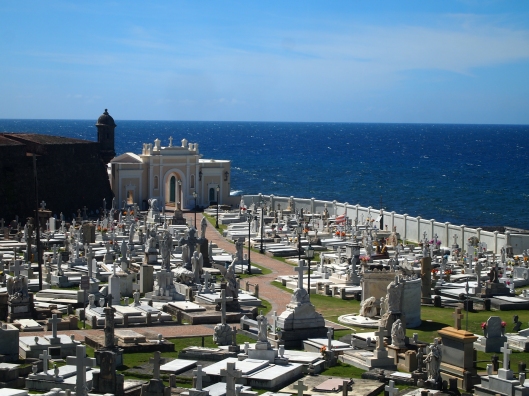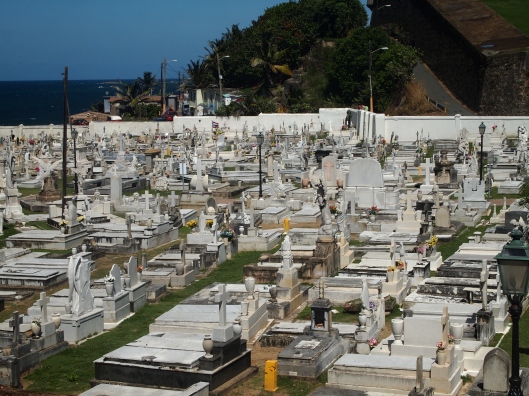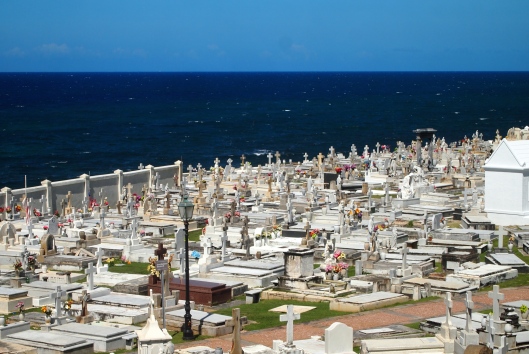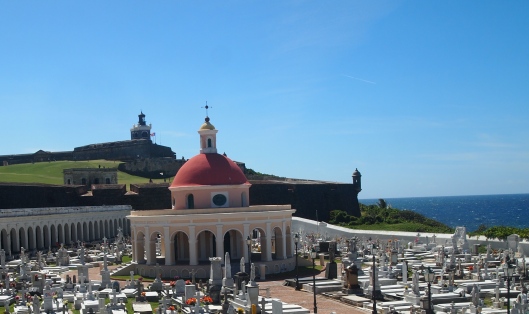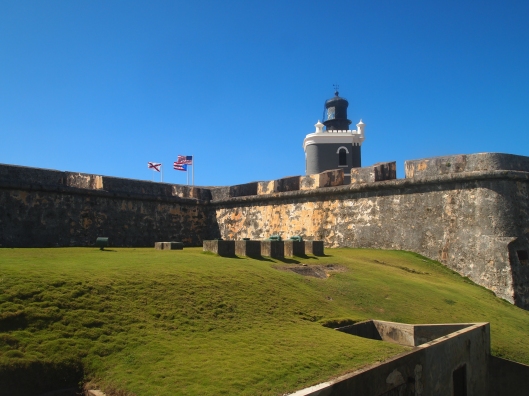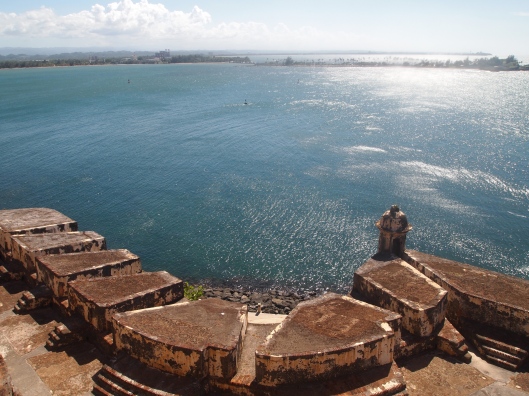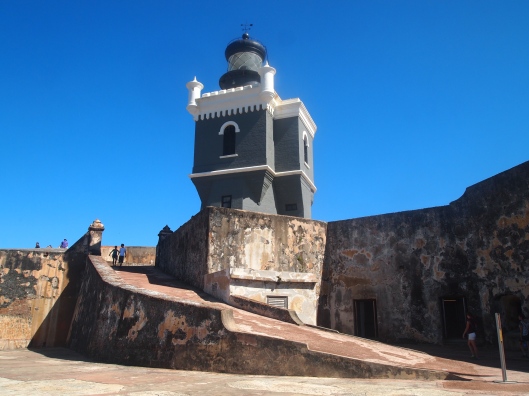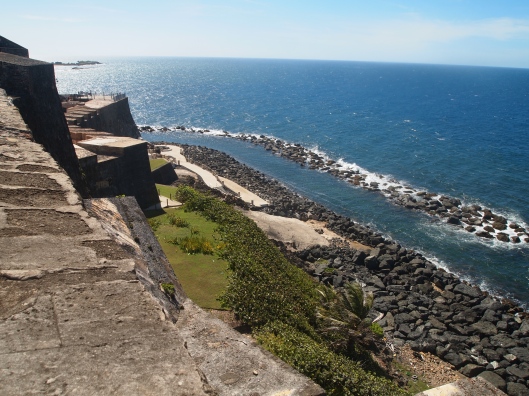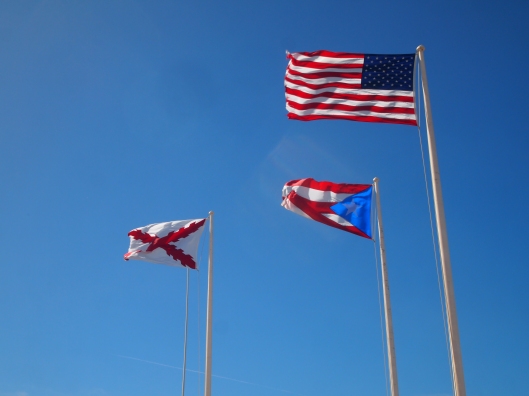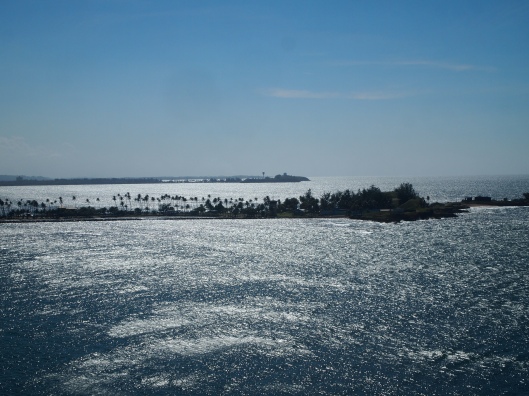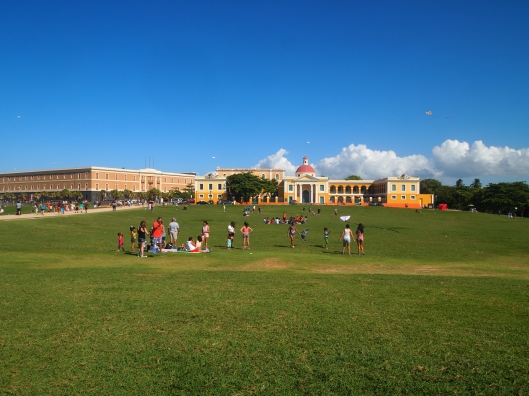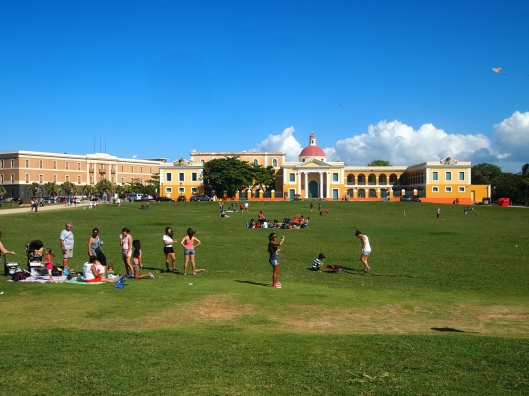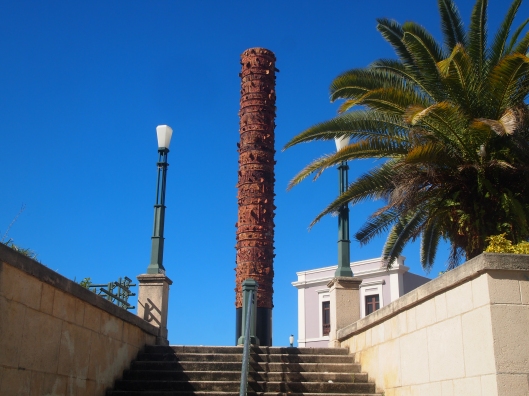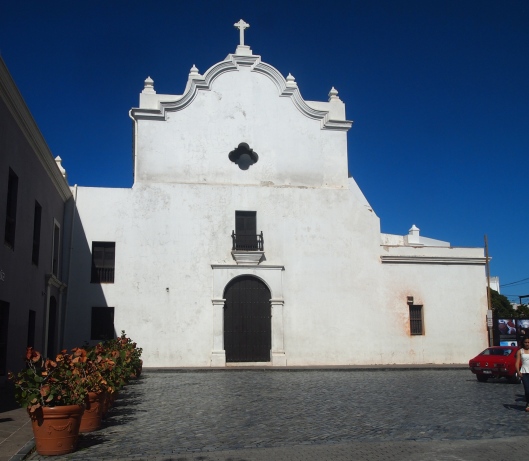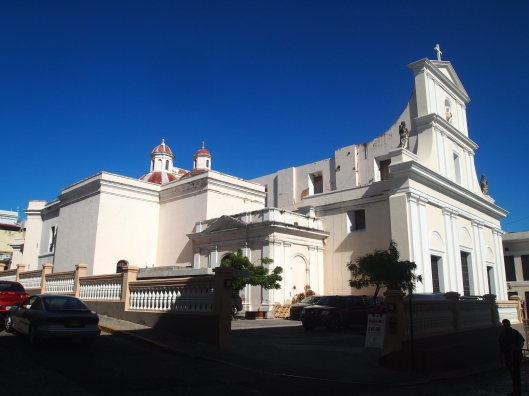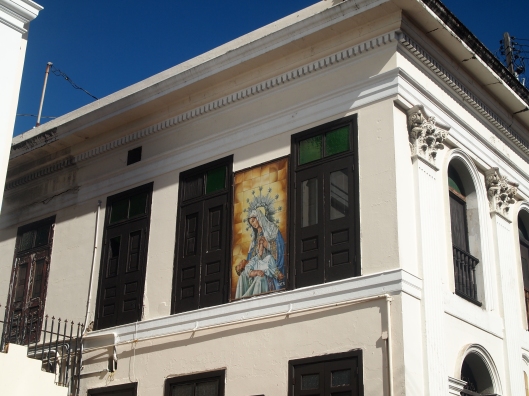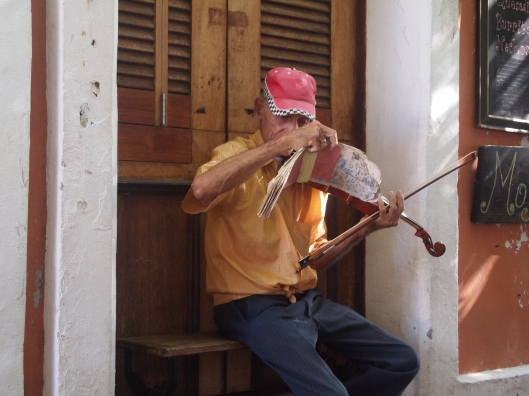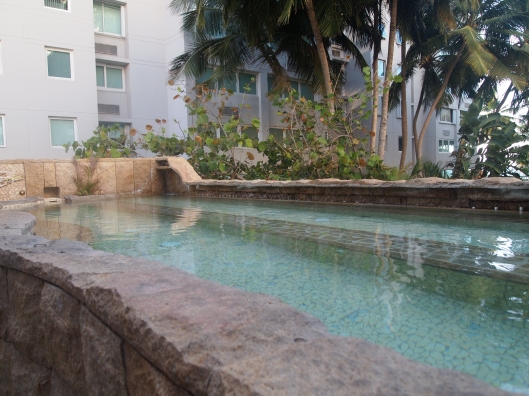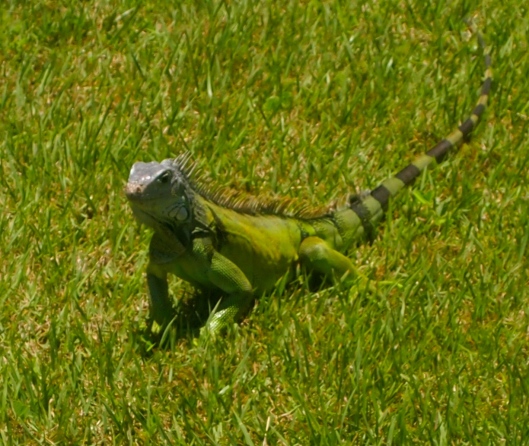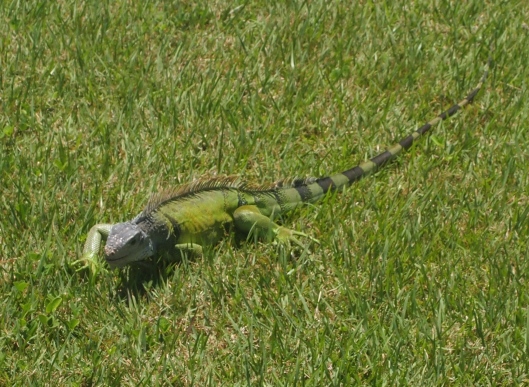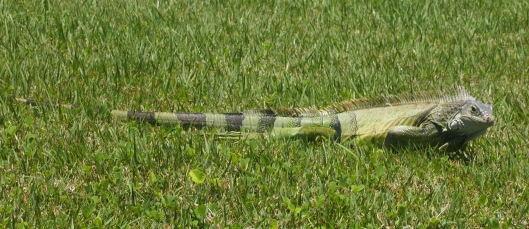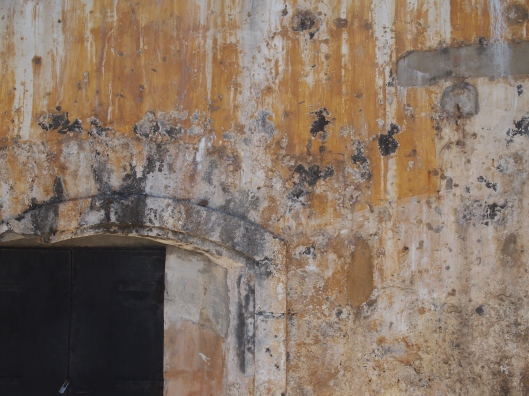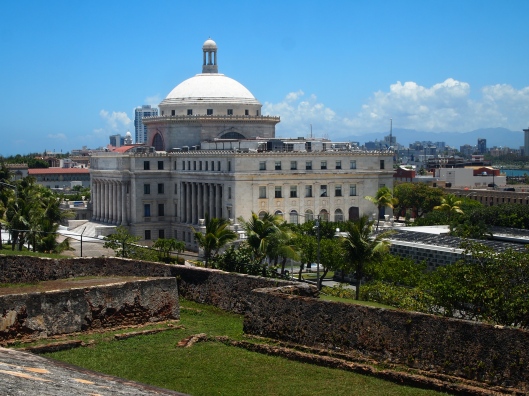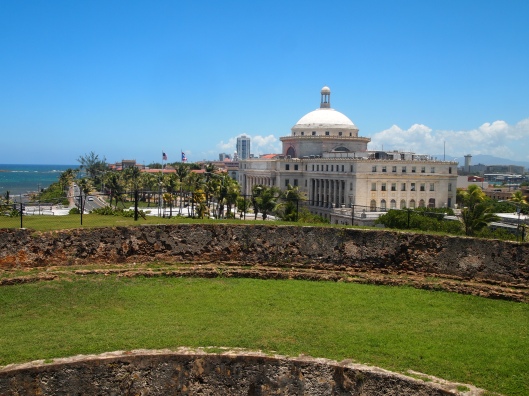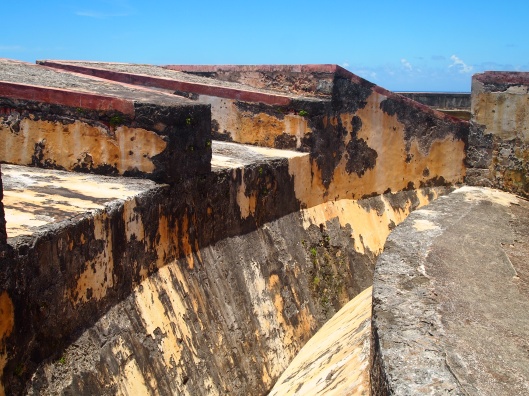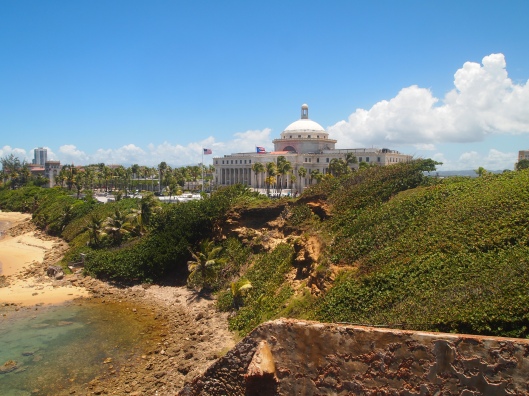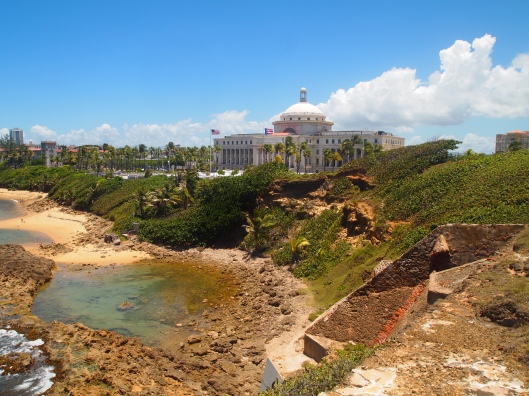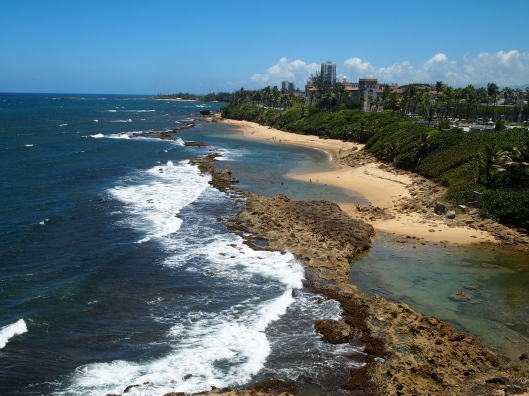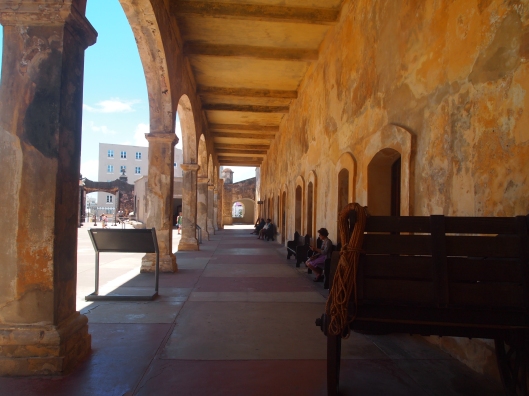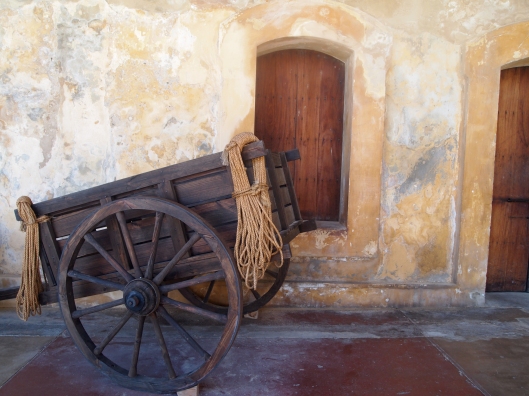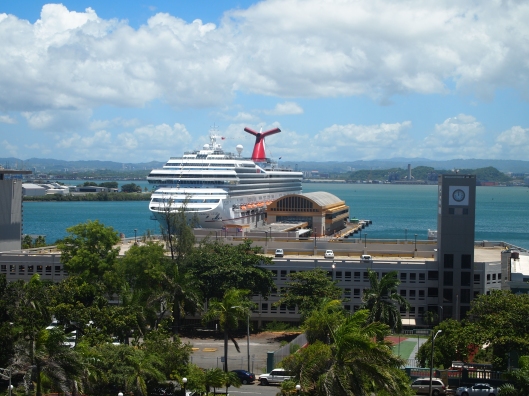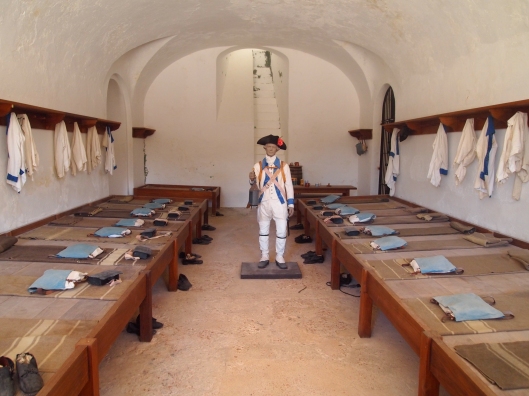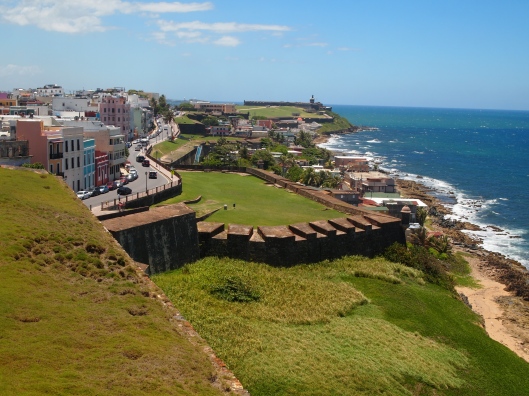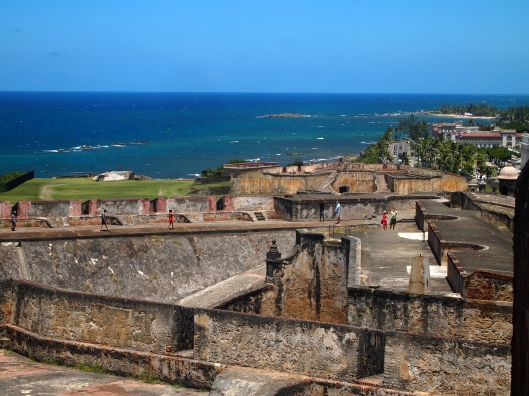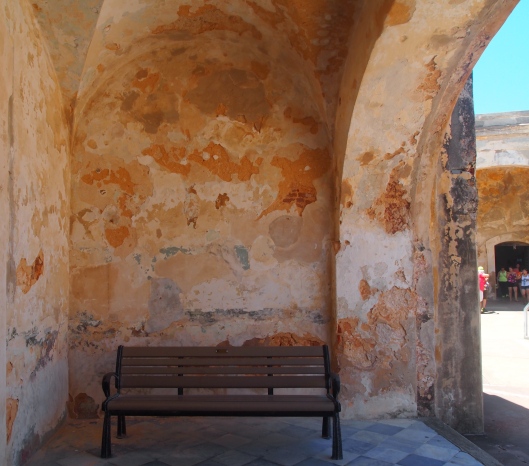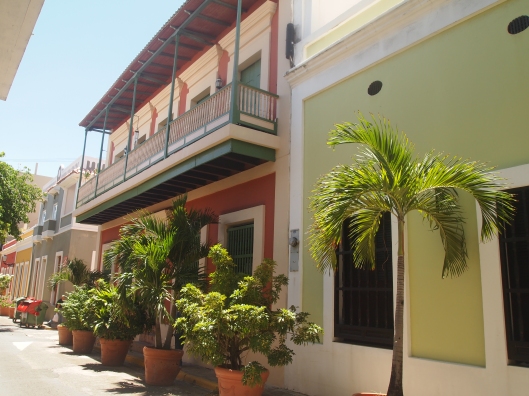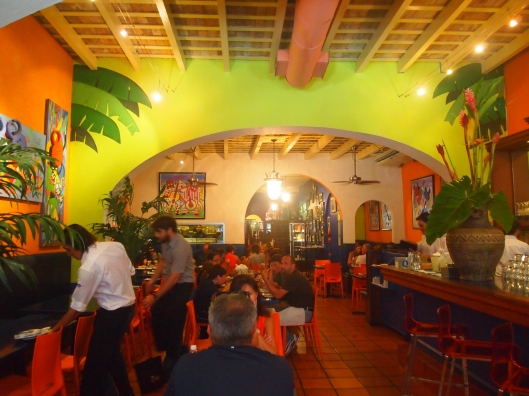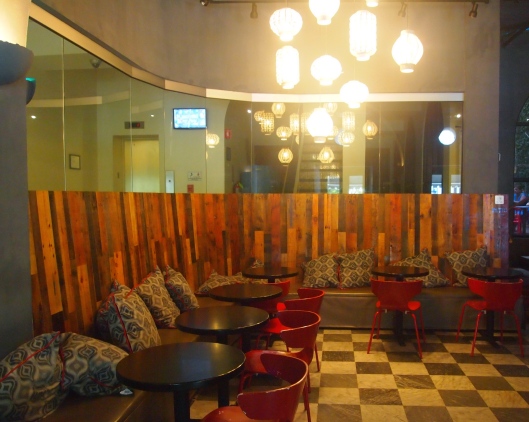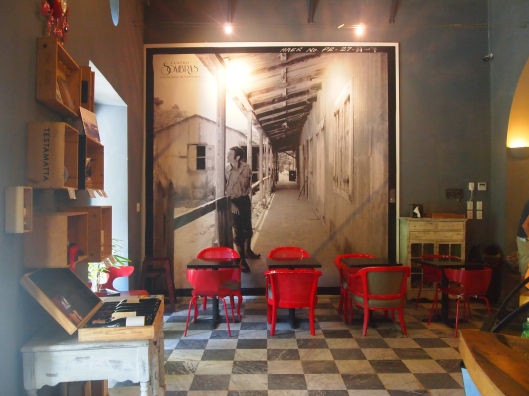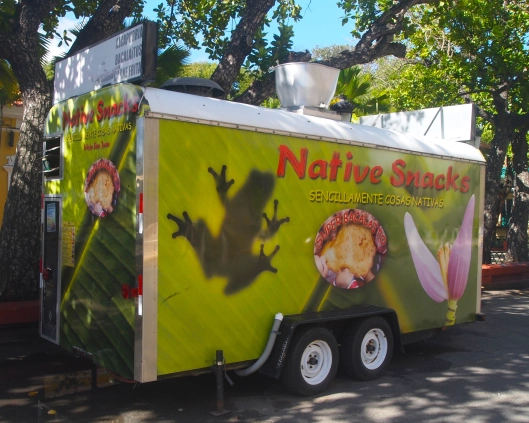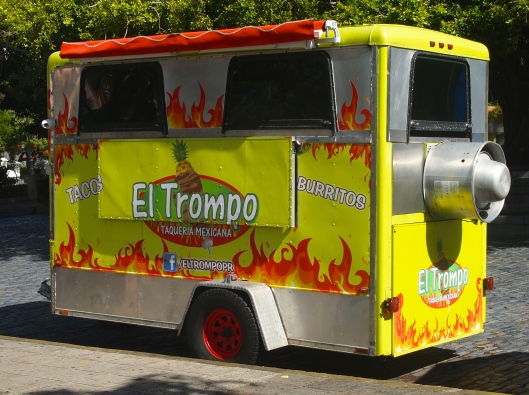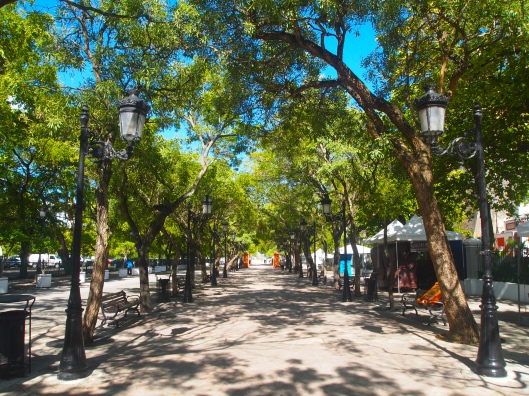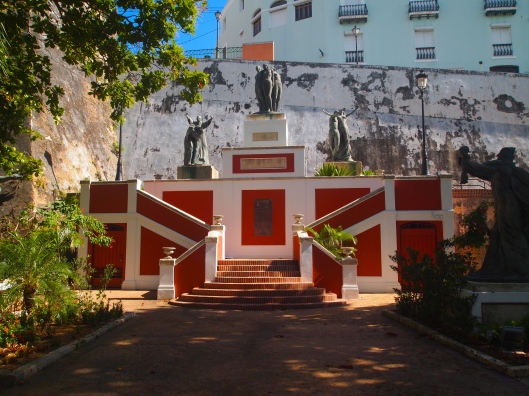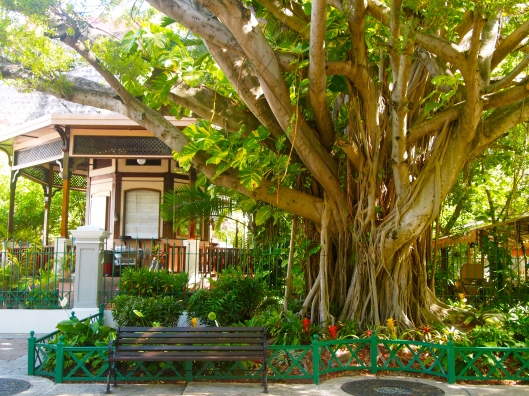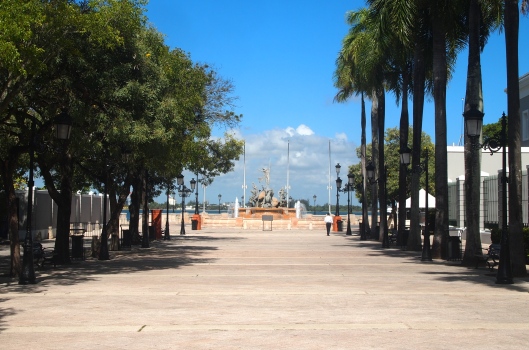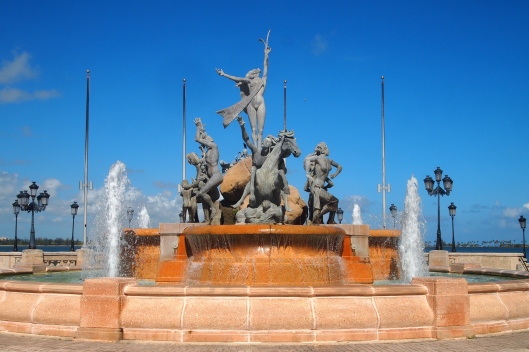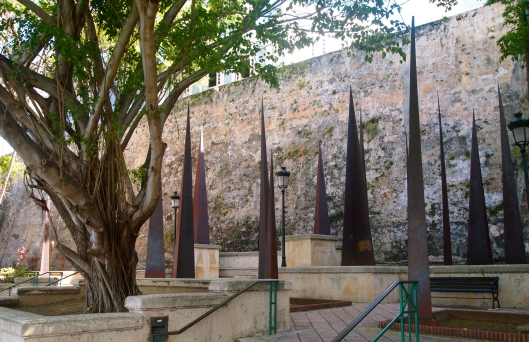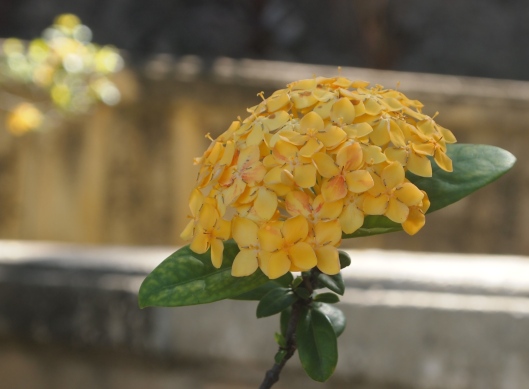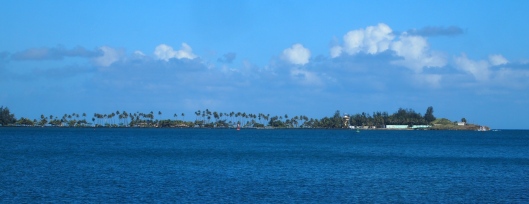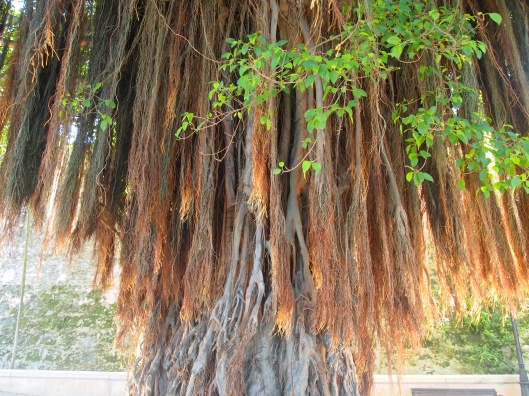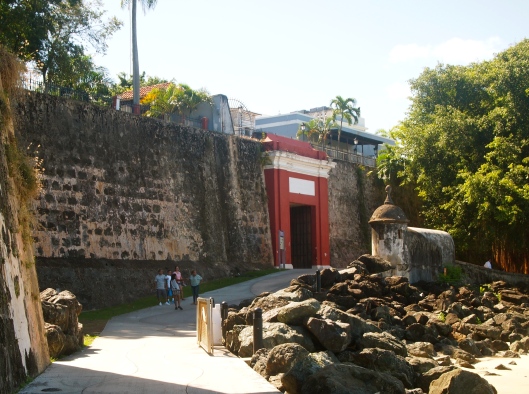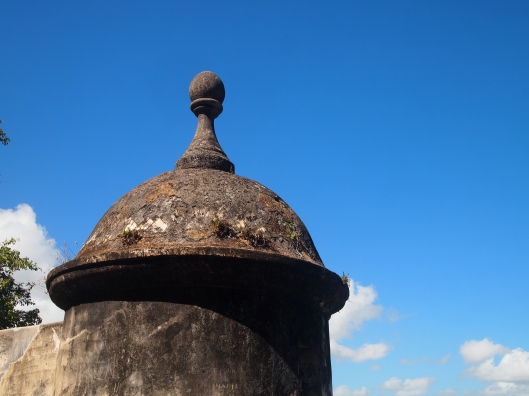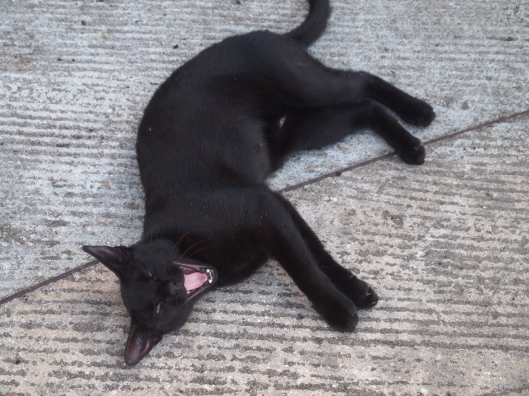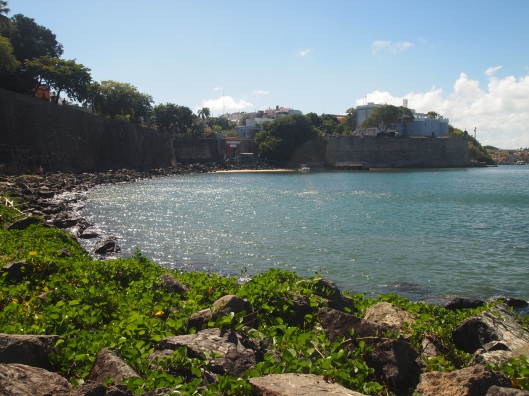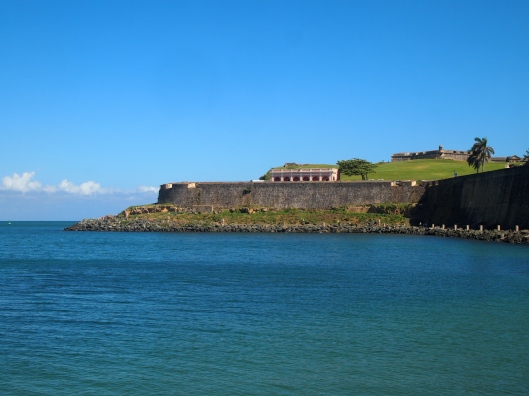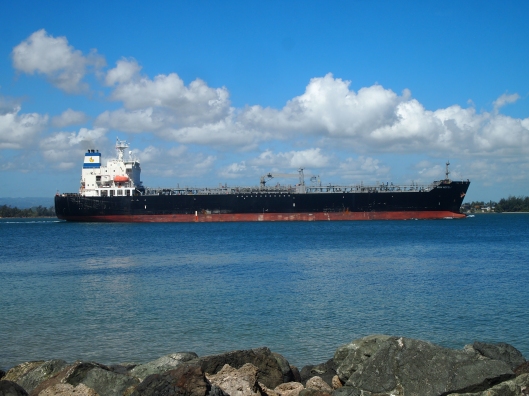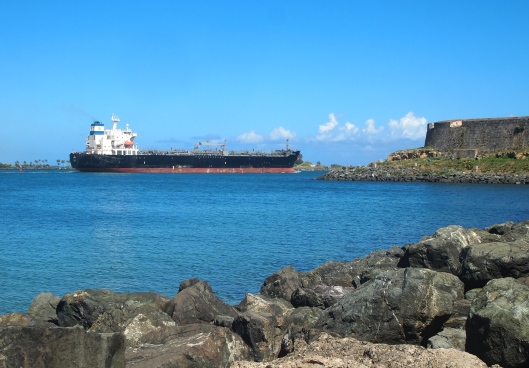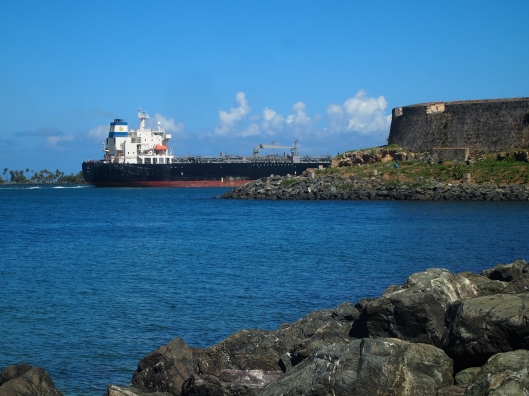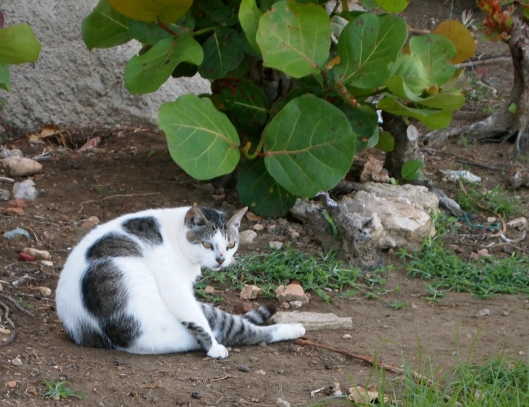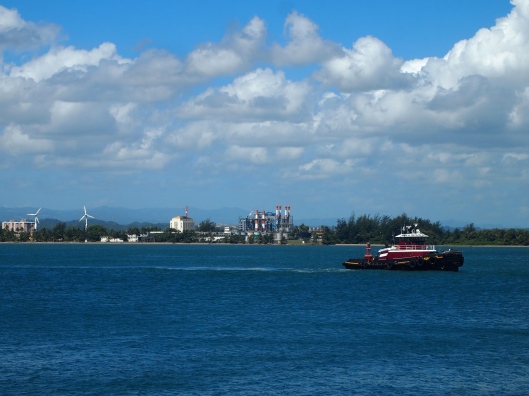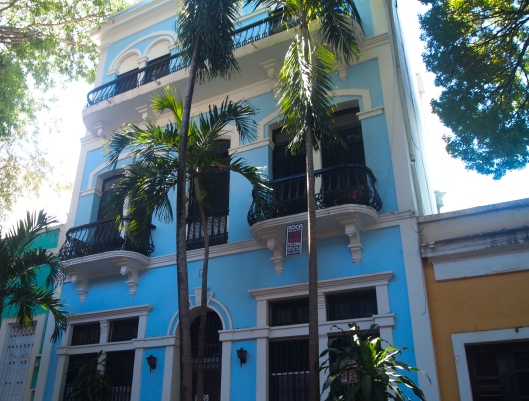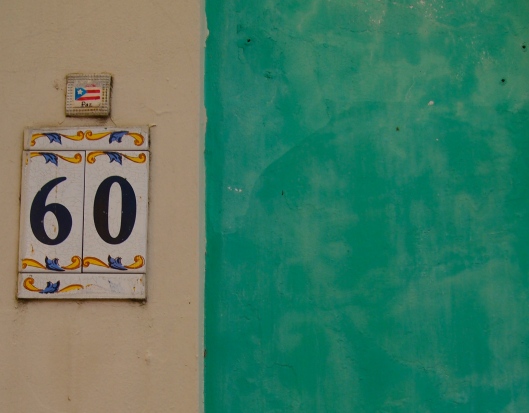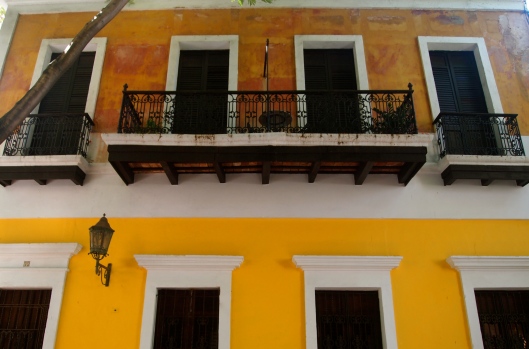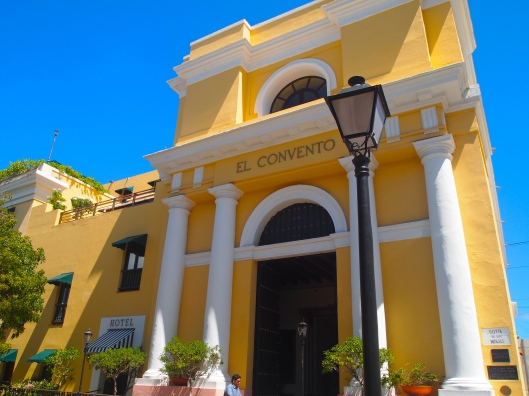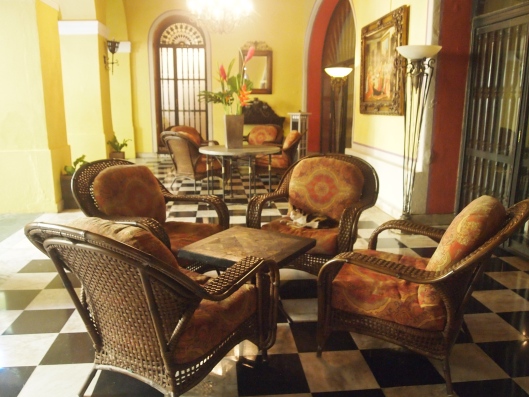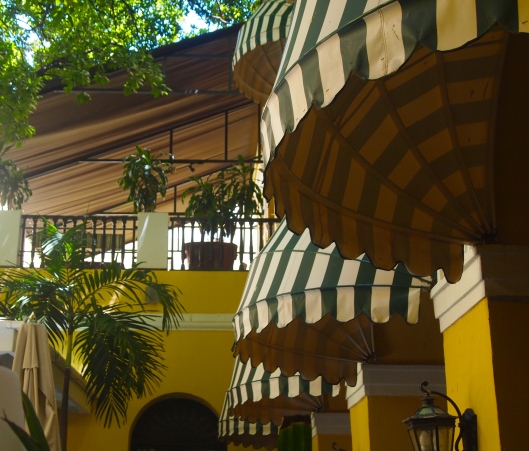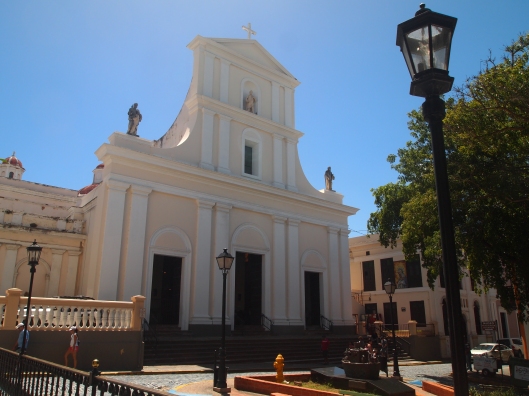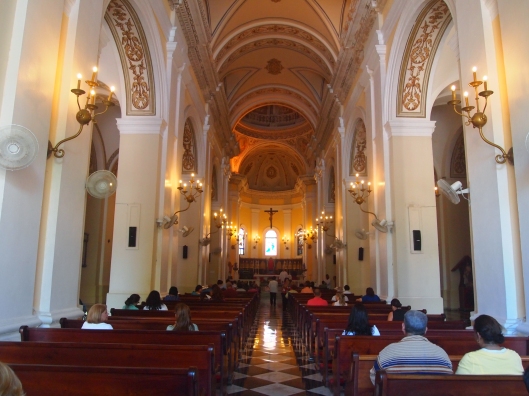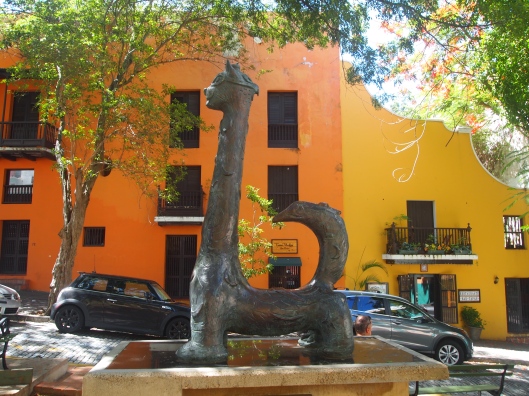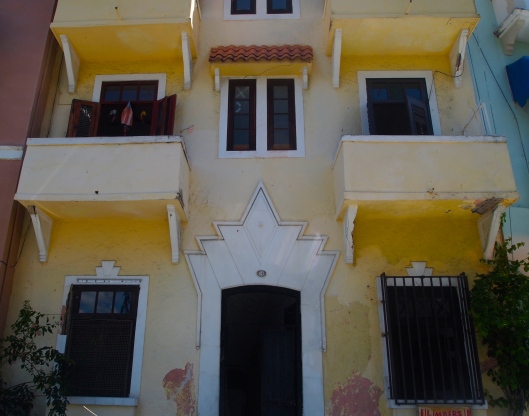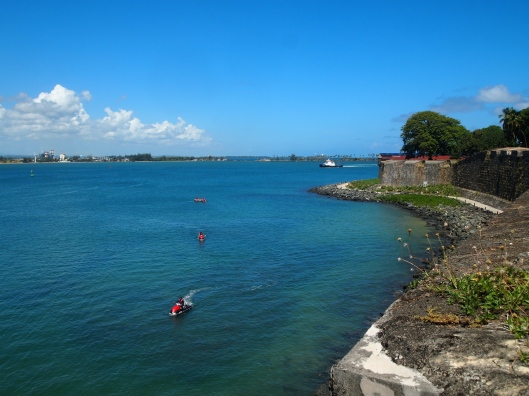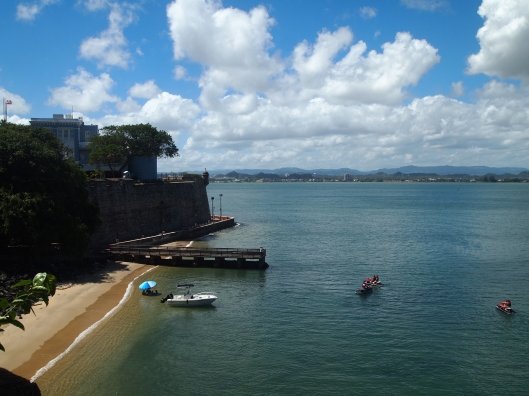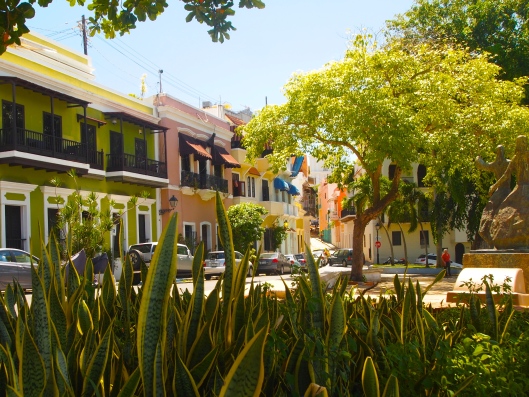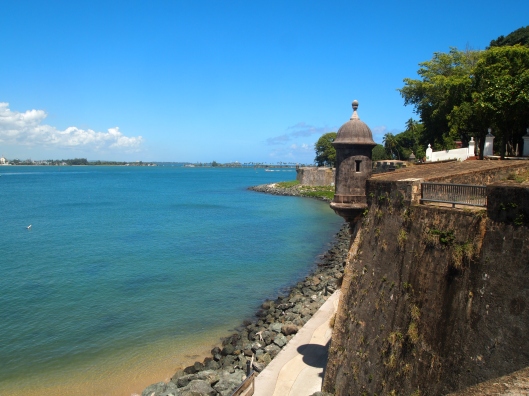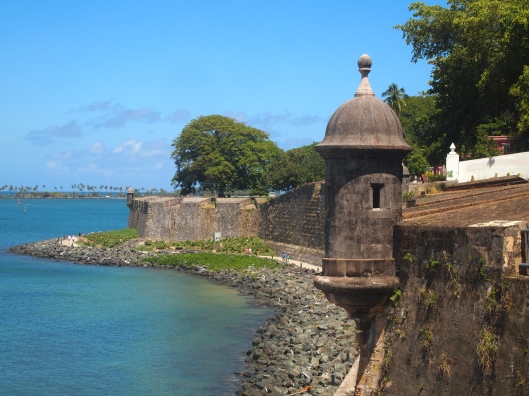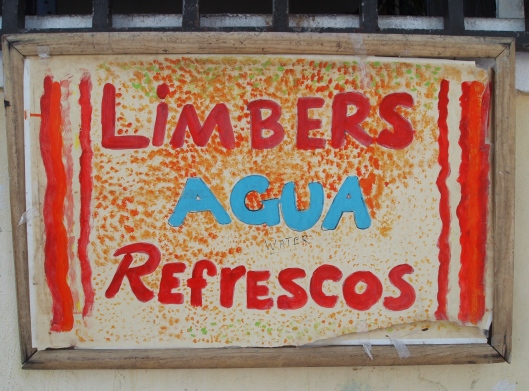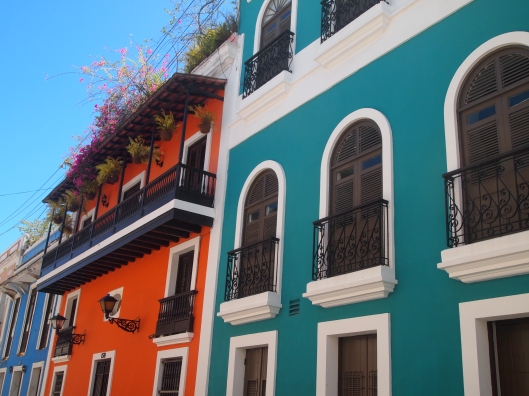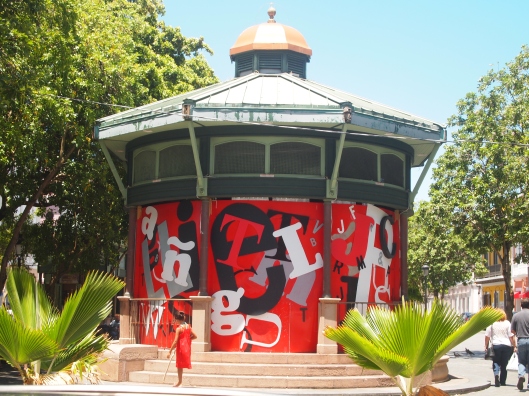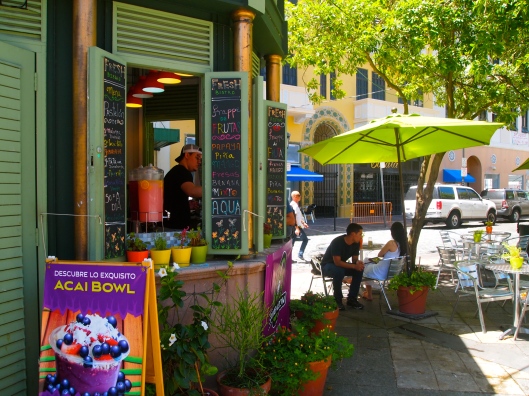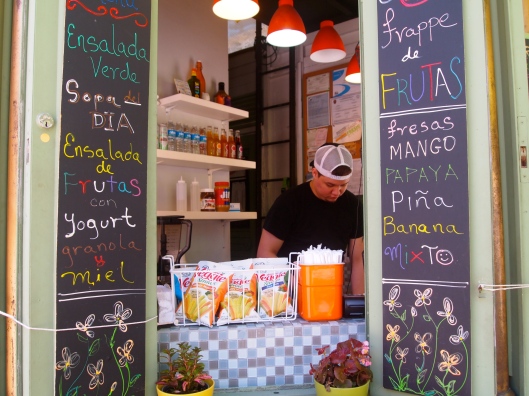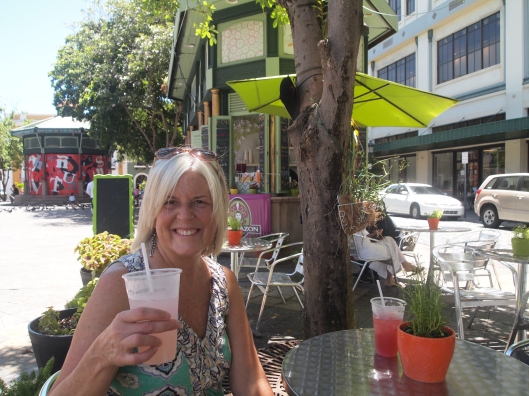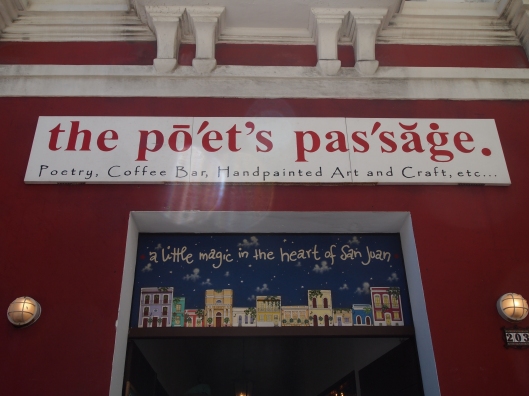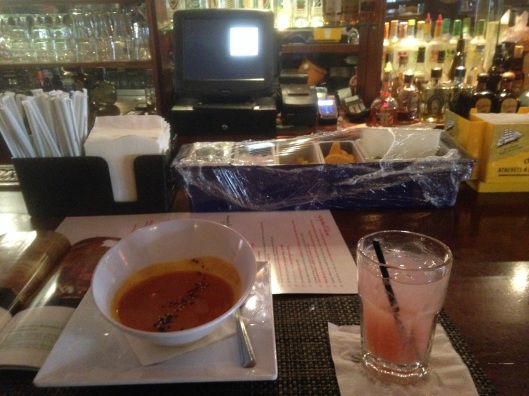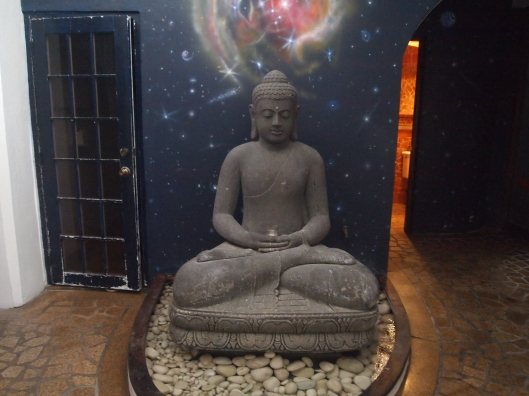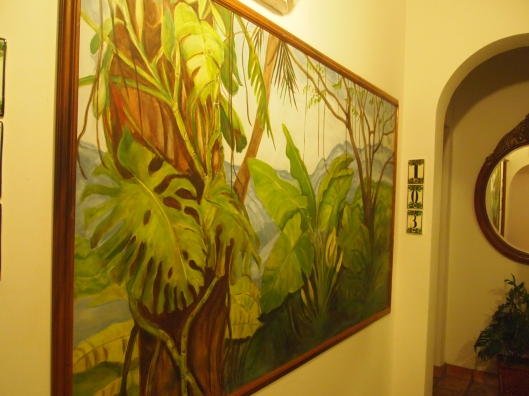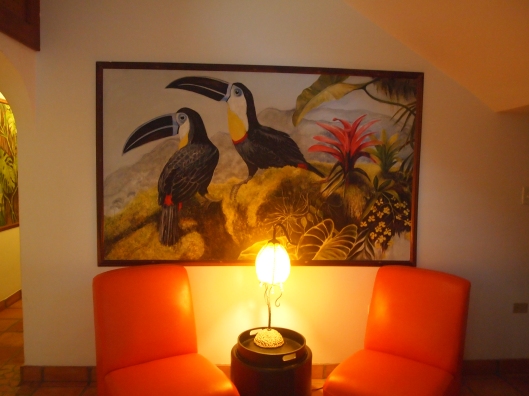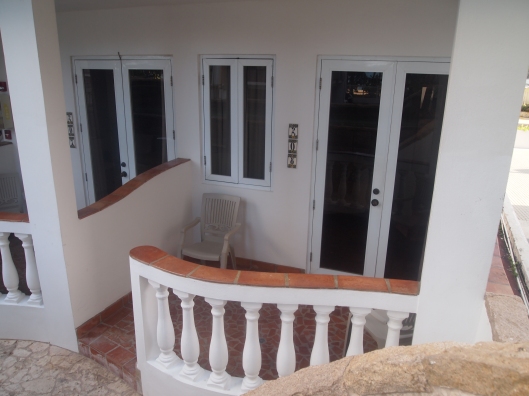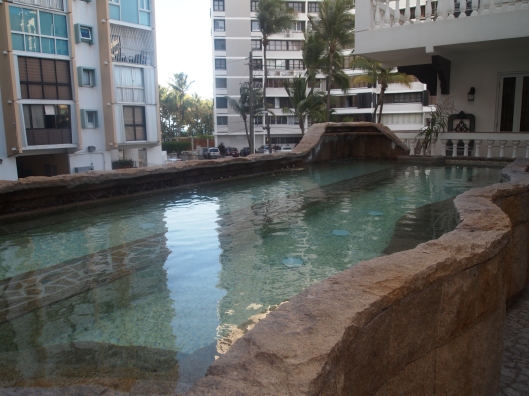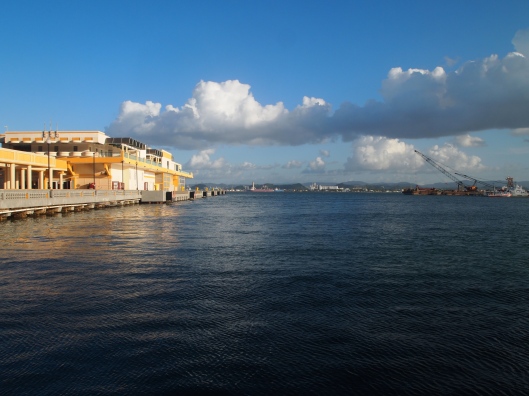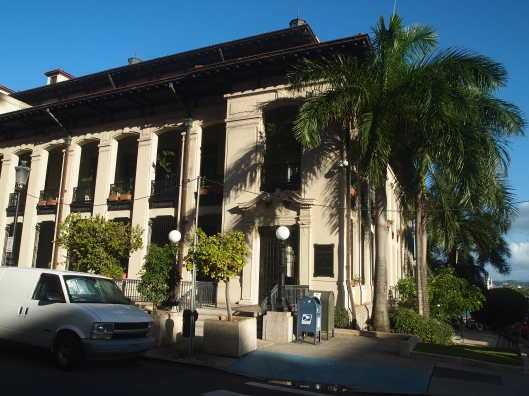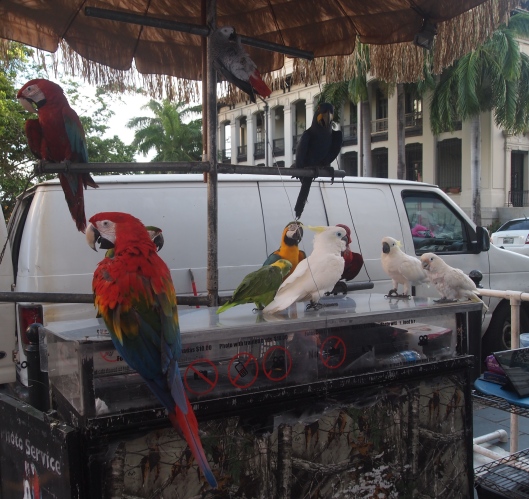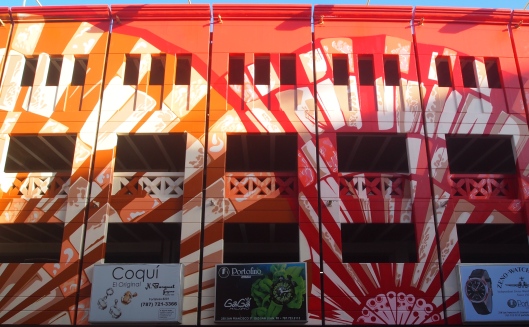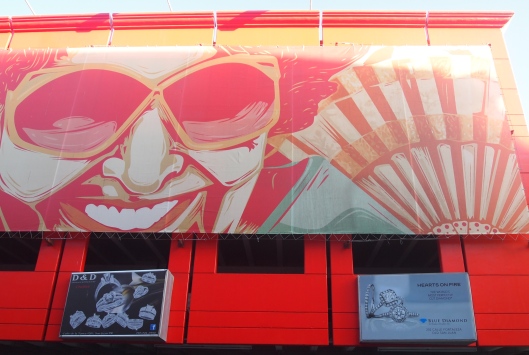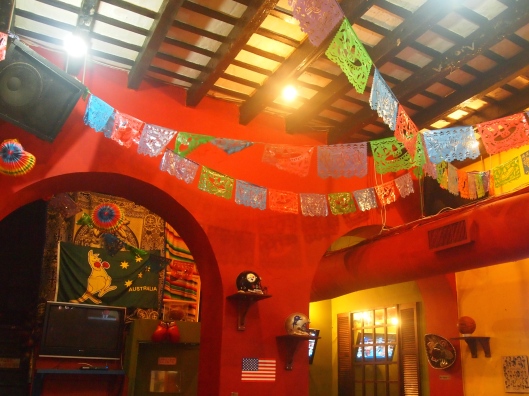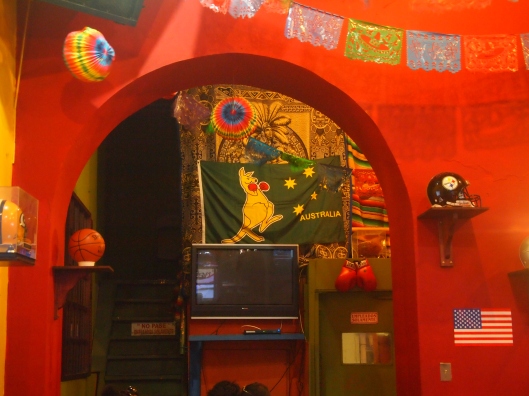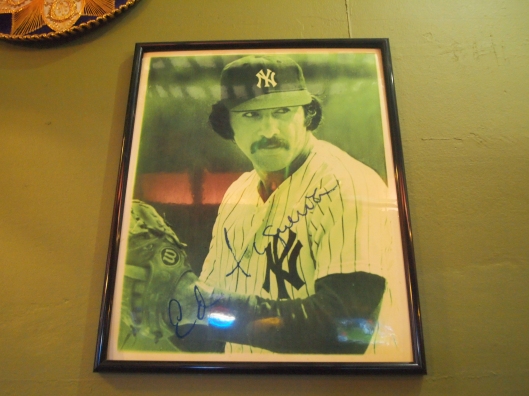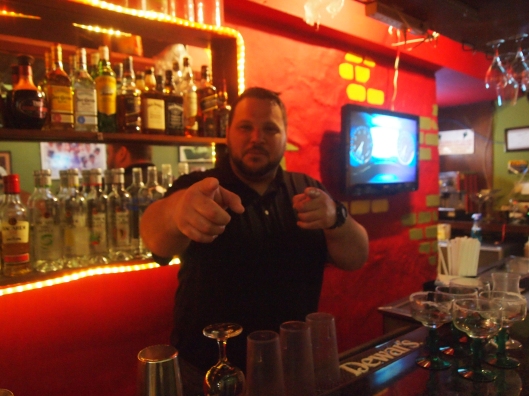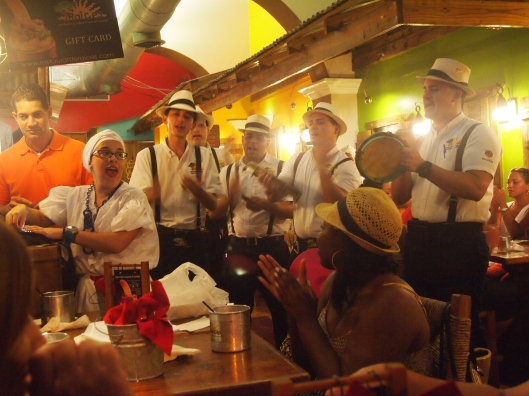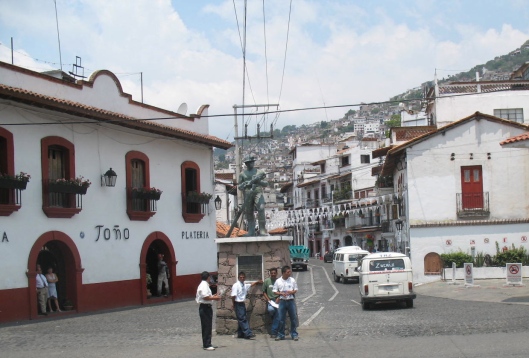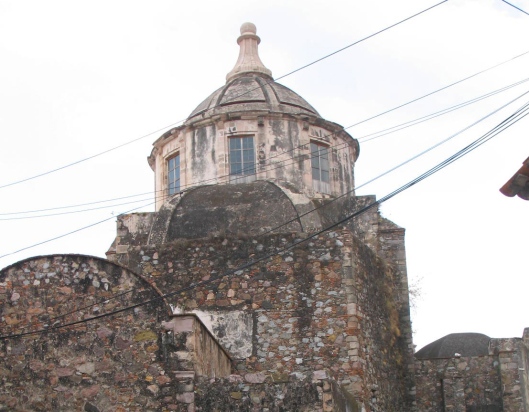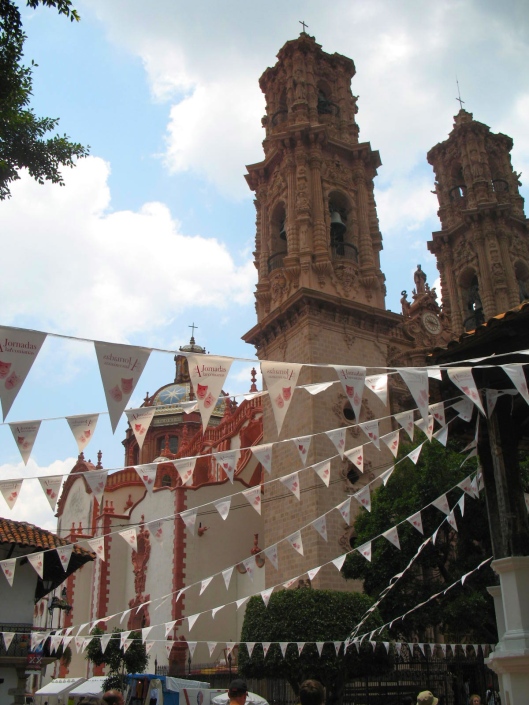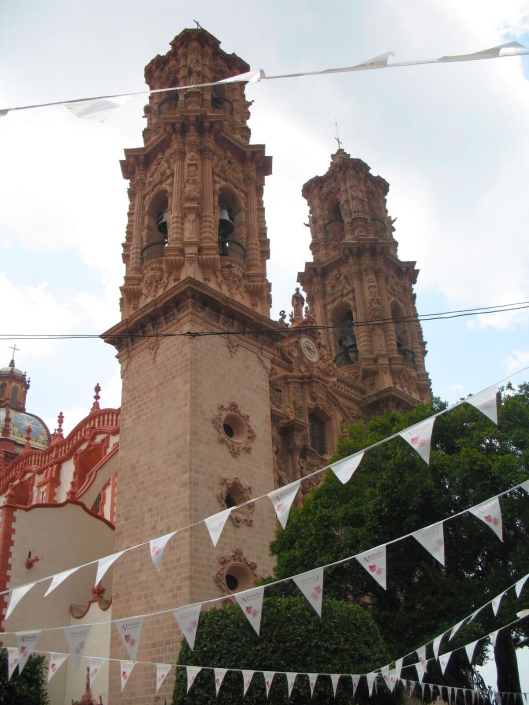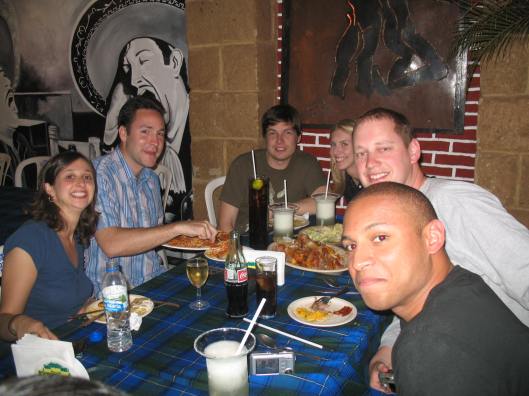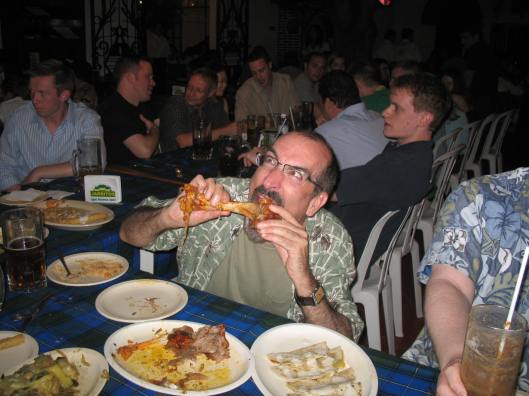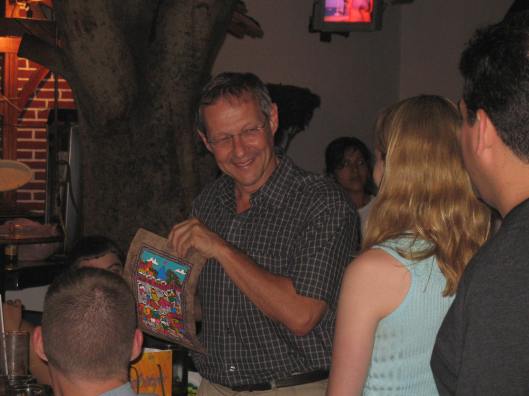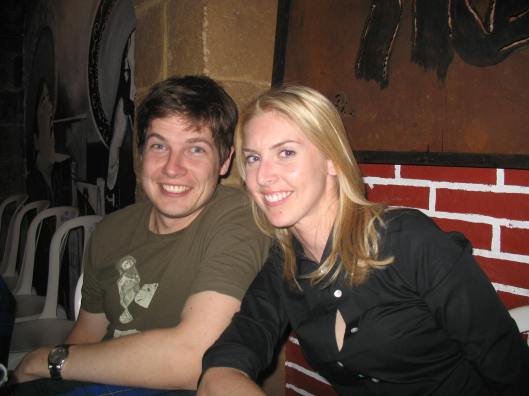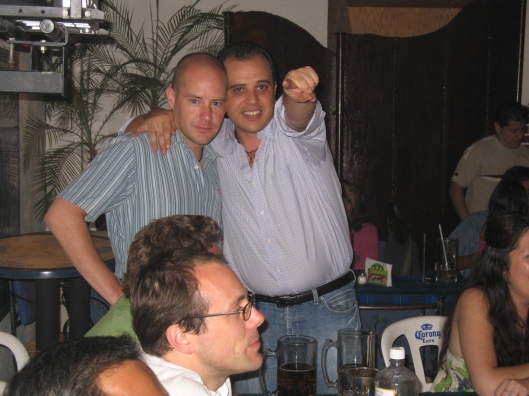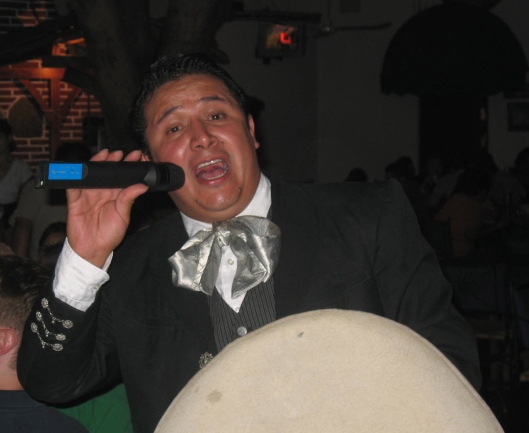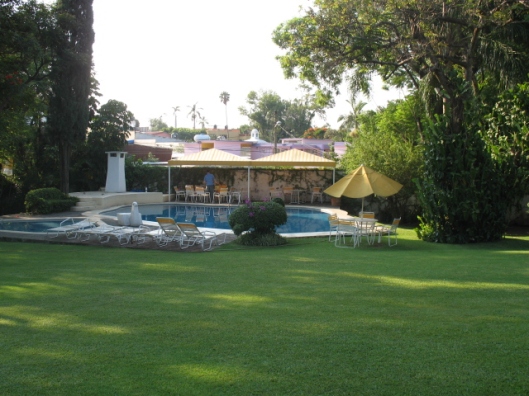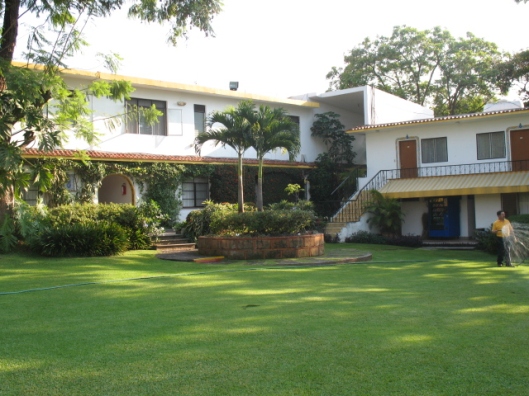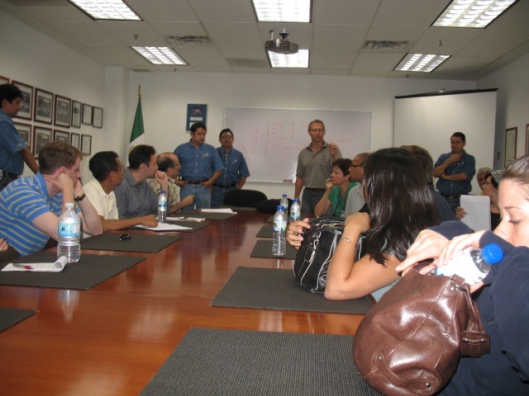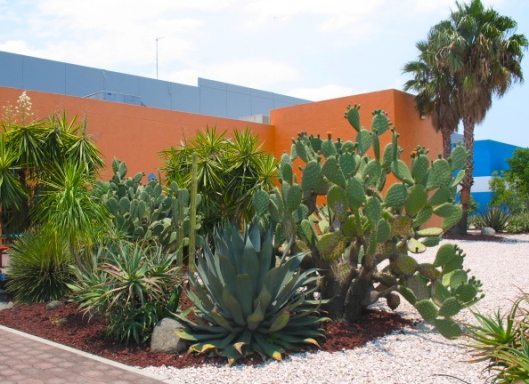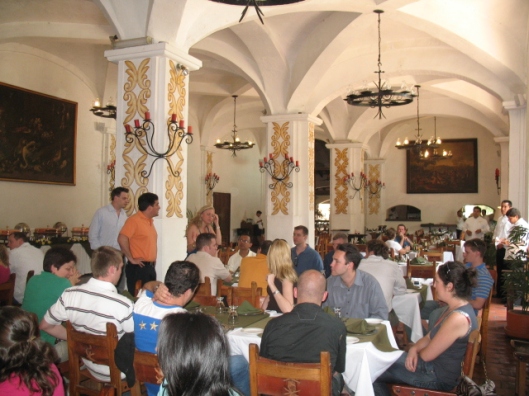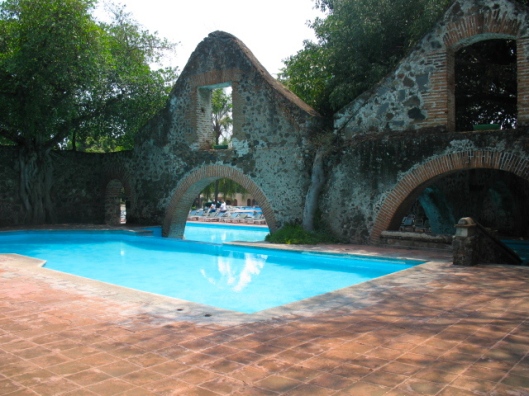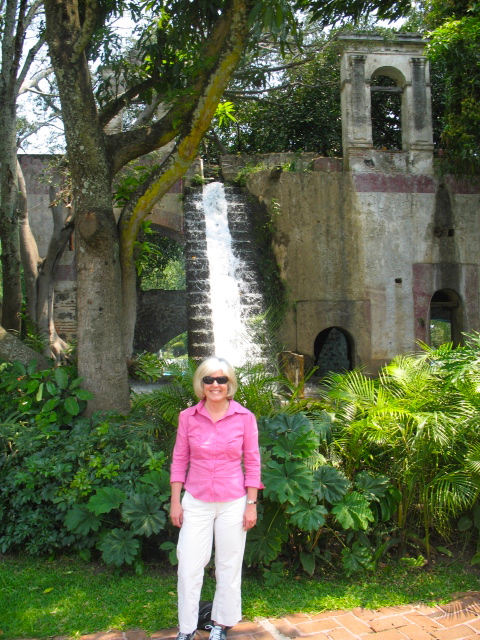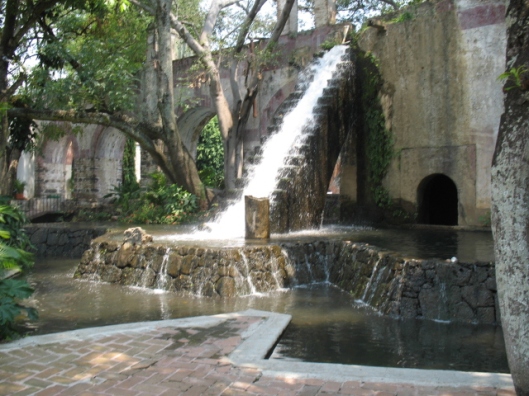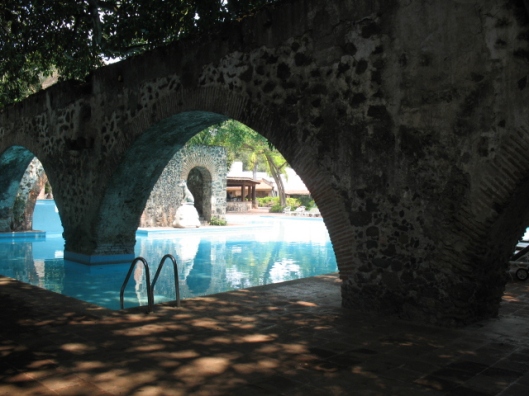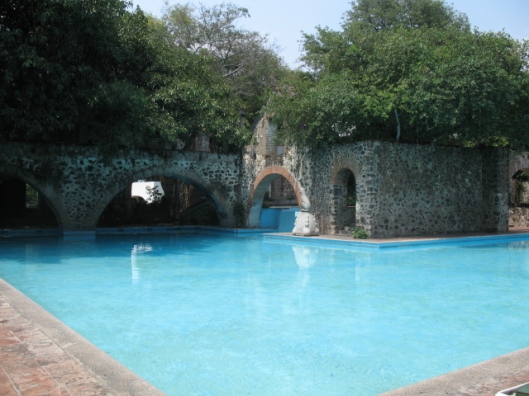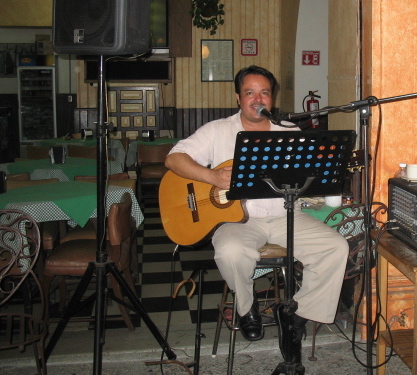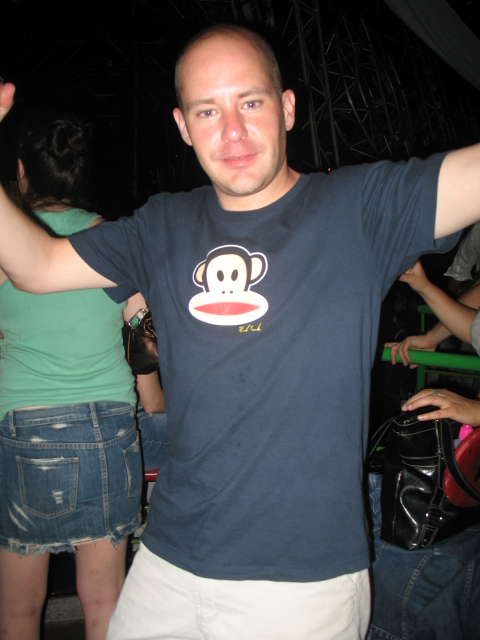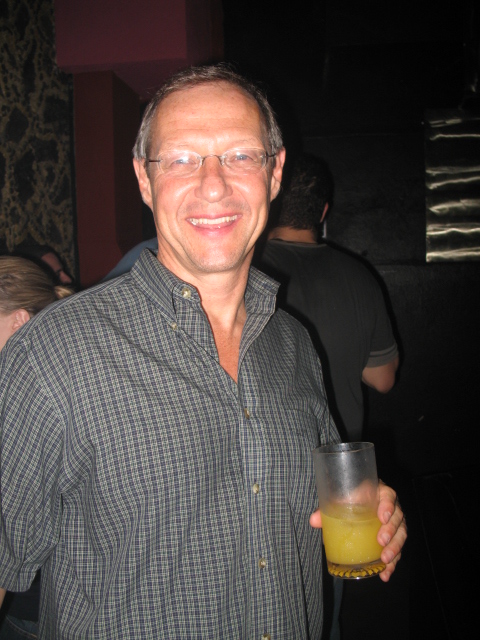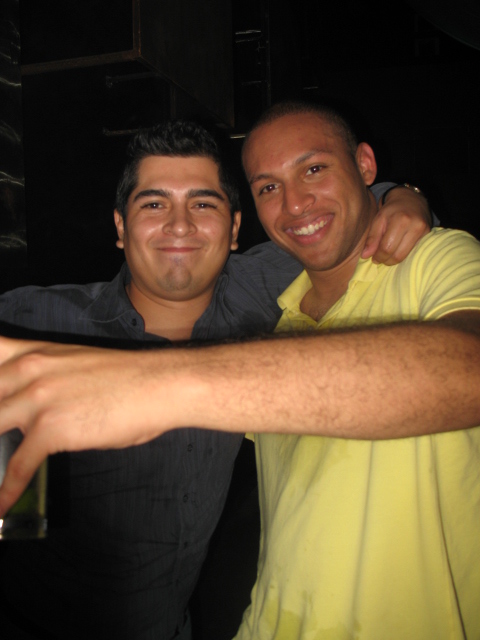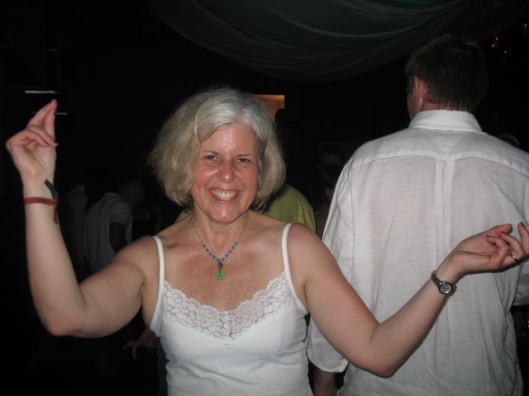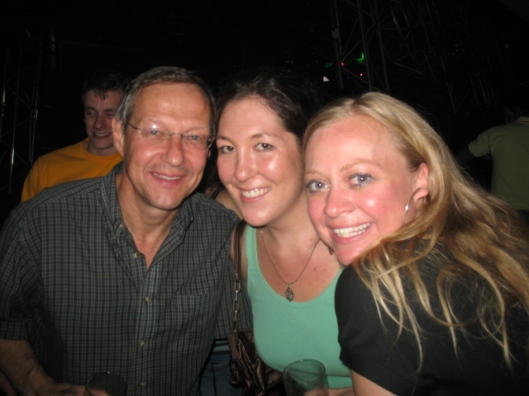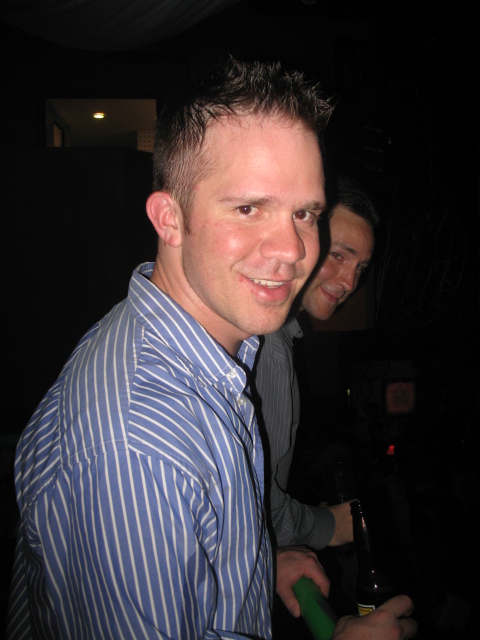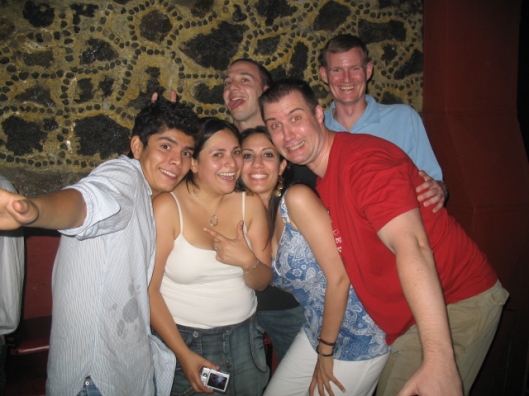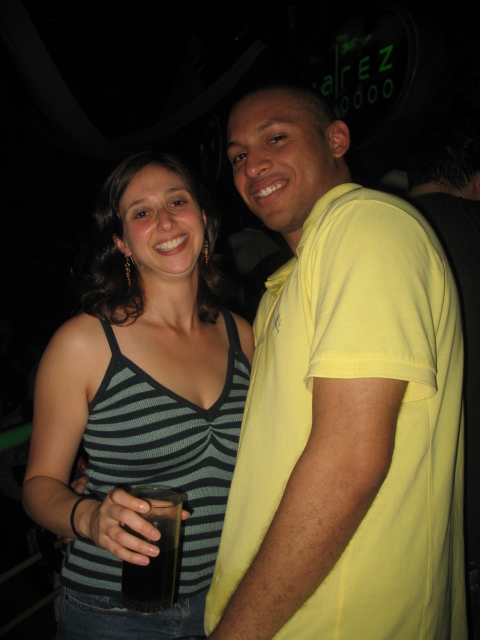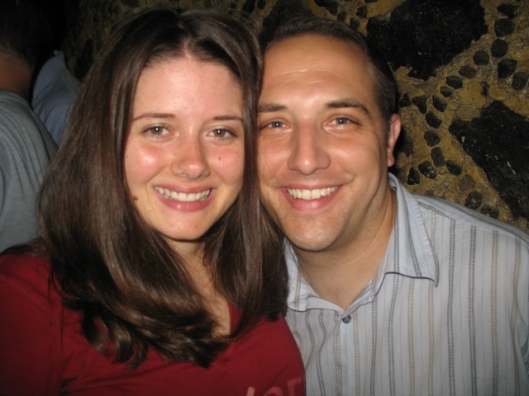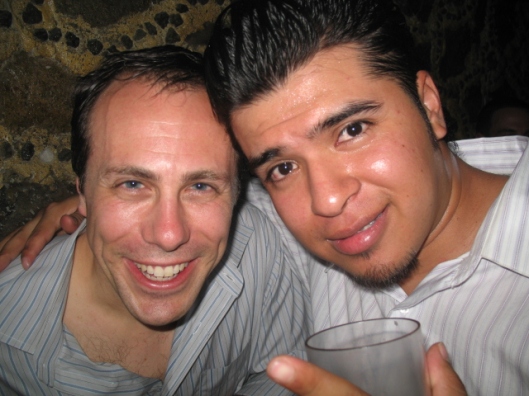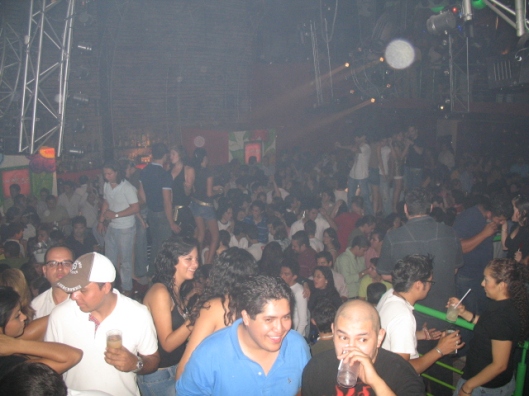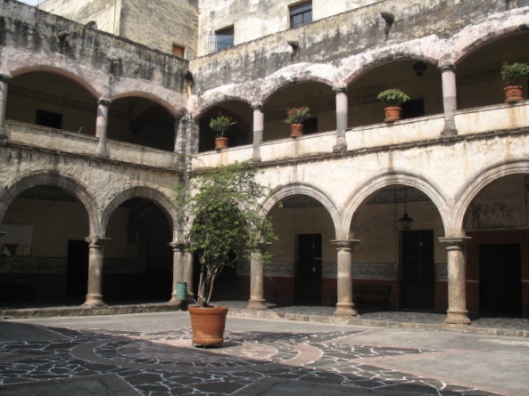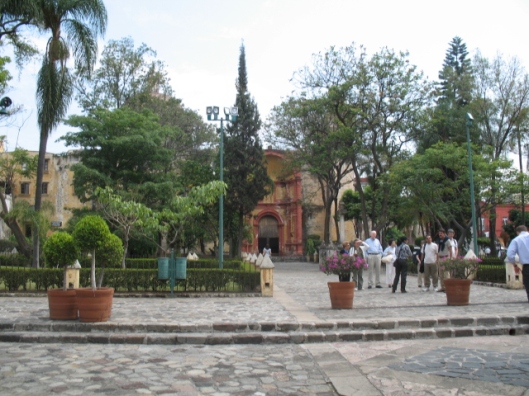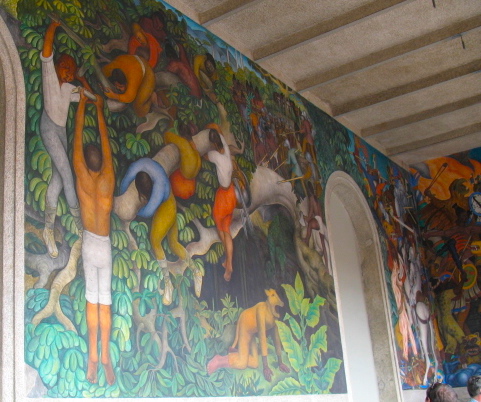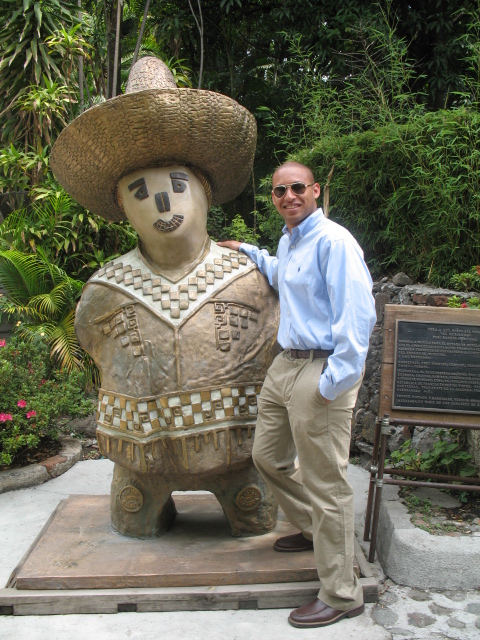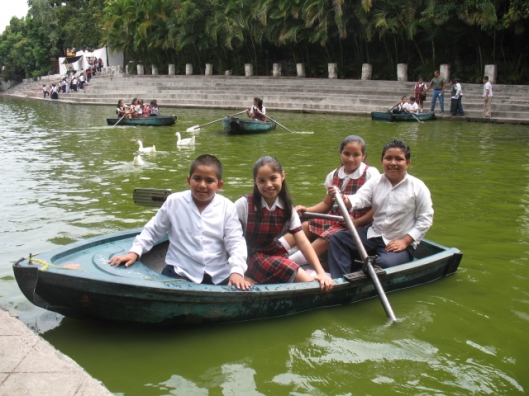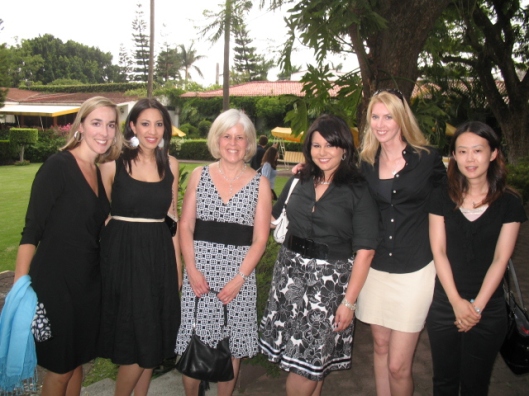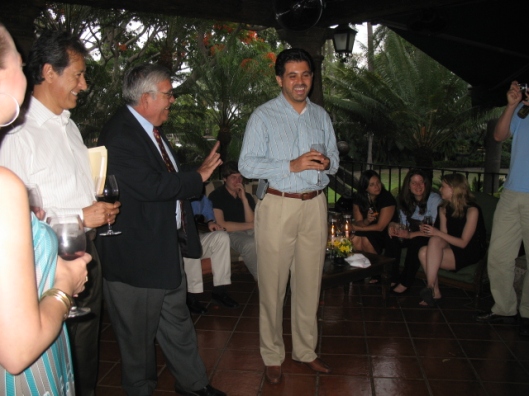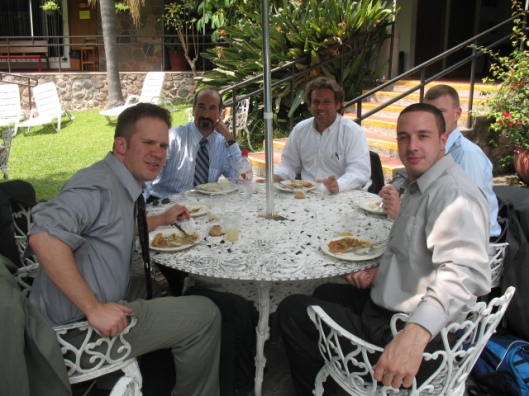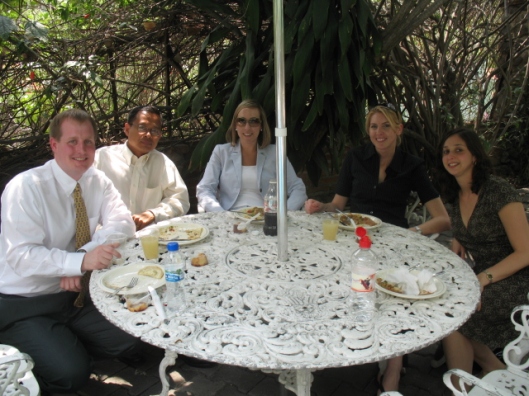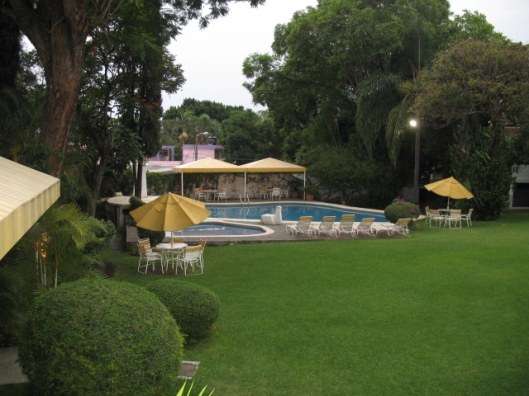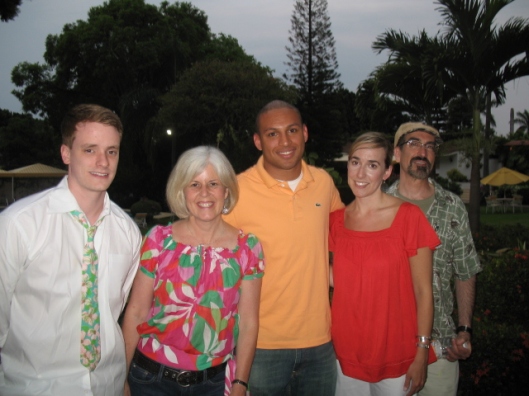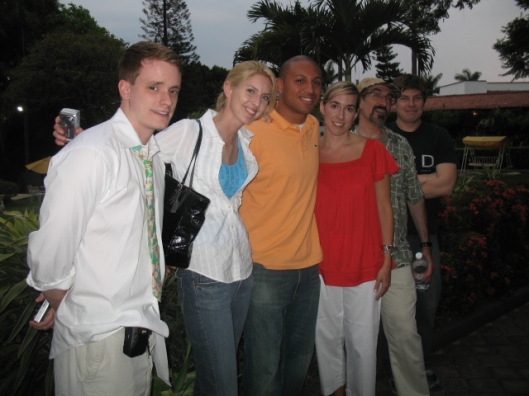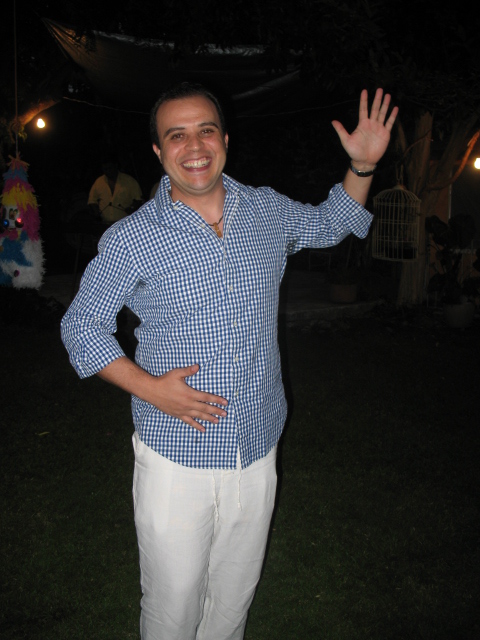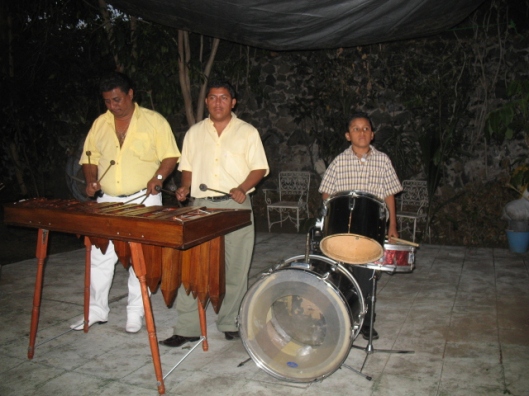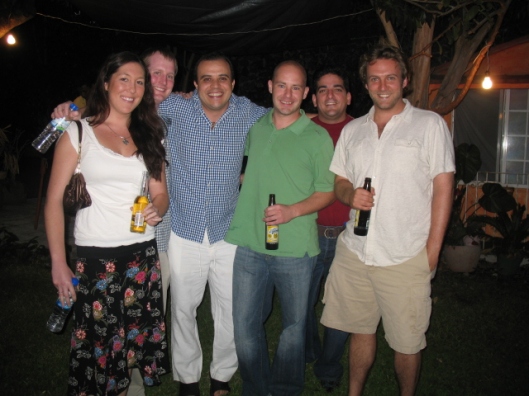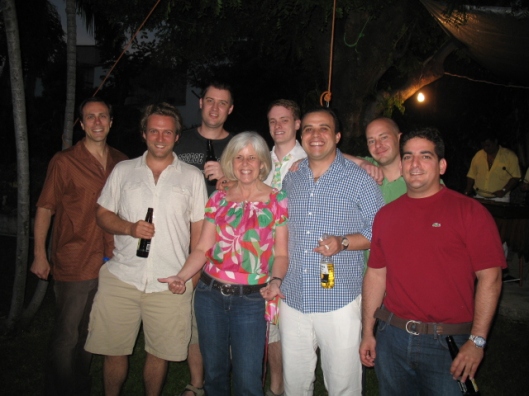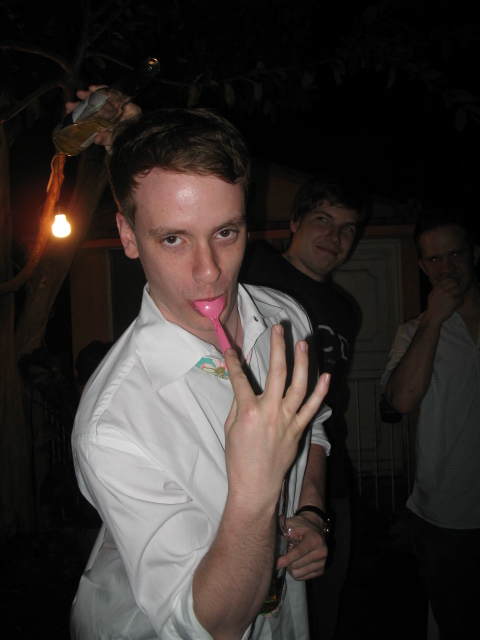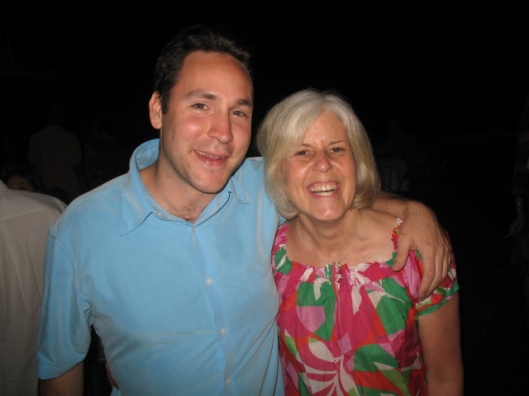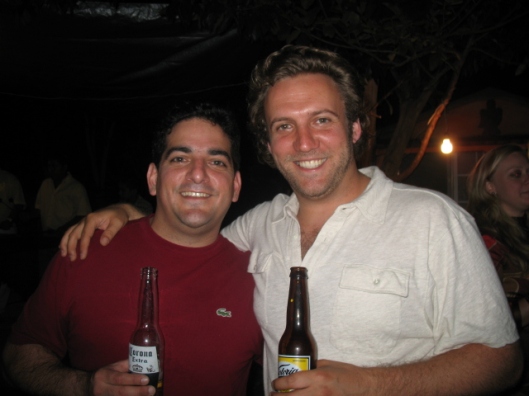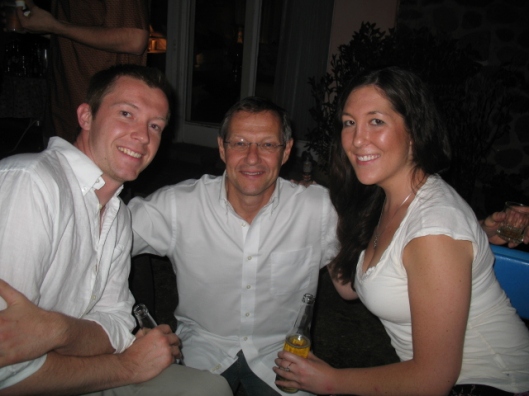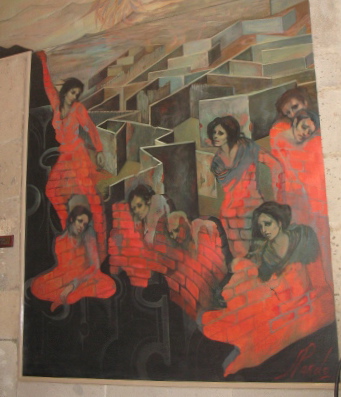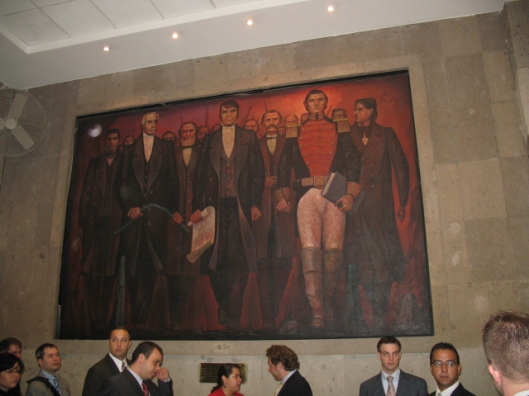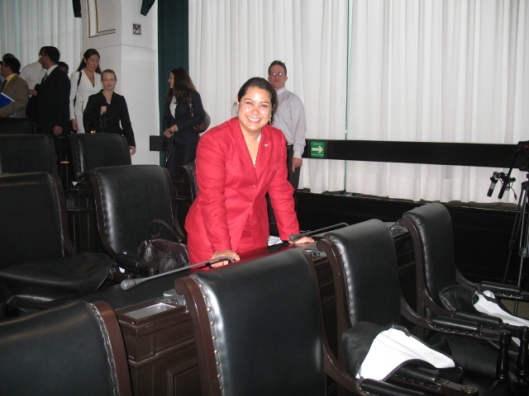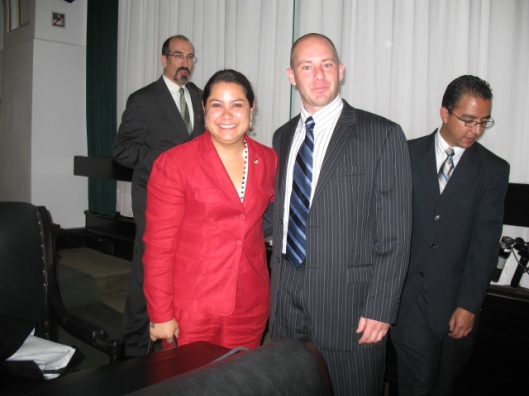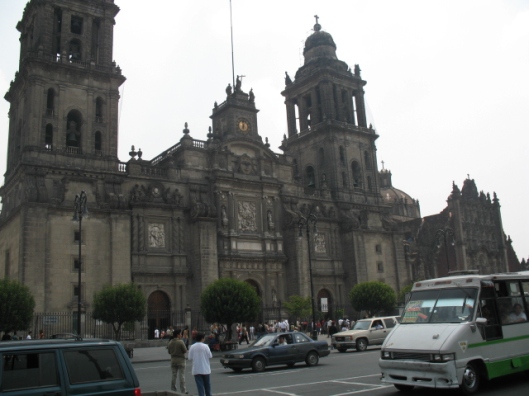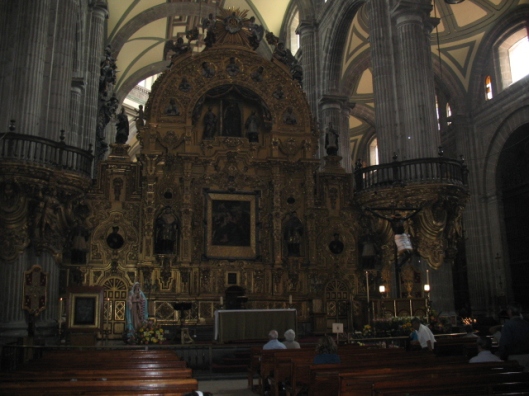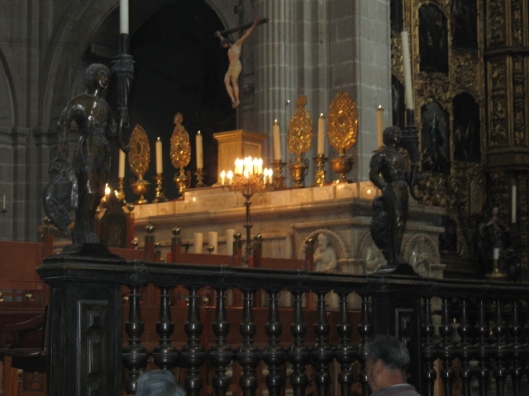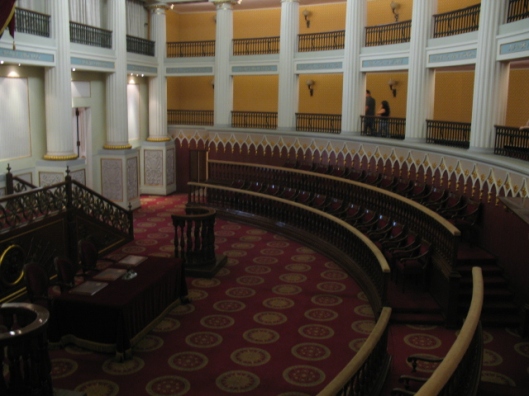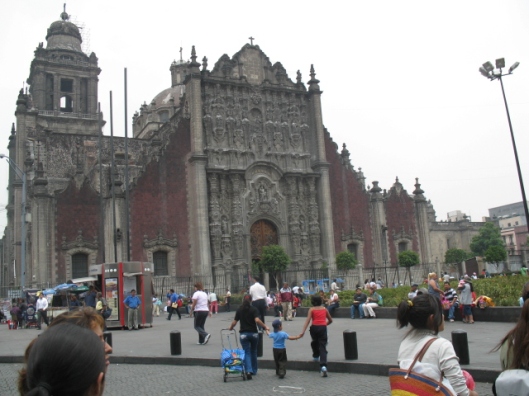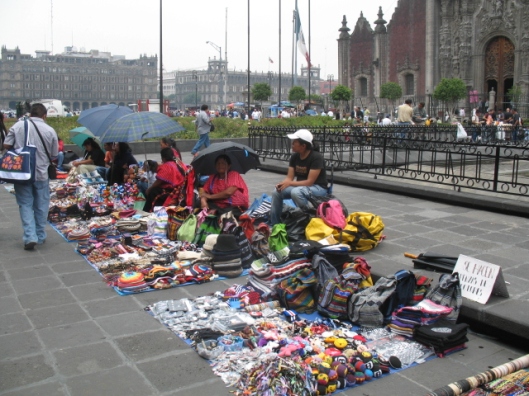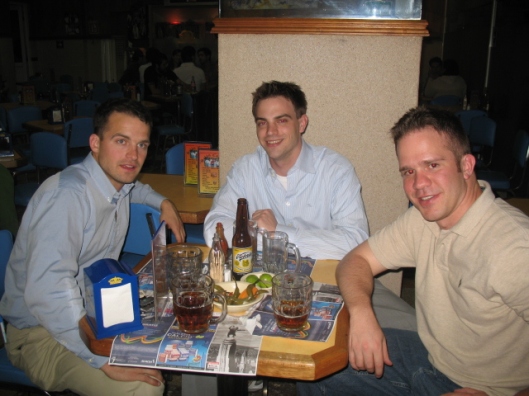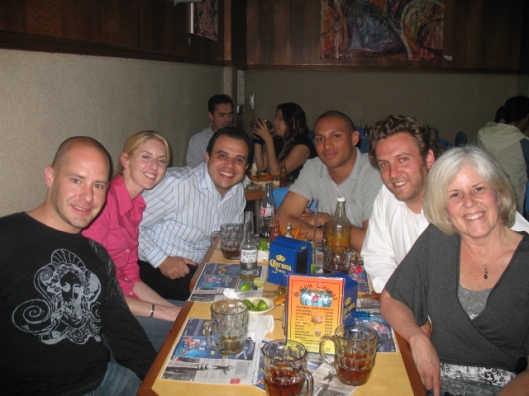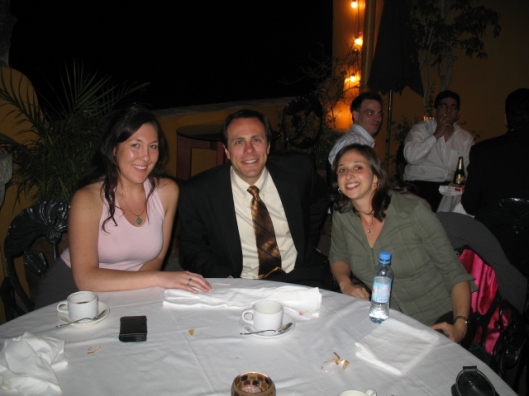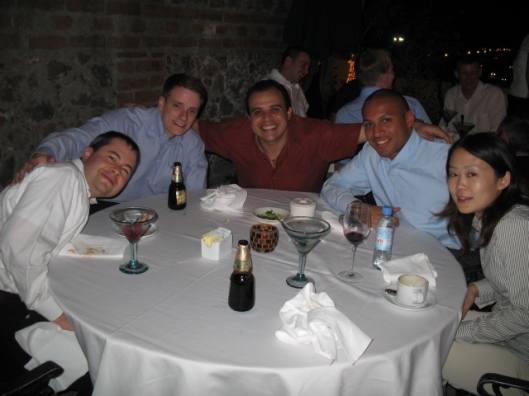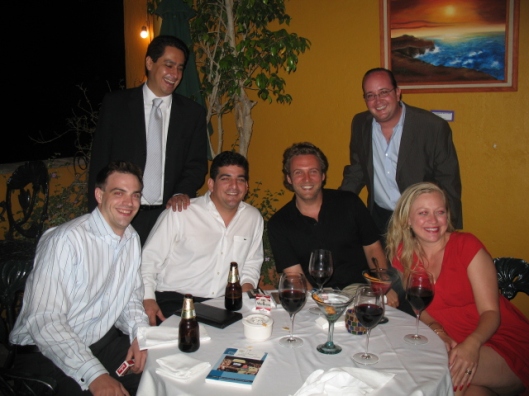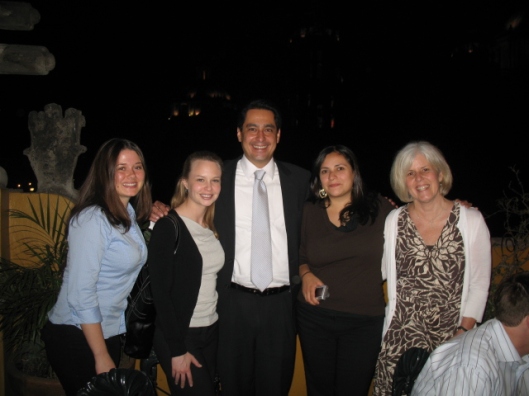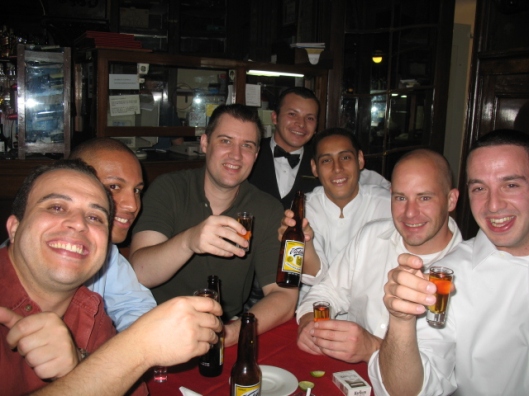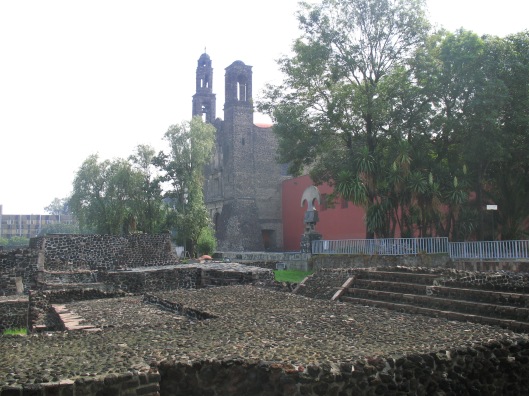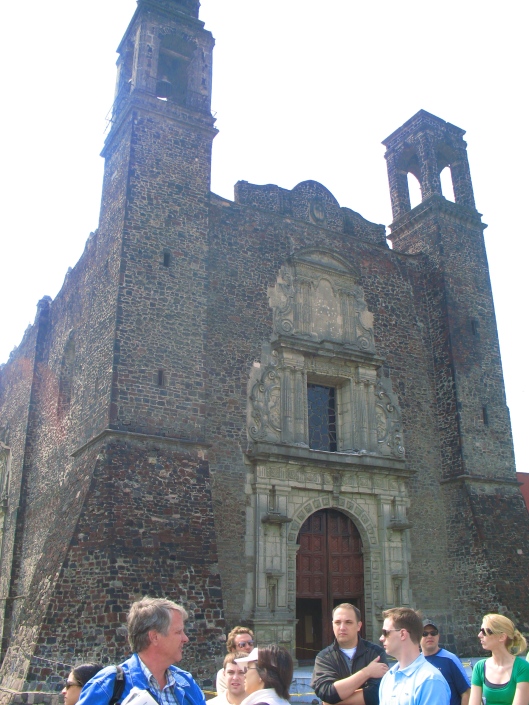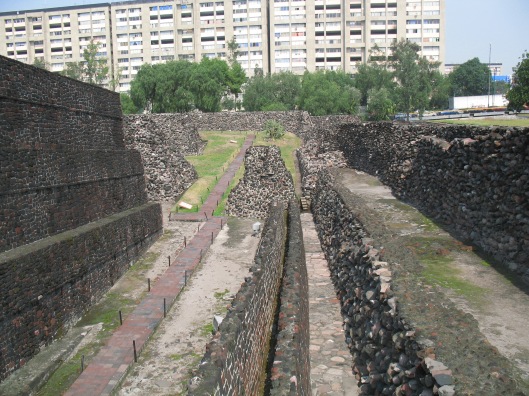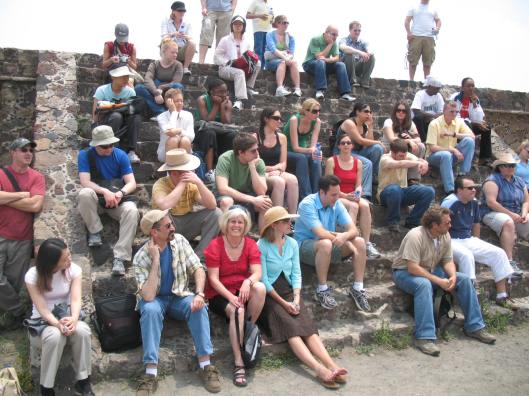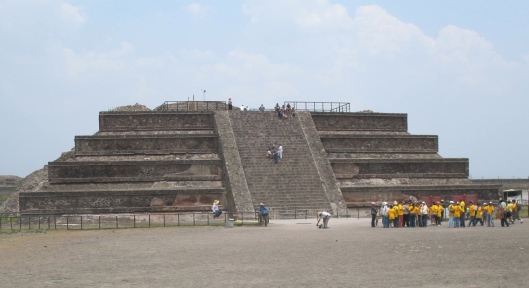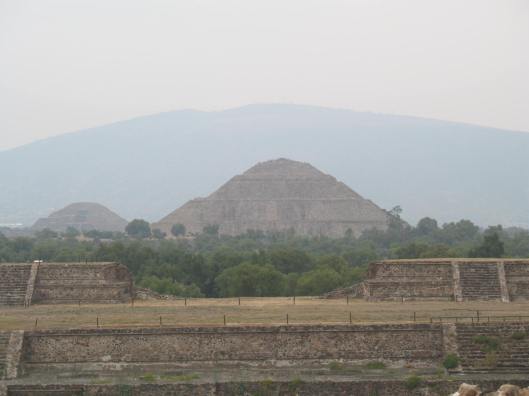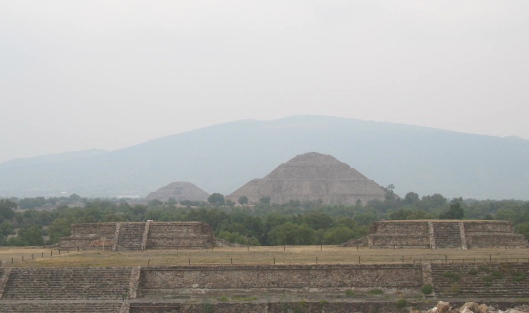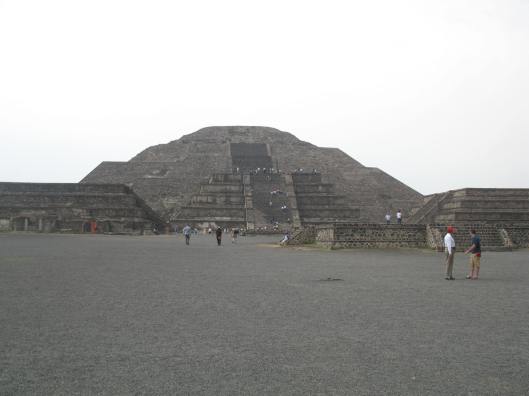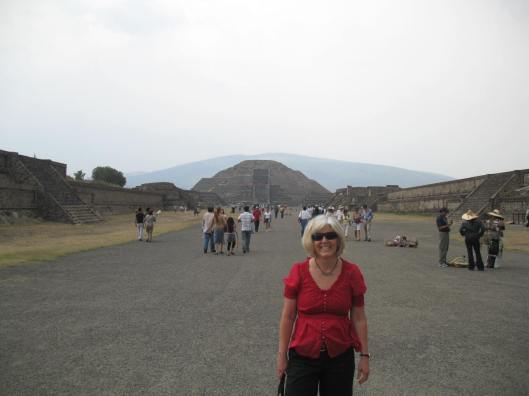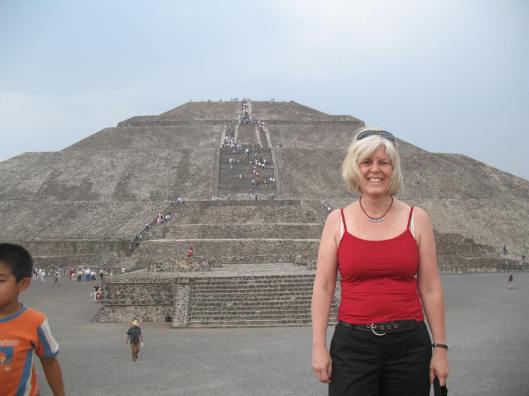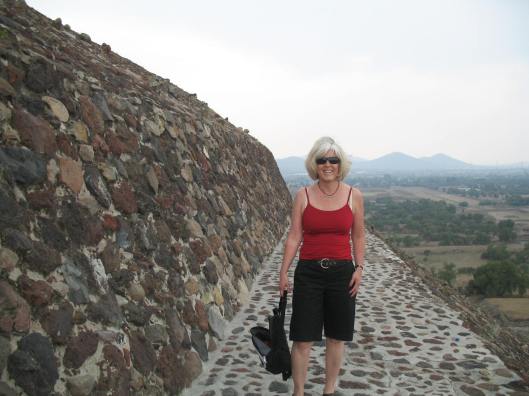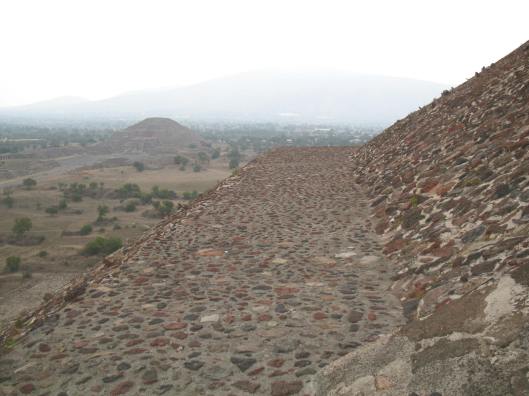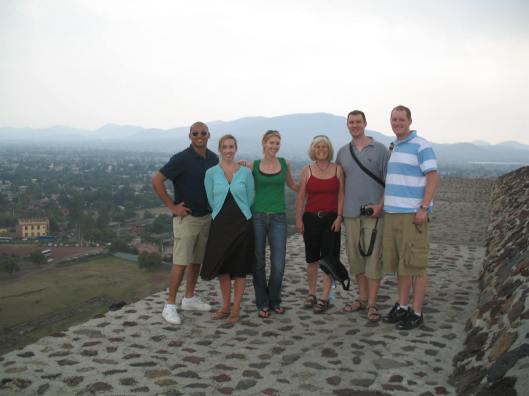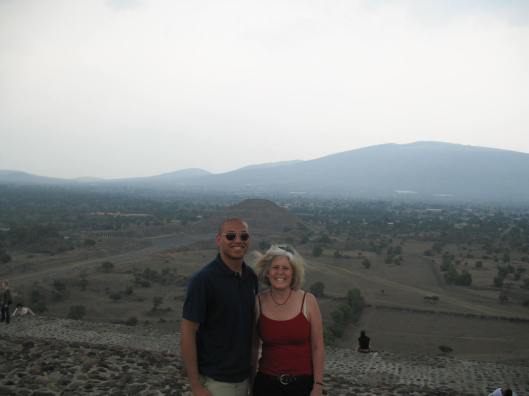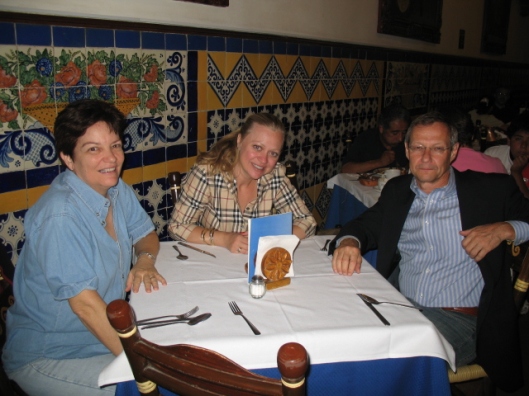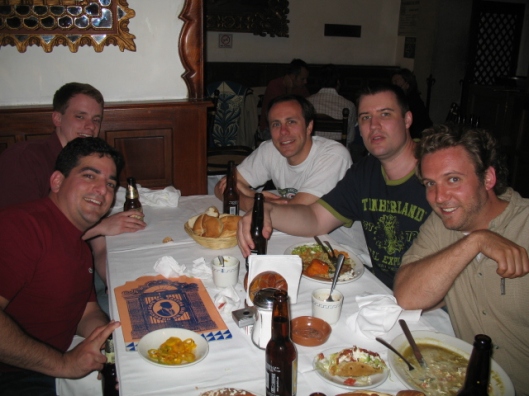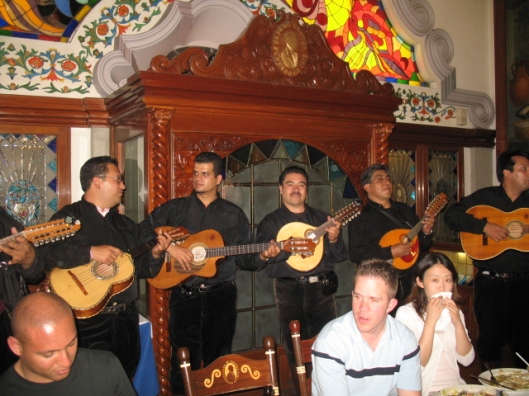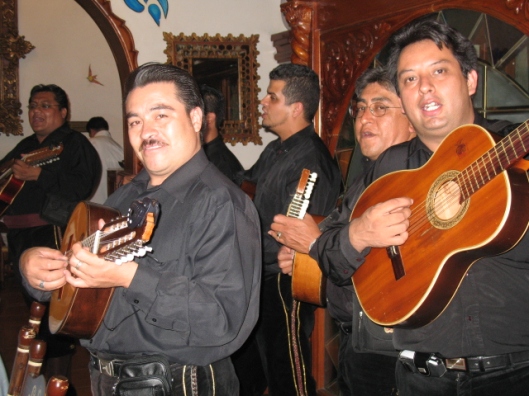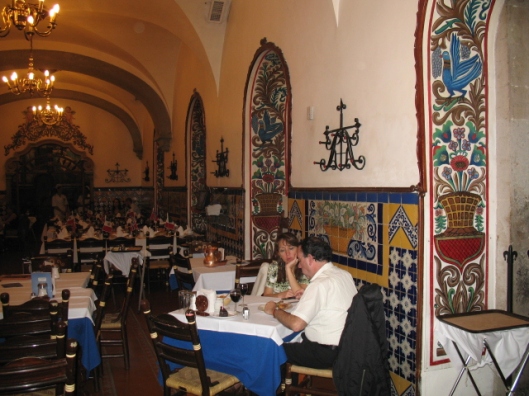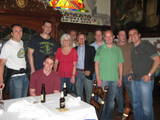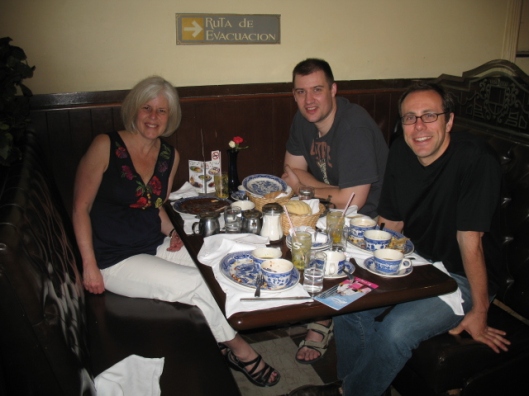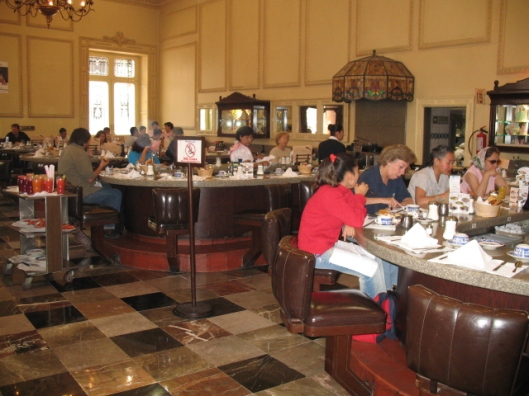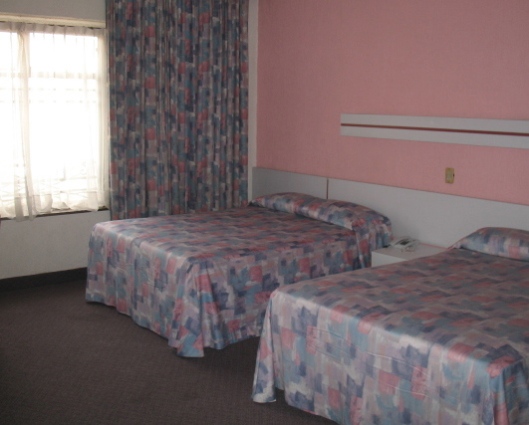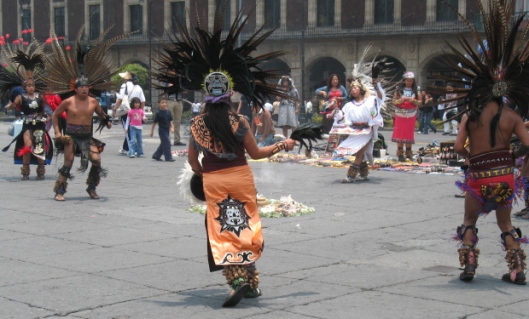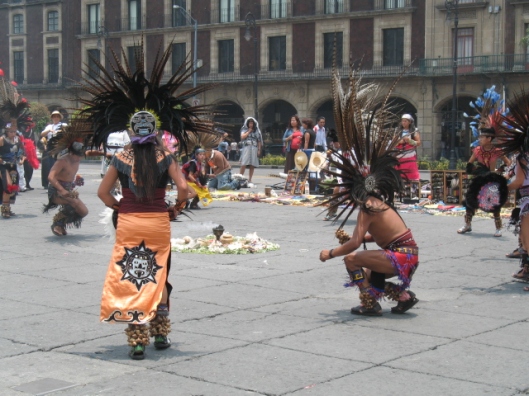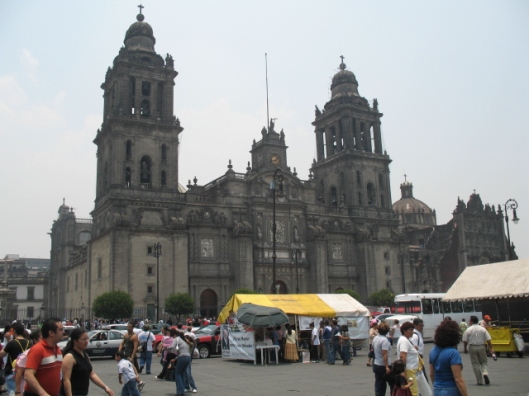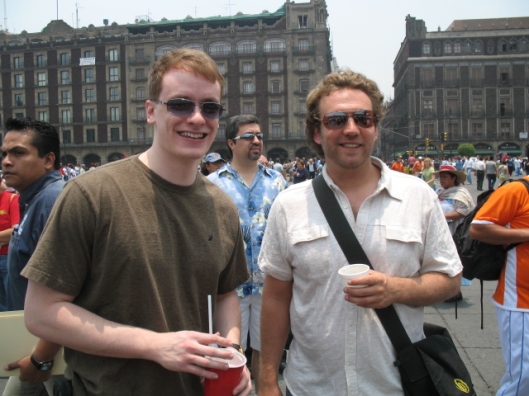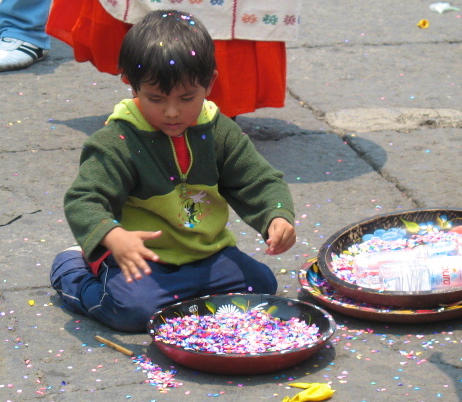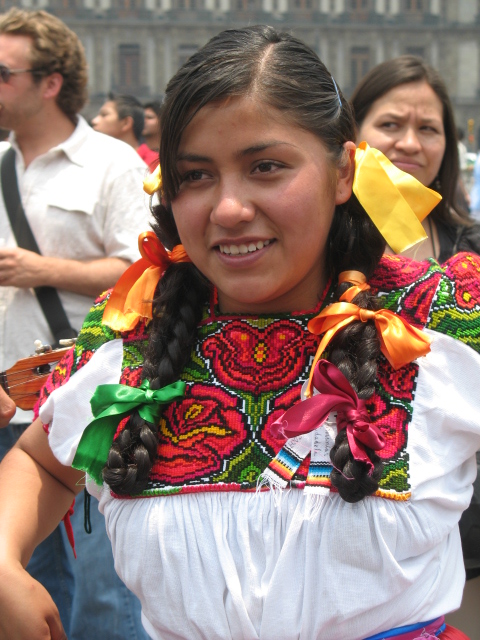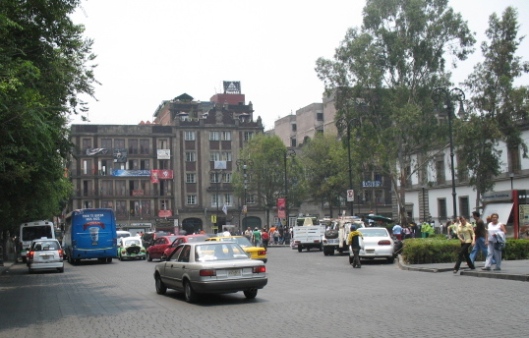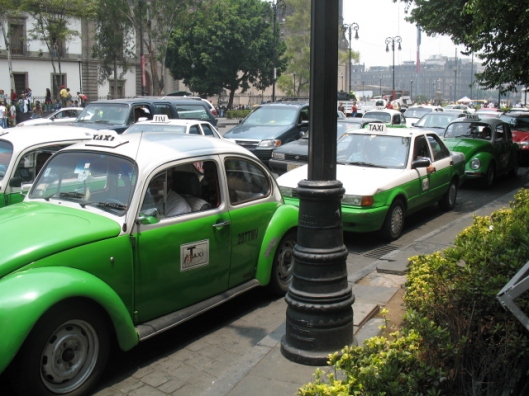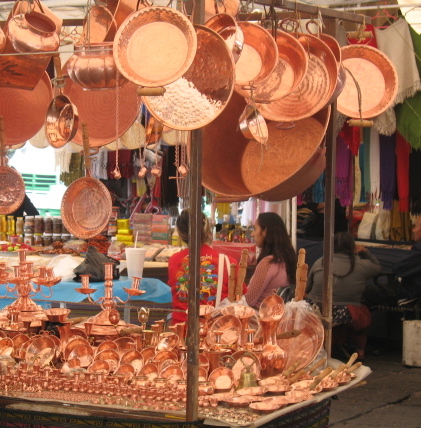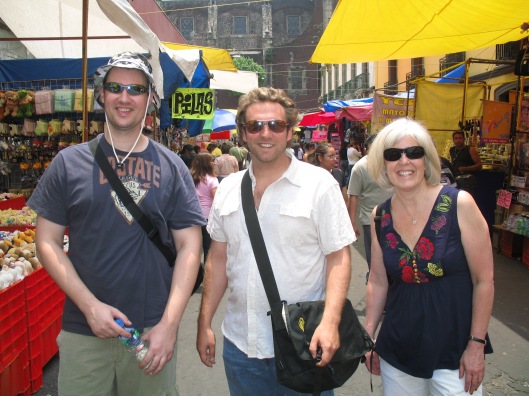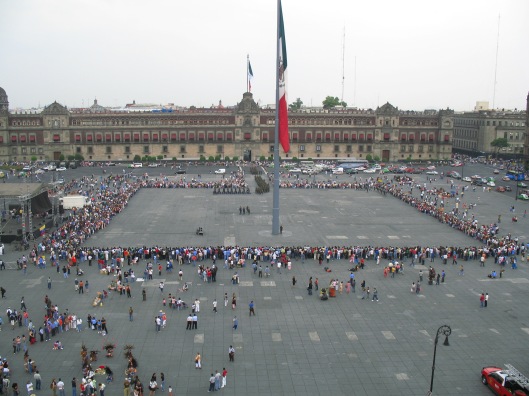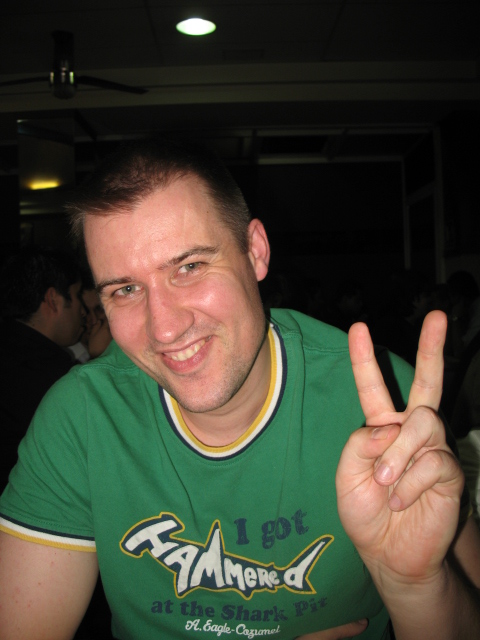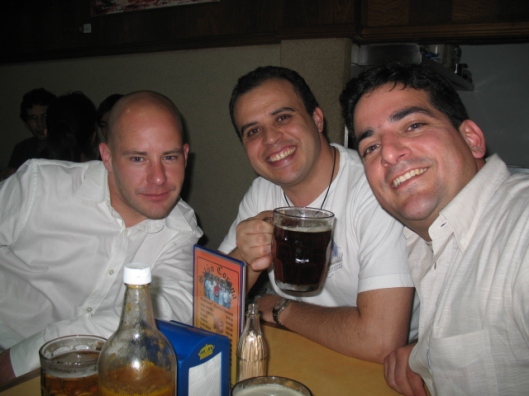Wednesday, August 13: This morning we walk to Condado to have breakfast at a nice-looking restaurant called Blonda. A group of about 20 Puerto Rican mothers are meeting for breakfast too, and their chatter and laughter fill the restaurant. They also command the complete attention of the wait staff, so of course the two of us don’t get great service. We down two cups of coffee each while waiting. When my “divorced eggs with salsa verde and red salsa and refried beans” finally do arrive, they’re artistic, light and delicious. The red and green salsas are poured on the plate in a kind of yin and yang pattern, and one fried egg sits in each color of salsa with a mound of refried beans in the middle. Mike orders Greek yogurt with fruit and granola. We both share bites of each other’s meal, as we do these days.
When we get the bill, we’re shocked by the price and we find the restaurant has charged outrageous sums for our four cups of coffee. Most restaurants give you free refills of coffee, but this one didn’t. Because of the poor service and the cost of breakfast, we decide never to return to this place.
After breakfast, we walk back to the hotel to get ready to drive to Ponce, on the south of the island. We plan to make a couple of stops before getting to Ponce. The first is Aguirre in Salinas municipality, which became a “ghost” town after the Aguirre Sugar Cane Mill, the last operational sugar cane mill in Puerto Rico, closed its doors in 1993. Sugar cane cultivation was part of Puerto Rico’s identity until the 20th century.
The first farms producing the sweetener date to the 16th century. After centuries of alternating prosperity and decline, the first decades of the 20th century saw the sugar industry reach its peak. Despite the establishment of huge sugar trading businesses, some mills backed by Puerto Rican capital also showed considerable production capacity. By 1930, there were 44 mills in operation. In the 1940s, however, the mills began to weaken due to the fall in the price of sugar, mismanagement by some administrators, and the restriction of credit to independent farmers. Strikes by workers created conflict and conditions that led to the decline and eventual closure of many of the mills in the subsequent decades.
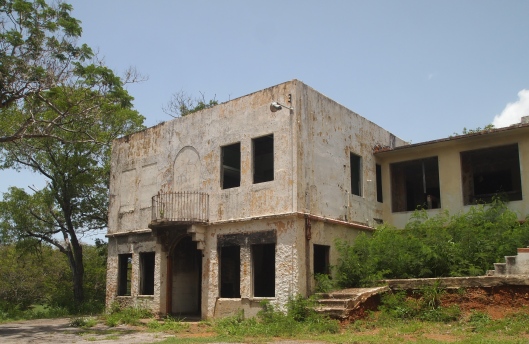
part of the closed sugar cane mill
Following the record sugar cane harvest of 1952, the industry experienced accelerated deterioration. Additionally, sugar production took a lower priority as the government undertook to industrialize the island. Between 1951 and 1968, 17 mills ceased operations. At the end of the 1960s, the government tried to rescue the industry through a recovery program. The Land Authority acquired a significant number of mills and in 1973 created the Sugar Corporation. Despite the fact that the government became the principal sugar producer in Puerto Rico, the mills, both privately and publicly funded, were shut down, one by one. (Puerto Rico Encyclopedia: Sugar in Puerto Rico)
I read about this “ghost town” in Lonely Planet Puerto Rico and thought it would be cool to see. We could see the mill, but it was behind a chain link fence and was off-limits. In addition, the old homes with their large wrap-around porches and verandas seem to still be occupied. Maybe the mill closed down, but people are still living here and doing something! Maybe ghosts inhabit the mill itself, but the town seems alive and well.

the “ghost town” of Aguirre
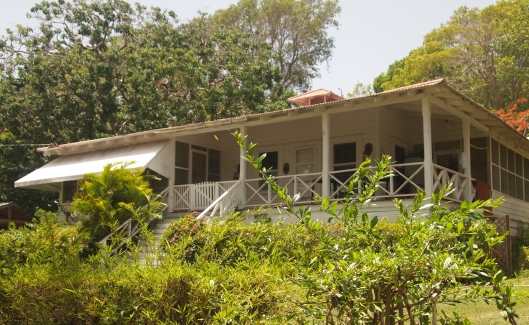
Houses in the “ghost town” of Aguirre
Before we left the hotel this morning, we made a 1:00 appointment for a tour at Hacienda Buena Vista. English language tours are limited and must be reserved ahead. Because it took us a while to find Aguirre, we worry about arriving late for the tour. Luckily, we make it with time to spare.
At the beginning of the guided tour, we are given a brief history of the original owners. Hacienda Buena Vista is a coffee plantation and estate established in the 19th century near Ponce. The plantation was started by Don Salvador de Vives in 1833. It is now owned by the Puerto Rico Conservation Trust (Fideicomiso de Conservación), who operates it as a museum. It sits on 81.79 acres of fertile land that includes a humid subtropical forest. The plantation house was built in the Spanish Colonial style, with the surrounding buildings, such as slave quarters and farm buildings, built in the local Criollo style. In the processing areas, the processing equipment, powered by water from a waterfall, is still in working condition.
Restored and operated by the Puerto Rico Conservation Trust, Hacienda Buena Vista provides a glimpse of living and working conditions in times past.
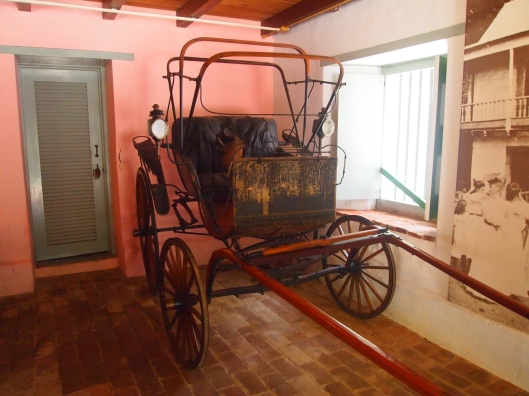
Carriage used on the coffee plantation at Hacienda Buena Vista
Burlap bags of coffee beans were shipped far and wide.
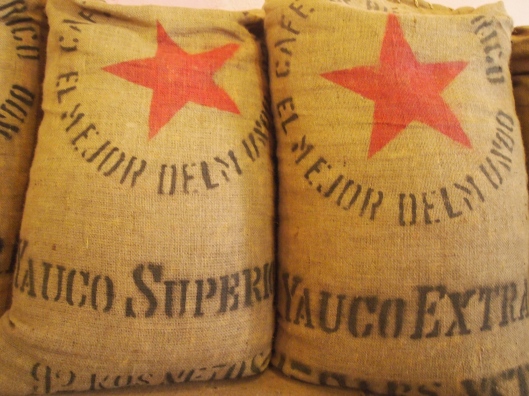
Burlap sacks of coffee beans
Tin stencils was used to stamp the destination on each bag of coffee.
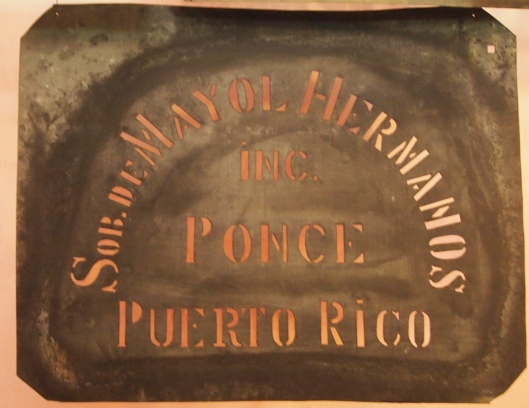
The stencils used to stamp the bags of coffee beans with their ultimate destination
We tour the farm-house. Many of the furnishings have been donated by the original family.

bedroom at Hacienda Buena Vista
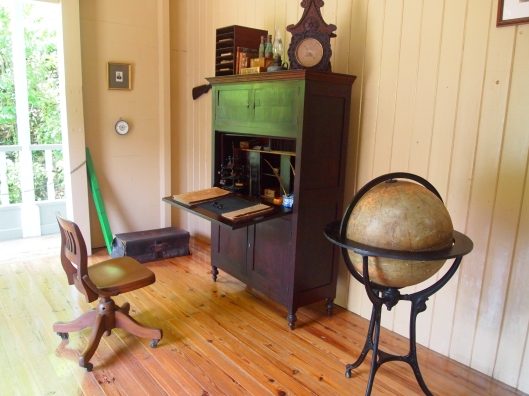
study at the hacienda

dining room

kitchen at the hacienda
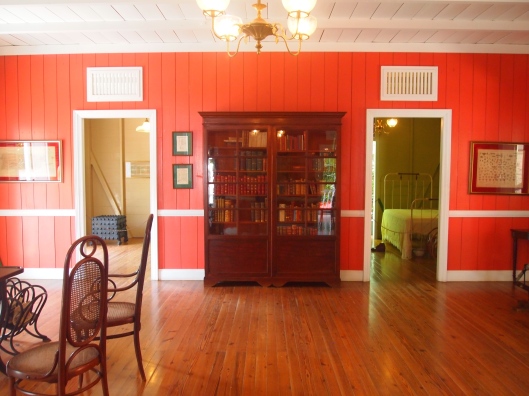
Gathering room at the hacienda
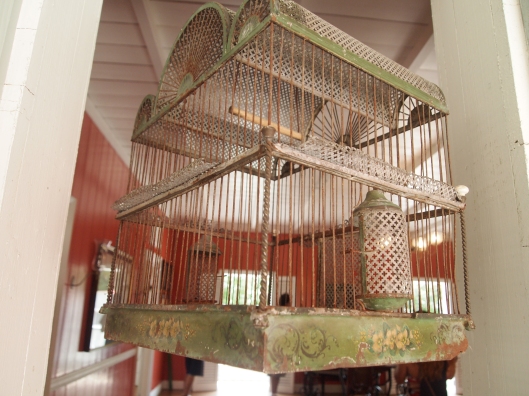
birdcage at the hacienda
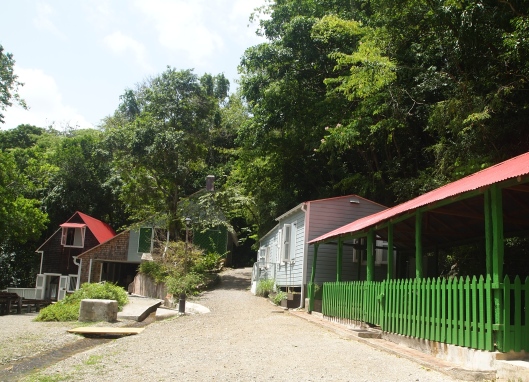
Hacienda Buena Vista outbuildings
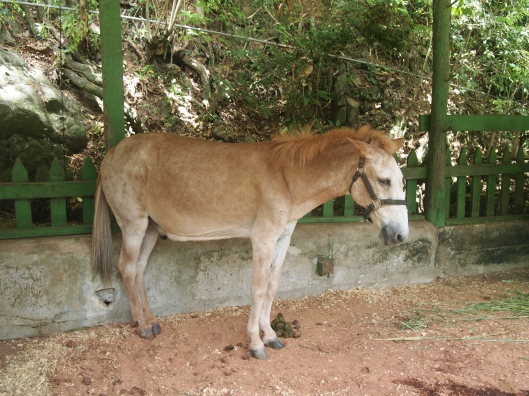
the mule, or is it the donkey?
Next, we take a walk through the forest to see the waterfall that runs the machinery. Along the way, the guide explains the coffee growing process and points out other interesting trees and plants such as the bay palm, the leaves of which are used for healing and medicinal purposes, much like eucalyptus. The waterway, which carries water from the falls to the processing equipment, is visible all along the path.

the walk through the forest
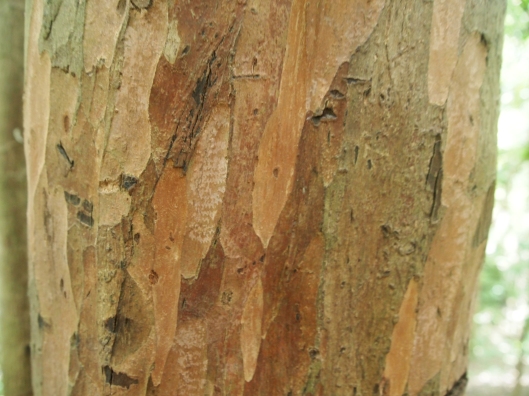
a bay palm, the leaves of which are used for healing, much like eucalyptus
When we get to the waterfall that powers the machinery, the path abruptly ends. All this time I’m expecting to see a coffee plantation. The coffee at this plantation was grown in the forest, our guide had earlier explained, so I expected to see the plantation in the forest. But the guide tells me the plantation takes about 3 hours to hike to. She says once or twice a year they take people to the plantation. I can’t tell you how disappointed I am. The whole reason we came here was to see the plantation!
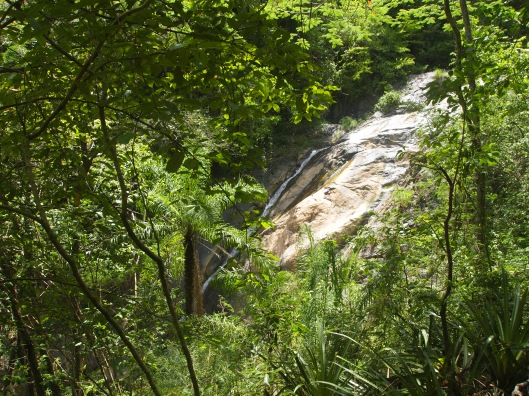
the waterfall that powered much of the operation
As we return to the processing area, we are told about the coffee process – drying, cleaning, roasting etc. It is very interesting how nature came into play in the process – they used the sun to dry the beans, but the drying racks roll into a specially designed building in case of rain.
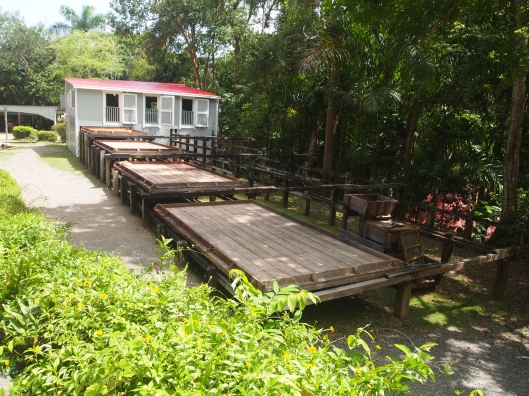
platforms where the coffee beans were dried
The Hacienda is significant for various reasons. First, it contains the only remaining example of the Barker hydraulic turbine, which was the first reaction type turbine ever made. During the tour, the machinery is operated, powered by the waterfall, just as it was during the original days of coffee production.
Second, Hacienda Buena Vista offers one of the best remaining examples of a Puerto Rican coffee plantation. In the latter part of the nineteenth century, the coffee produced in Puerto Rico and exported to Europe and the United States was considered among the finest in the world. It is said to have even been the favorite at the Vatican at the time. The Hacienda shows the coffee industry’s evolution in the region.
Sadly, we only get to see specimen coffee plants, and below, our guide shows off one of them.
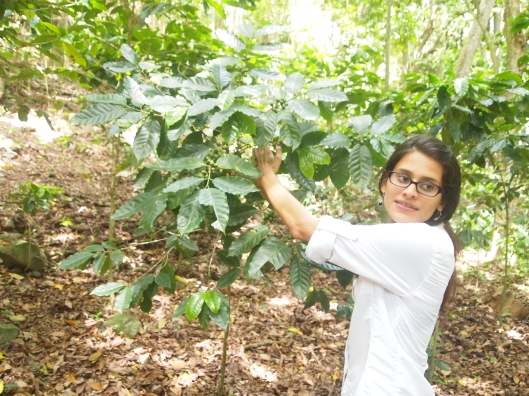
a coffee plant

close up of the coffee plant
Though we as tourists came into the Hacienda at one entrance, the real entrance is in the forest, beside this stream that flows peacefully down a hill. When guests arrived, water was let out of gates at the top of the hill and, because of bumps in the water-bed, it danced down the hill in glee, showing how pleased the hacienda owner was to receive guests. Apparently the design was inspired by the owner’s visit to Victoria Falls.

the stream at the entrance to the Hacienda. Quiet before the guests arrive

when guests arrive, gates are opened to let more water out and the water dances as it flows down due to spikes in the bed
We are also shown an example of a cocoa plant.
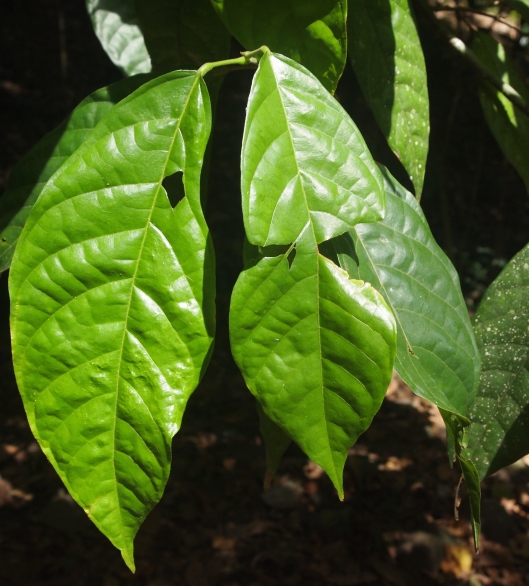
cocoa plant
We leave the Hacienda more than a little disappointed. The Hacienda is nice and the curators at the museum are kind and knowledgeable, but I really wanted to see a coffee plantation and I didn’t see one. Oh well. I’ve long ago come to understand that not everything you see while traveling lives up to its hype. I have to accept it as it is and move on.
We get in the car and head down the road to Ponce, Puerto Rico’s second largest city. Ponce was founded in 1692 by Juan Ponce de León’s great-grandson – Loíza Ponce de León. Ponce was Spain’s capital of the southern region until it fell to the U.S. in 1898.
Nearly one half a billion dollars have been spent preserving the colonial core of Ponce. The heart of Ponce dates from the late 17th century and has been declared a national treasure. It consists of plazas and churches and highly decorative colonial homes, some glorious fountains and a unique fire station (Welcome to Puerto Rico: Ponce). It also supposedly has a lot of museums.
We drive into the center of town, where we park and walk by some kind of music museum.

Music Museum in Ponce
We head toward the central square in the town, Plaza las Delicias, dating back to the early Spanish settlement in Ponce of 1670.
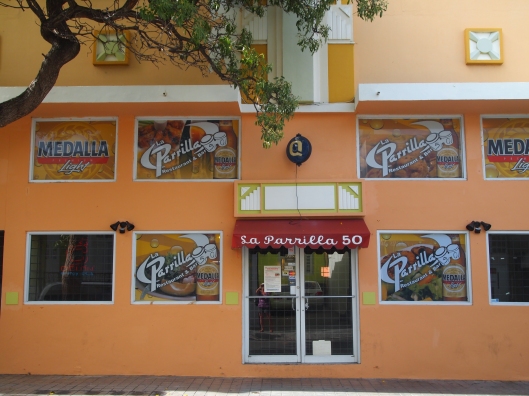
Colorful streets of Ponce
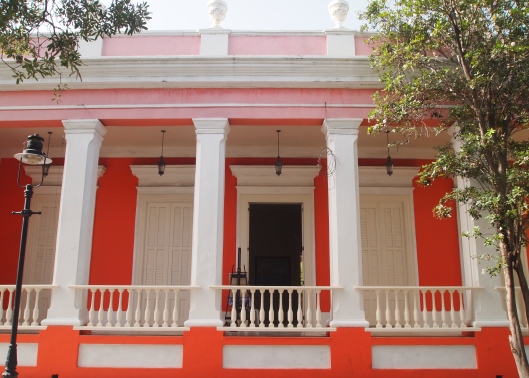
Ponce
In Plaza las Delicias, we find a lot of painted lions, much like the painted moose my son Alex and I found in Bennington, Vermont this summer. The Lion Stop (or La Parada de los Leones, Ponce 2012) concept was another idea to bring some art and culture to Ponce, increasing local tourism, and helping to boost the economy of Ponce.

Painted lions in Plaza las Delicias
Roaring Art in the Plaza (Ruge el Arte en la Plaza) started with the town of Ponce providing 15 local artists with white, life-sized lion sculptures. The artists were asked them to make them into works of art that represent their interpretation of Ponce — be it cultural, historical, political … anything they felt.
The first public exhibition of the lions was in early 2012. Now, they are permanently placed around Ponce’s main plaza, Plaza las Delicias.

another painted lion in Ponce

Painted lion in Ponce

Lion of Ponce

Lion of Ponce

lions of Ponce

painted lion in Plaza las Delicias

painted lion of Ponce
Catedral Nuestra Senora de Guadalupe is the cathedral for the Roman Catholic Dioceses of Ponce. The cathedral lies in the middle of Ponce’s town square, Plaza las Delicias. The cathedral was listed on the National Register of Historic Places in 1984 and is the seat of the Bishop of Ponce.
The cathedral has a history that dates to 1670. It has been damaged several times by fires and earthquakes. It stands out among Puerto Rico’s other four cathedrals for its intricate neoclassical design.
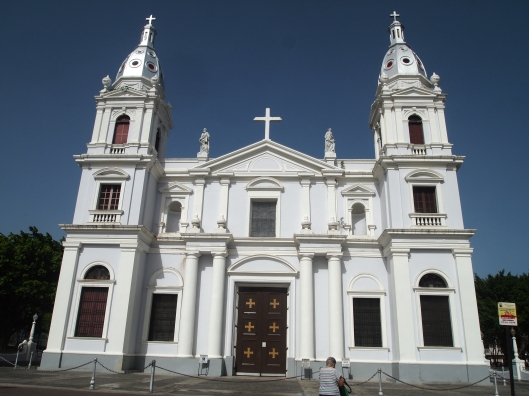
Catedral Nuestra Senora de Guadalupe

painted lion and the cathedral in Plaza las Delicias
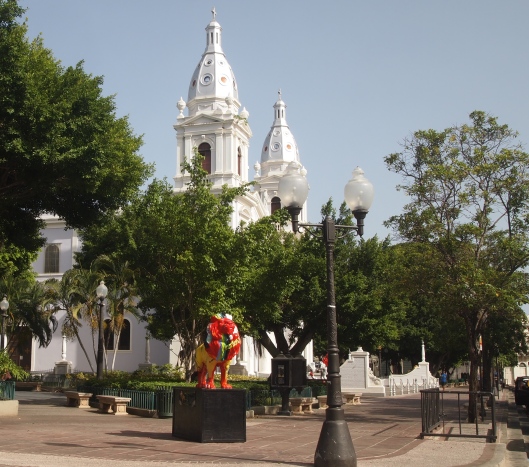
Catedral Nuestra Senora de Guadalupe with painted lion in front
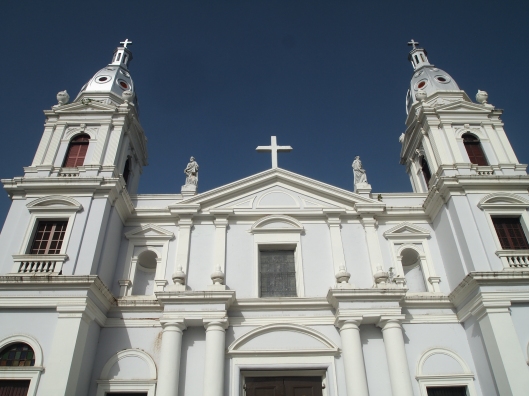
Catedral Nuestra Senora de Guadalupe
By this time, we’re famished, so we’re mostly interested in finding a place to eat. We walk past this abandoned hotel.

a now derelict hotel
We pop into a tacky souvenir shop called Utopia, which has a diner-like bar. We had already looked around the town for a restaurant and couldn’t seem to find one. We ordered boring ham and cheese sandwiches, but I guess when you’re hungry, anything will do.
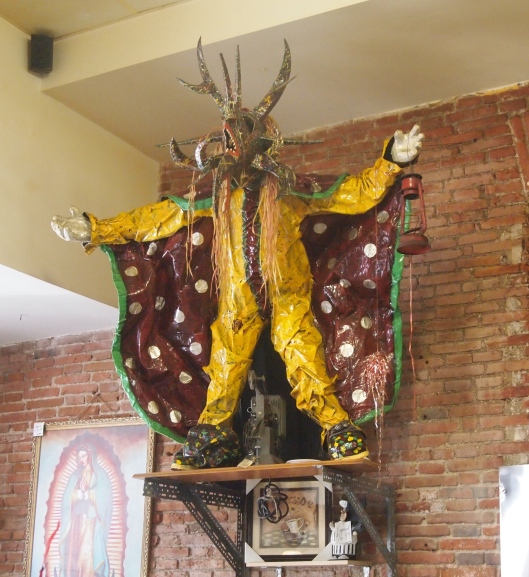
In the tourist shop where we stop to eat
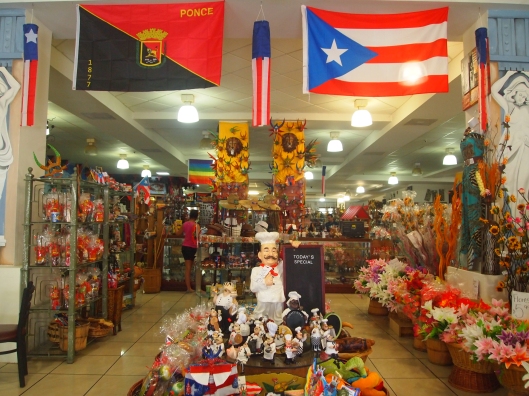
souvenirs
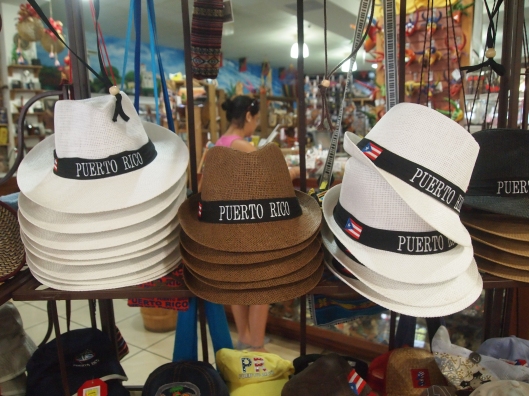
Puerto Rican hats
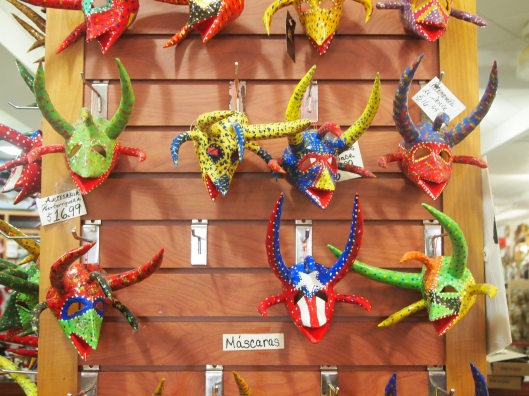
masks in the souvenir shop
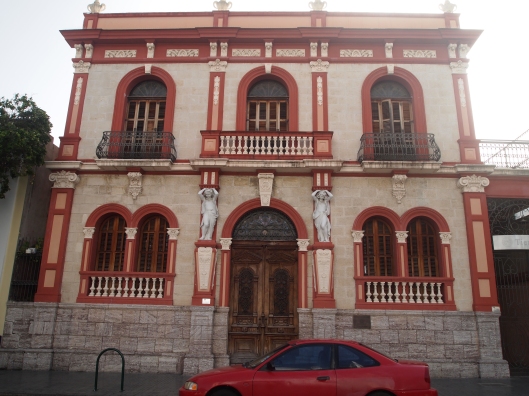
Colonial architecture
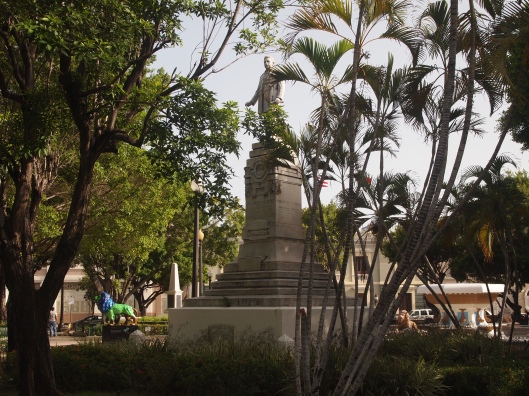
statue in Plaza las Delicias

official building in Ponce
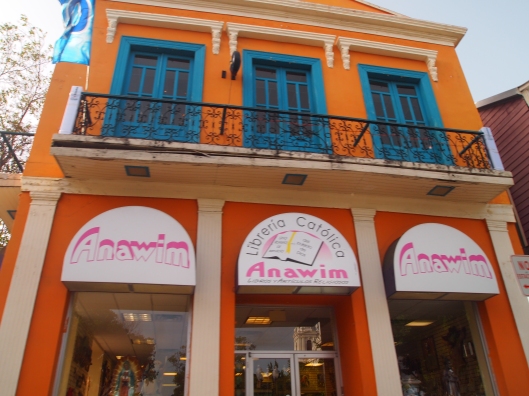
Ponce’s colorful buildings

Church in Ponce
Parque de Bombas (literally in English “Park of Pumps”) is a historic firehouse located directly behind the Cathedral in Plaza Las Delicias. It is one of Puerto Rico’s most notable buildings, with some considering it “by far the most easily recognized landmark in the Island.” The building housed the city’s main fire station for many years, and it is now a museum. Its name comes from the mobile hand-pumped fire fighting units the building once housed. It was listed in the National Register of Historic Places on July 12, 1984.
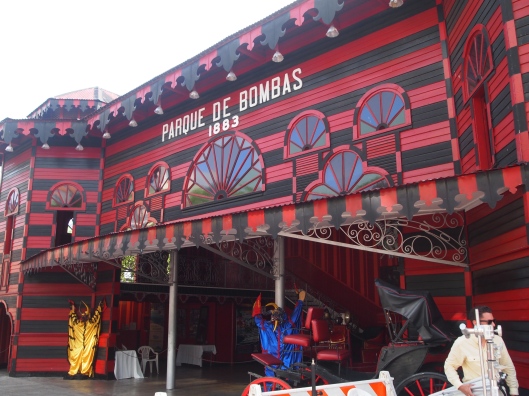
Parque de Bombas
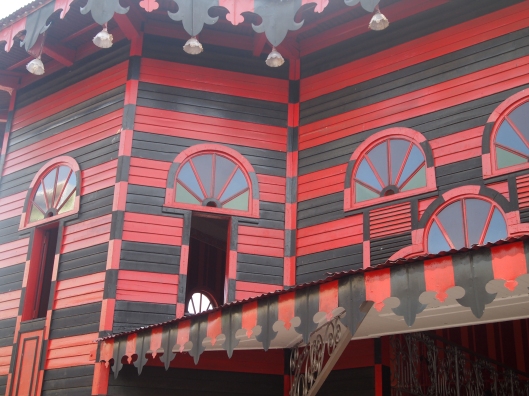
Parque de Bombas

Parque de Bombas
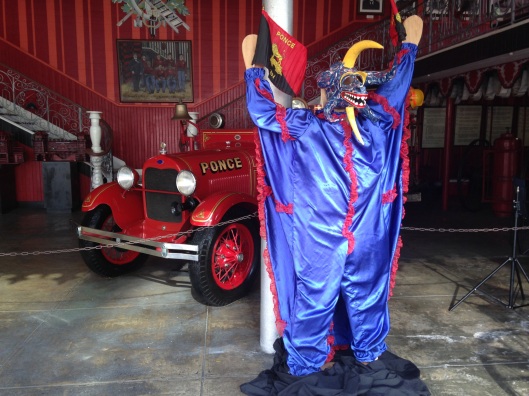
Weird statue at Parque de Bombas
We’re really too exhausted to search for museums or interesting sights in Ponce. We just want to drive back to the San Juan area and relax. It’s quite late in the afternoon when we get our car and leave the town.
Once again, during our entire drive today, we’ve been setting off alarms at the toll plazas, and every time, I turn around and look over my shoulder to see if the cops are in hot pursuit. It never happens, of course, and Mike cracks up every time he sees me do it.
Another ongoing joke between us is the level of the seats in the car. The driver’s seat is very high up for some reason, and the passenger seat is very low and the height cannot be adjusted. I feel like I can barely see over the dashboard and Mike looks like the Jolly Green Giant sitting beside me. Every time I look over at him, I crack up laughing at how ridiculous it must look to other drivers, the giant and the midget, driving along in this car that sets off alarms at every toll booth we pass through.
We have a lovely drive through the mountains and then go back to our room for rum and coke cocktails. We drink them in the jacuzzi, as we have done nearly every afternoon of our holiday. After we get dressed, we walk down the beach toward Condado, where we eat dinner at Via Appia. I have red wine and mussels, with key lime pie for dessert. The mussels are very large and chewy, not the best quality, and I feel a little queasy after. Mike orders broiled pork with arroz and beans. Also not the best. It seems it’s not a good idea to eat Puerto Rican food from an Italian restaurant.
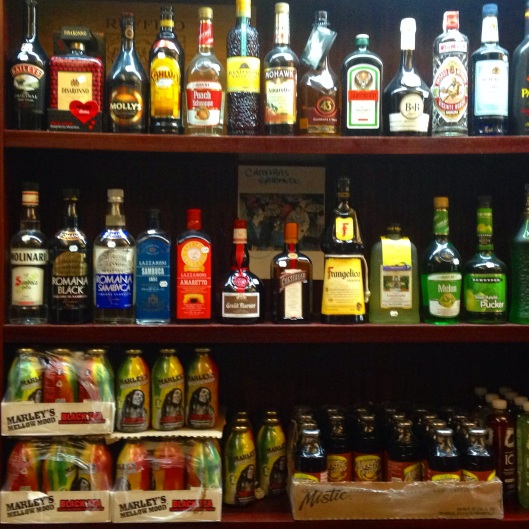
drinks at Via Appia
Tomorrow we plan to drive northwest to see the Arecibo Observatory, where the films Goldeneye and Contact were filmed.



